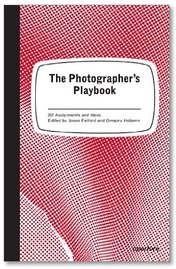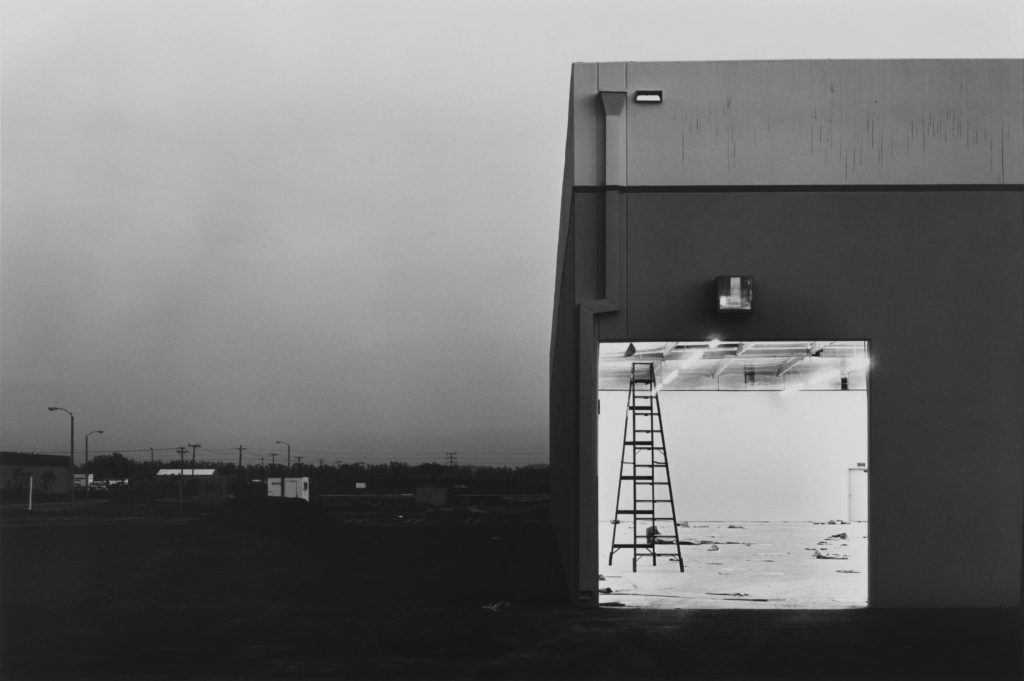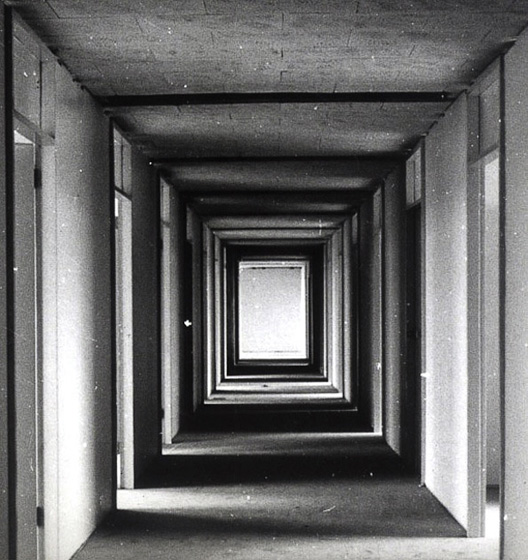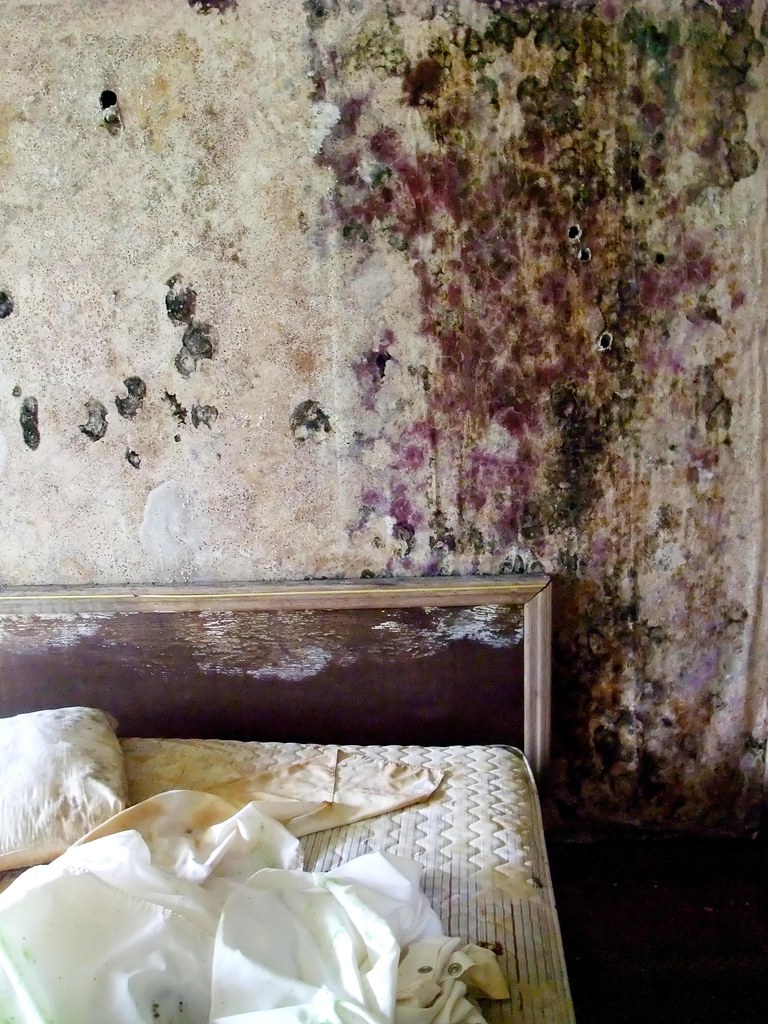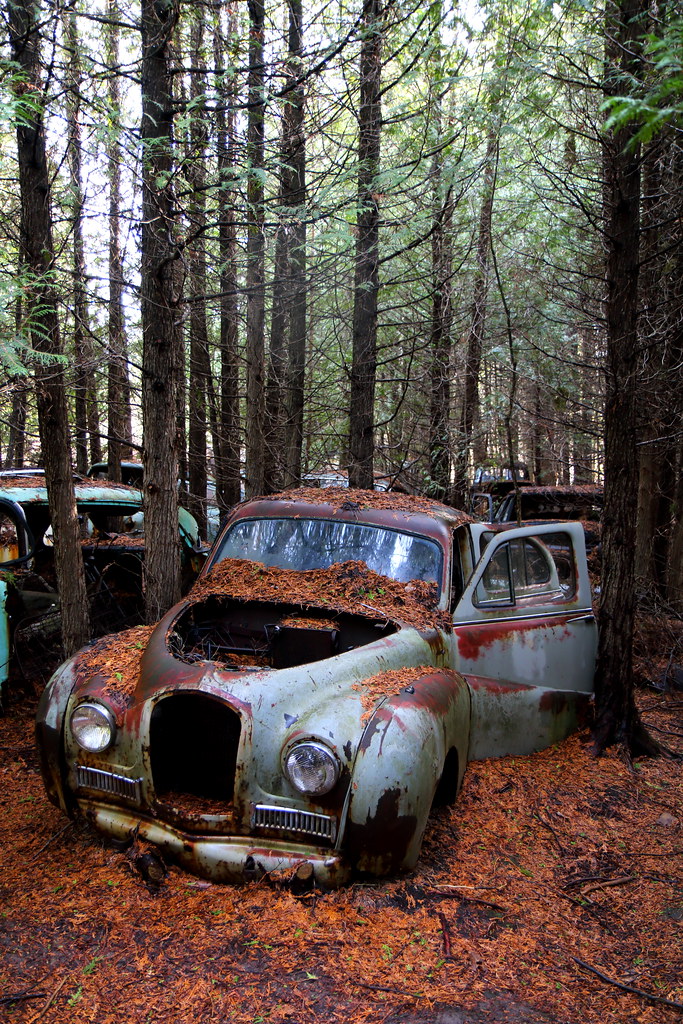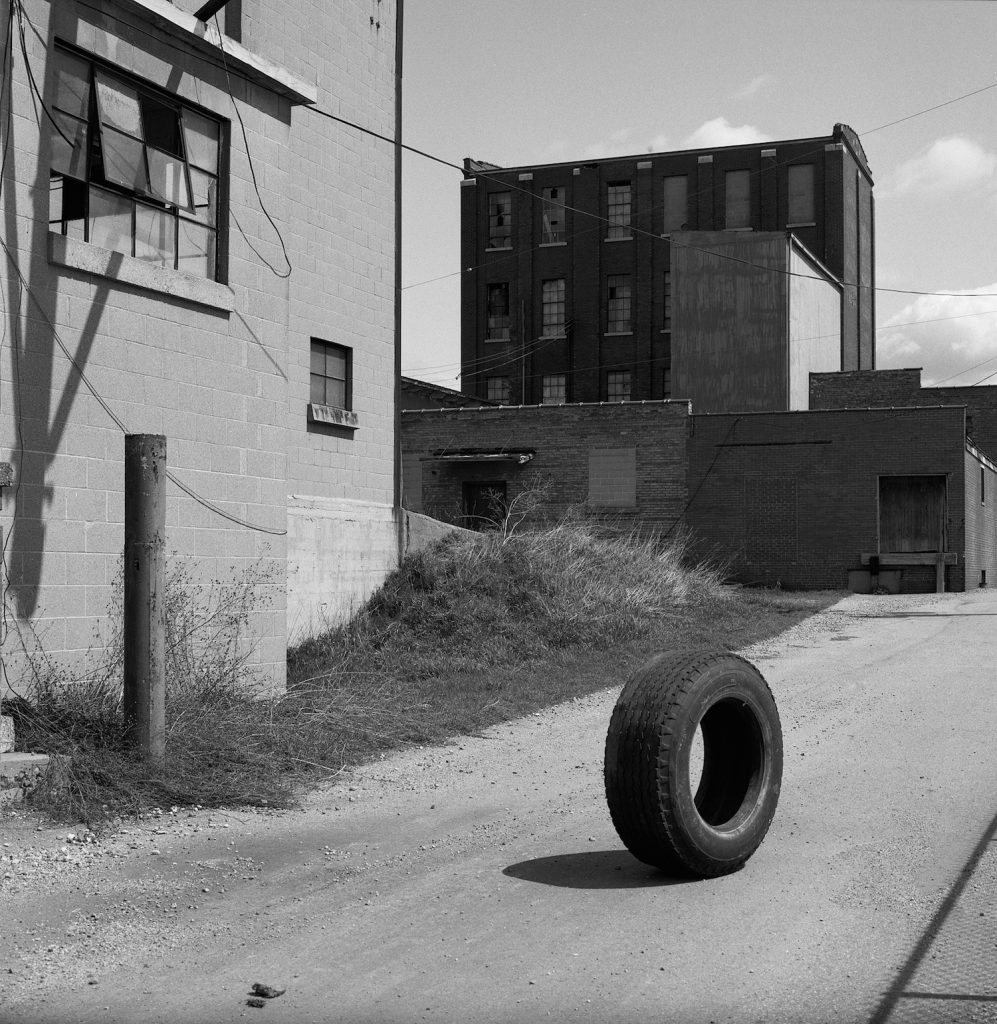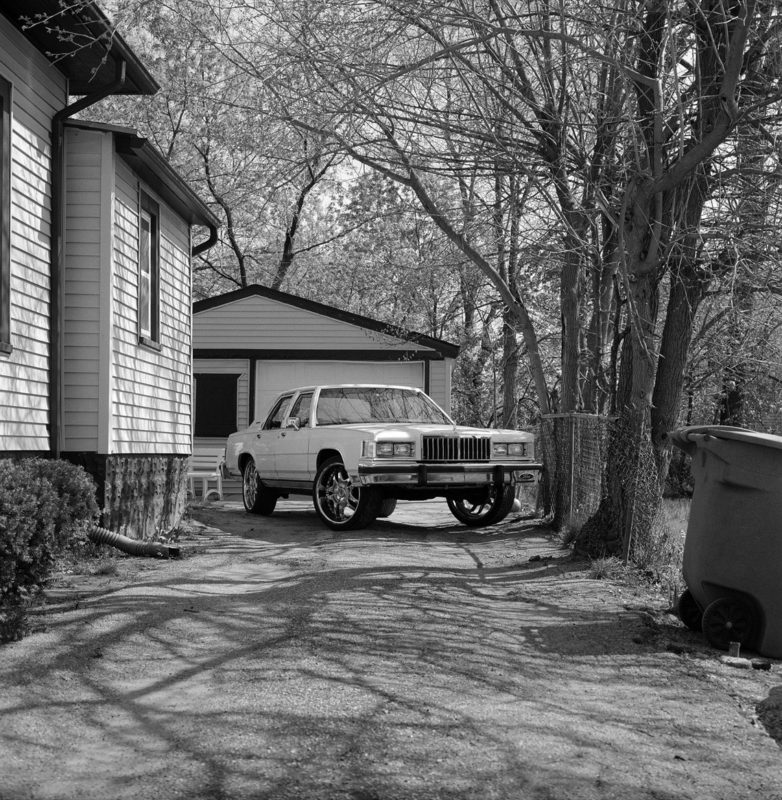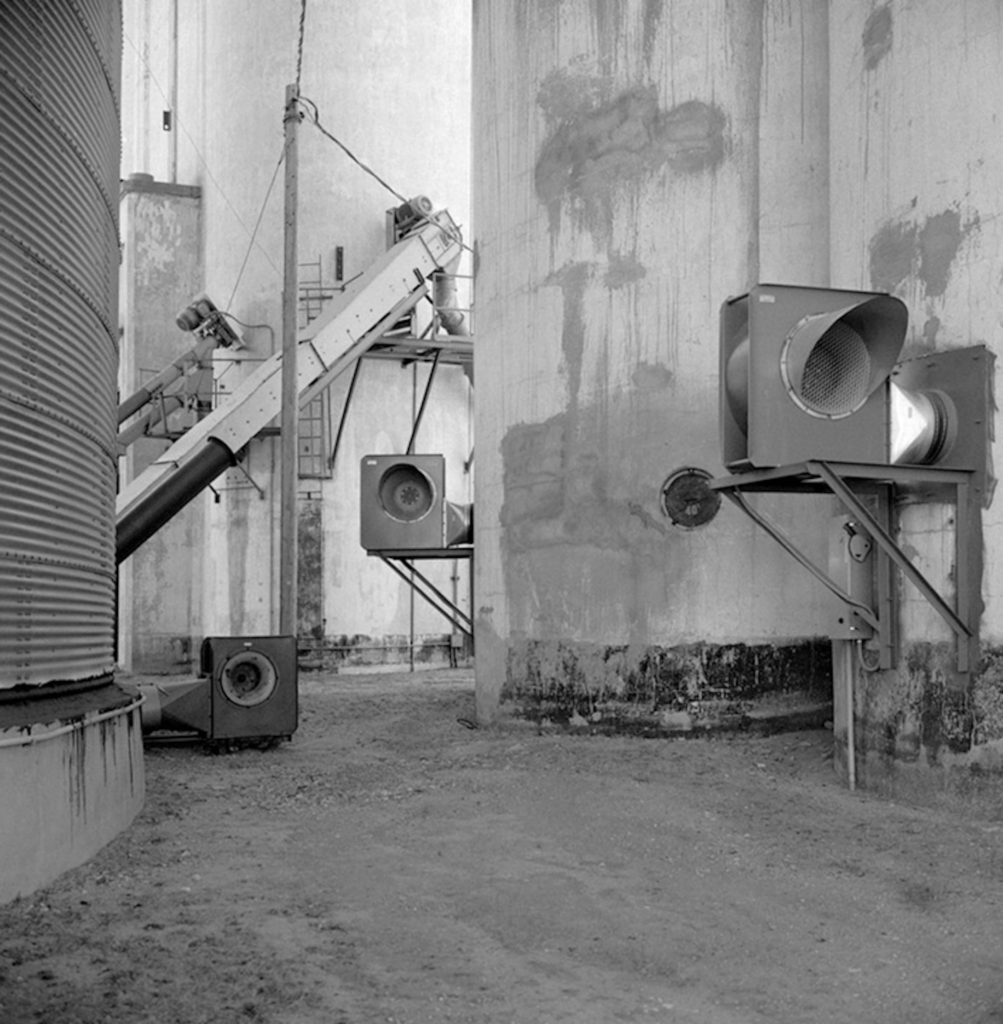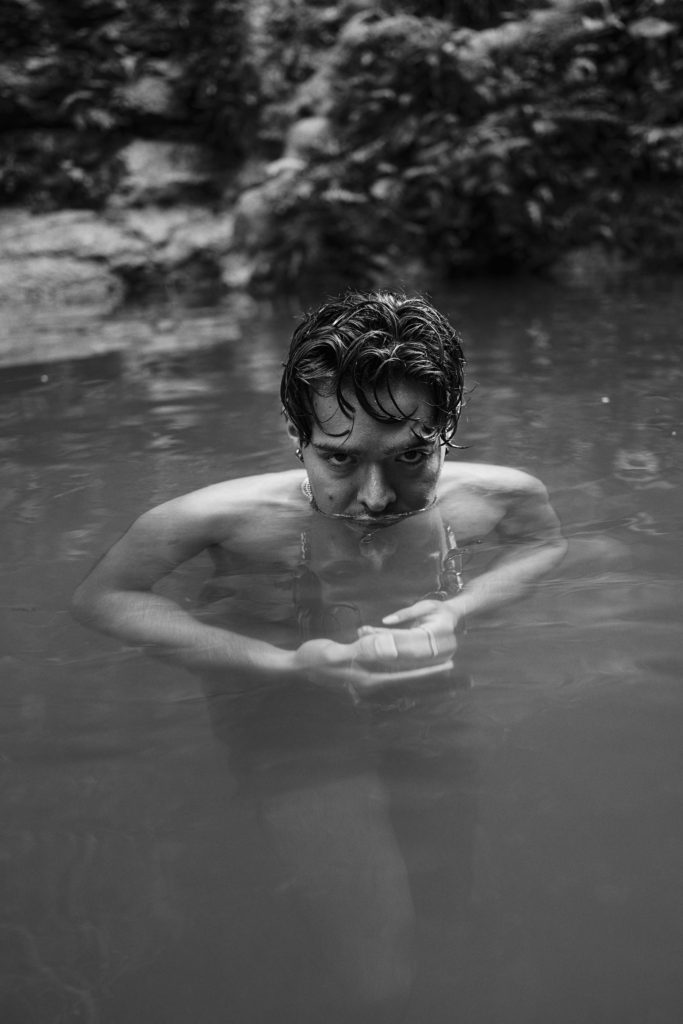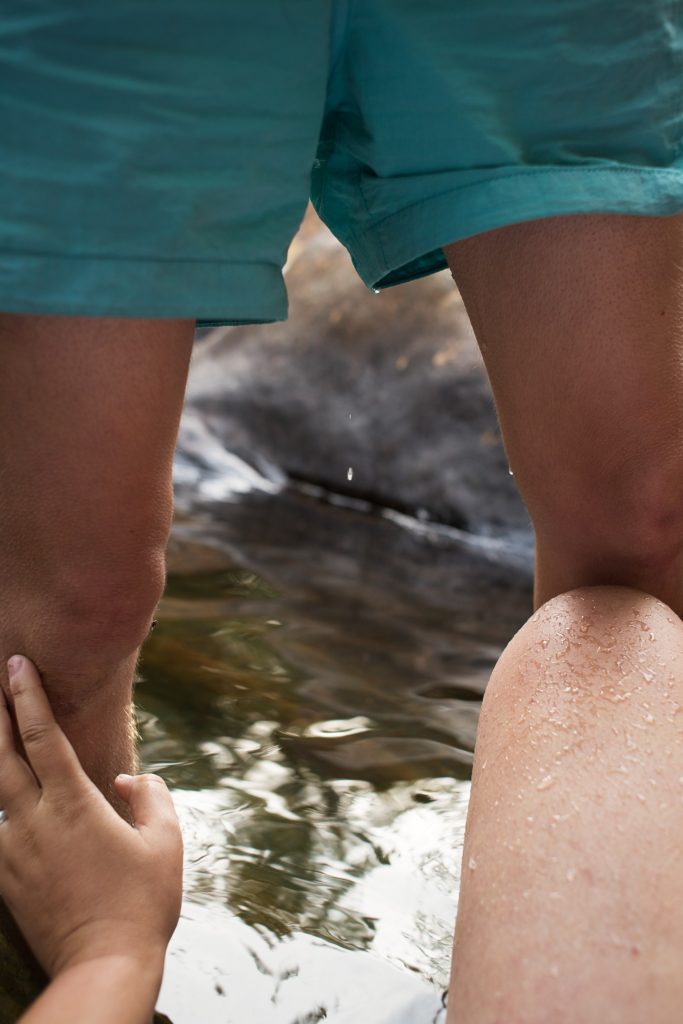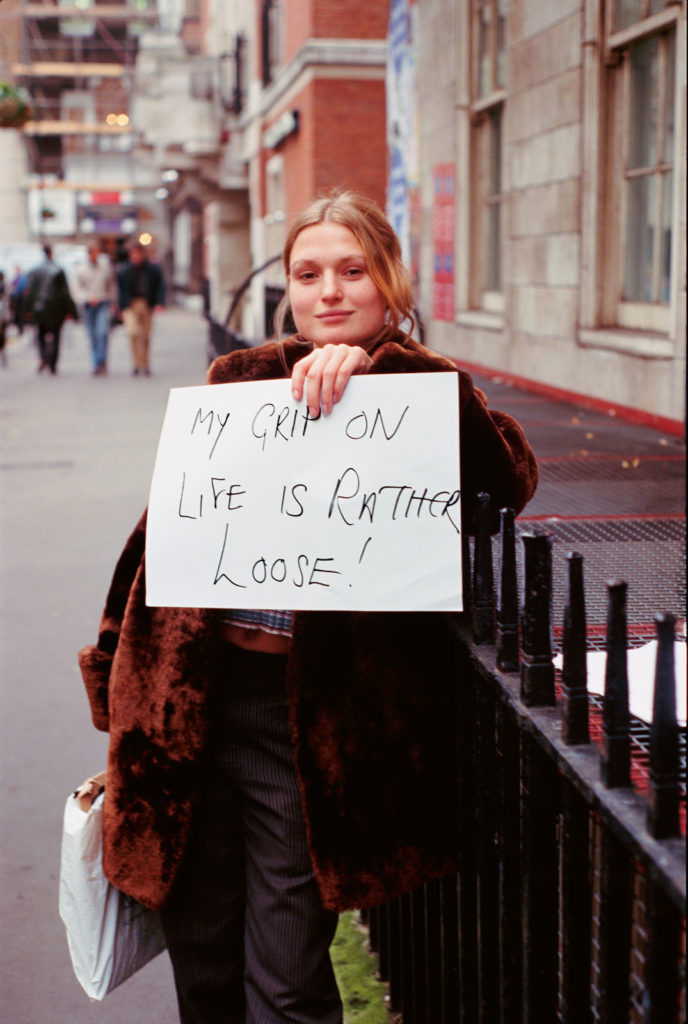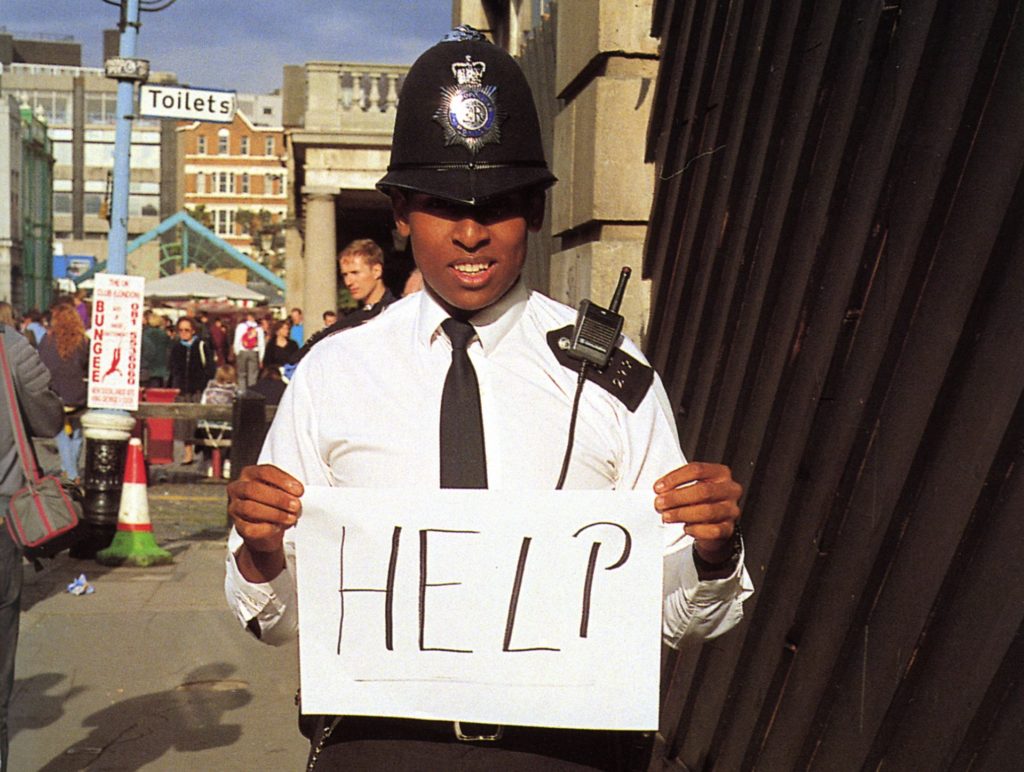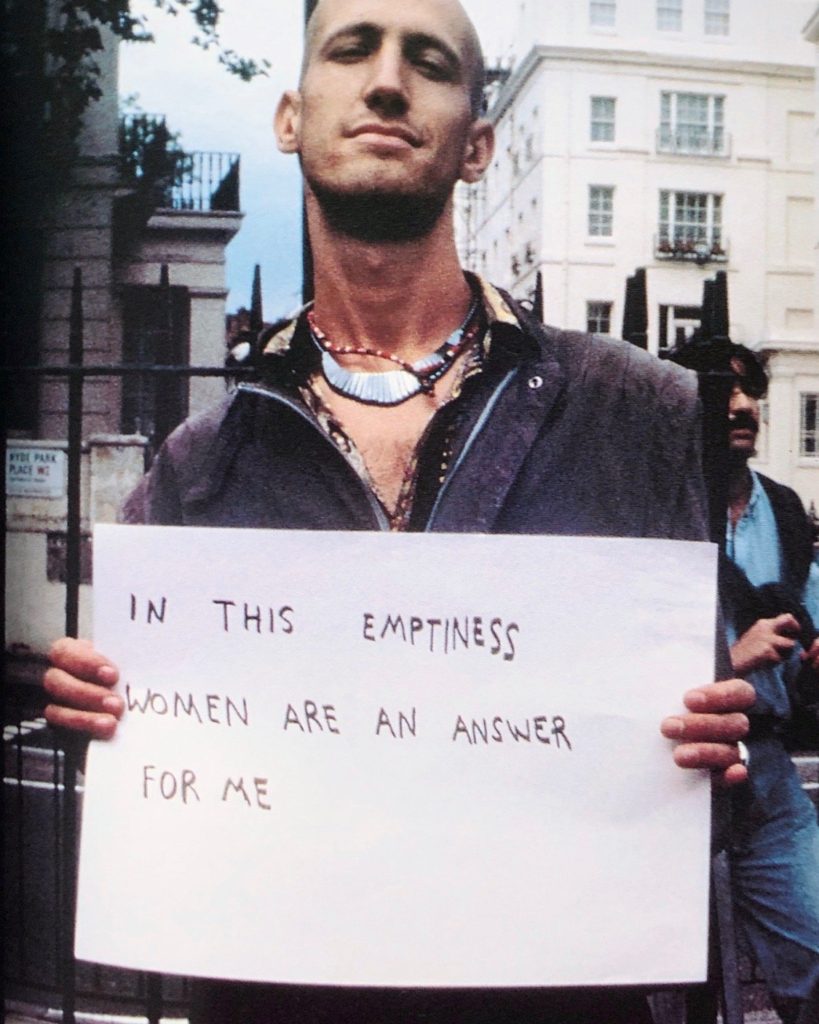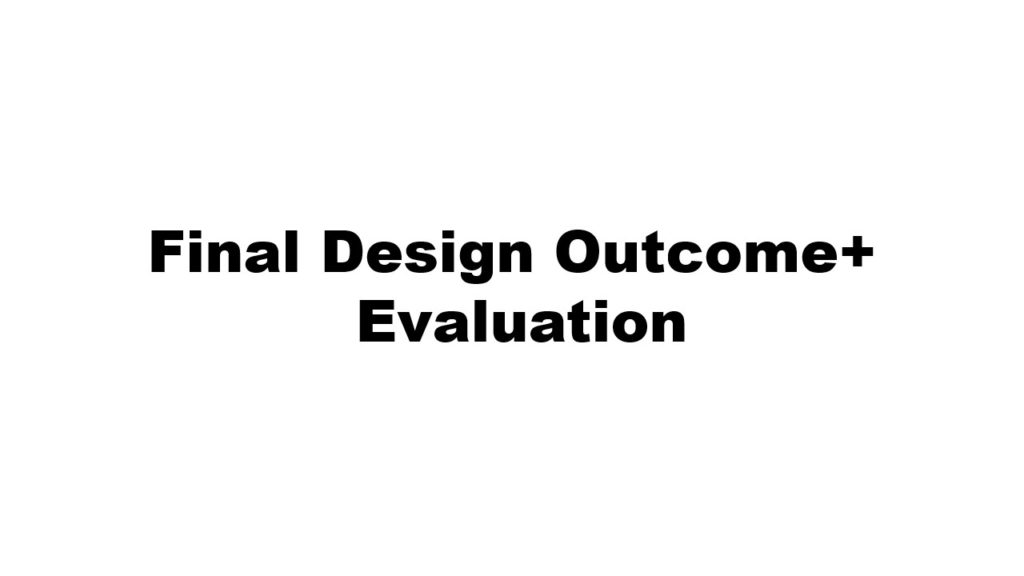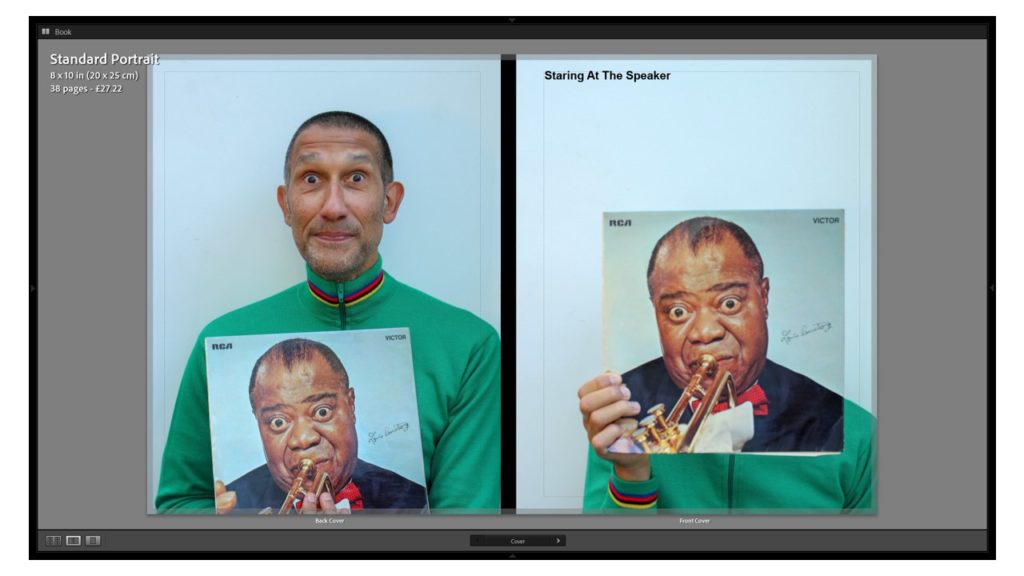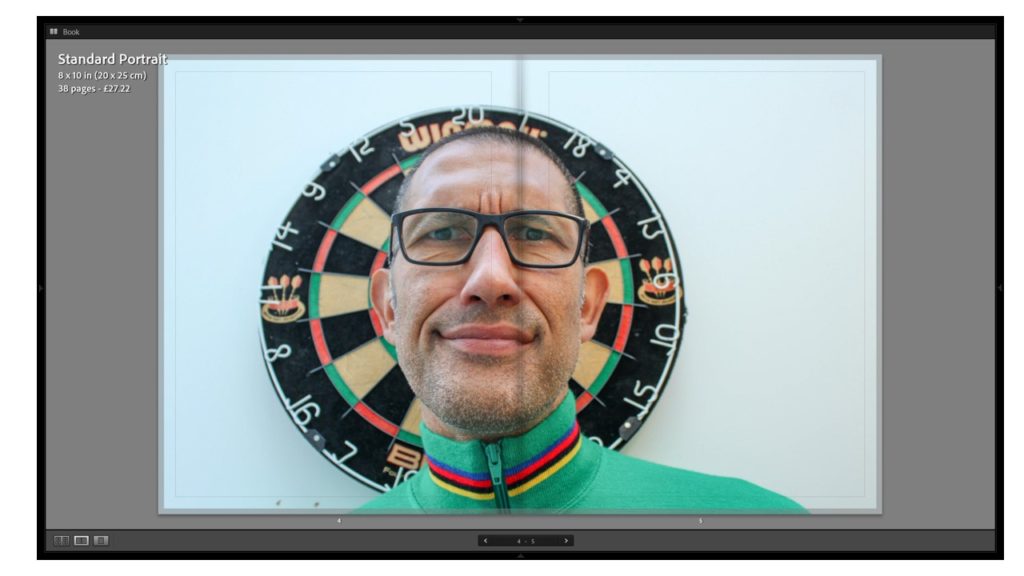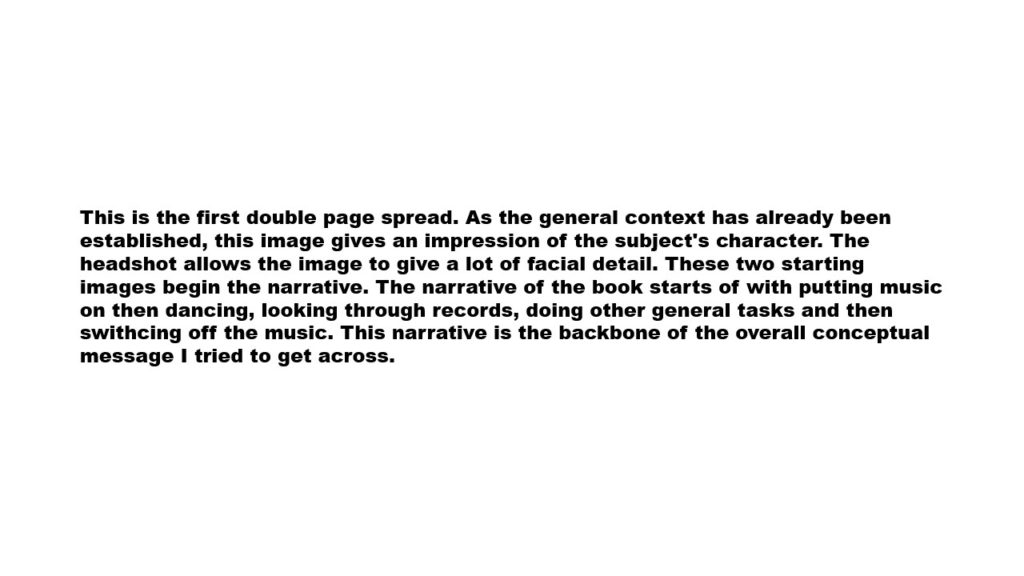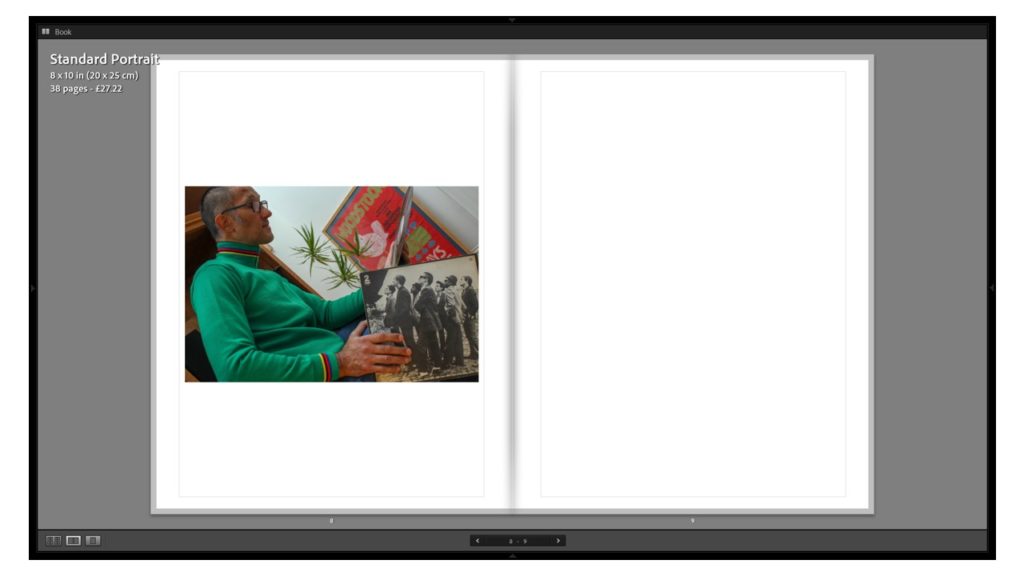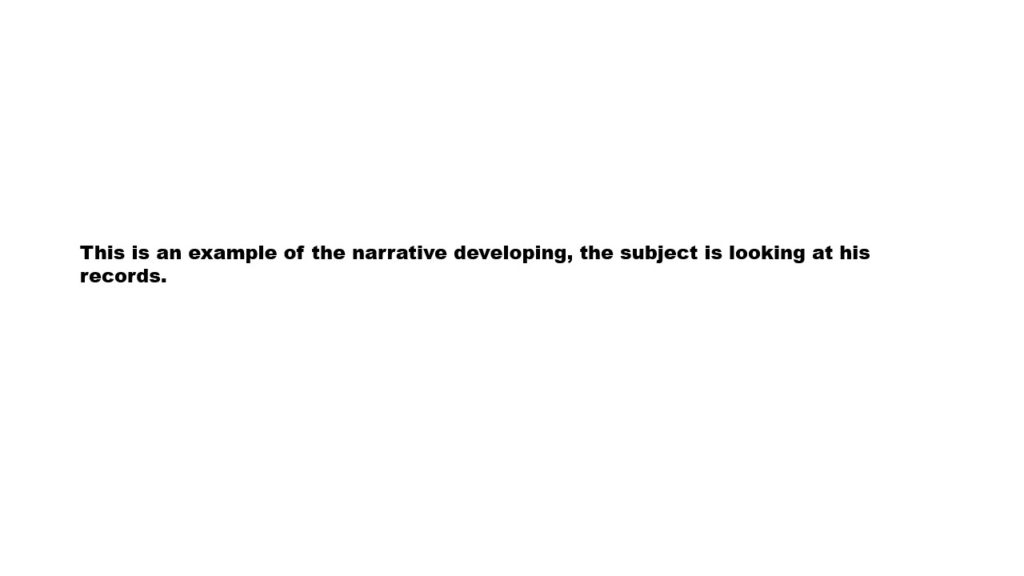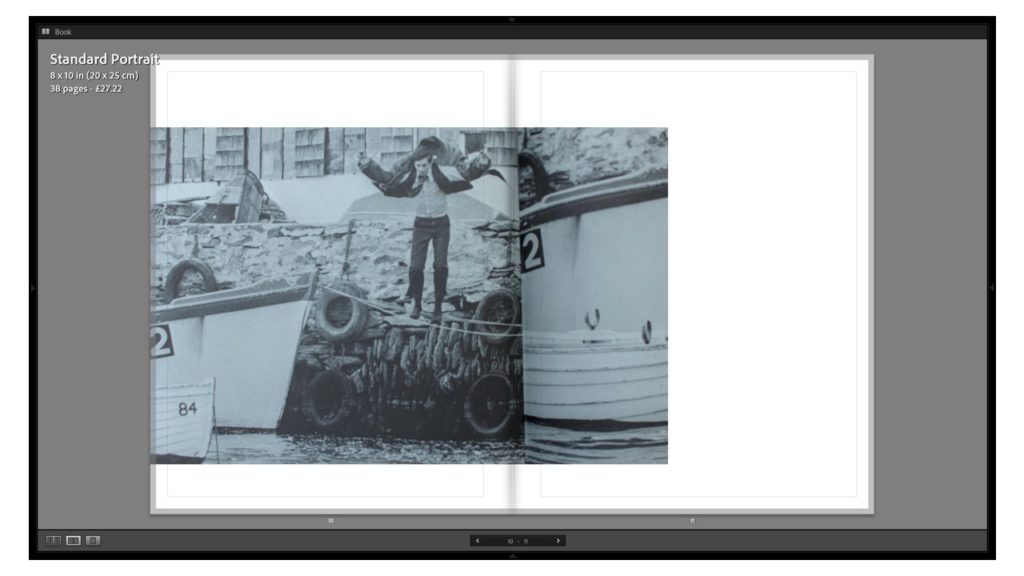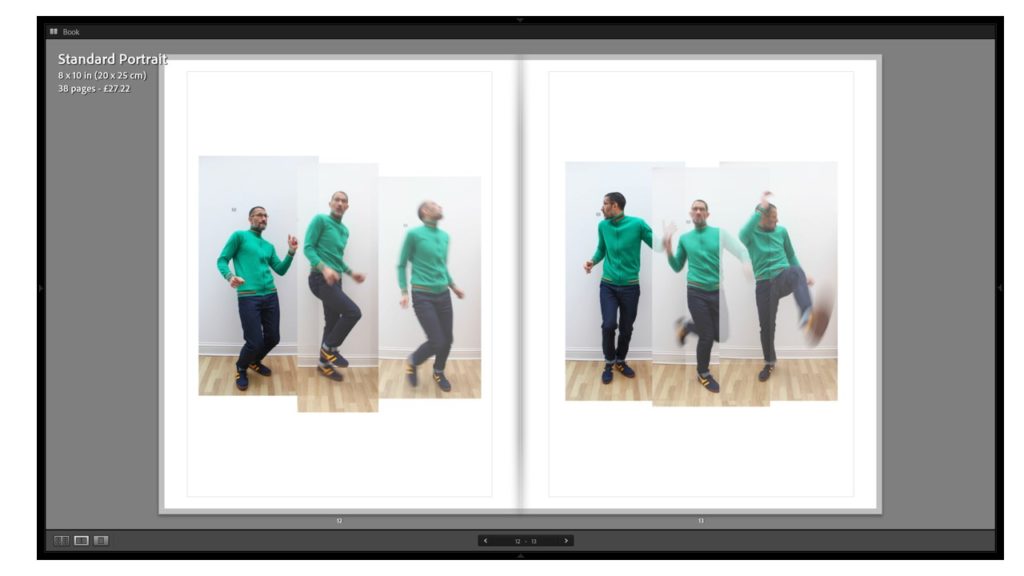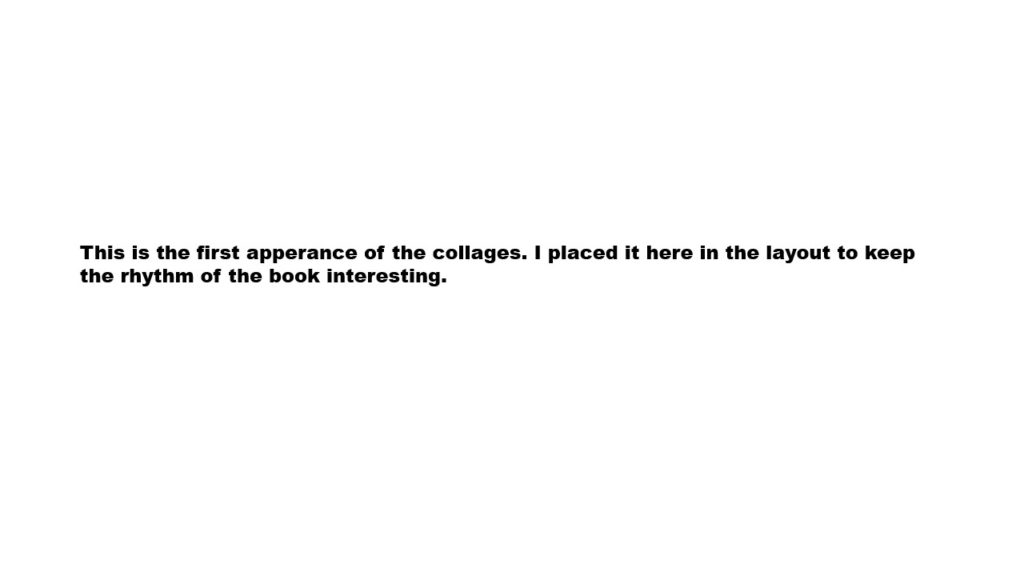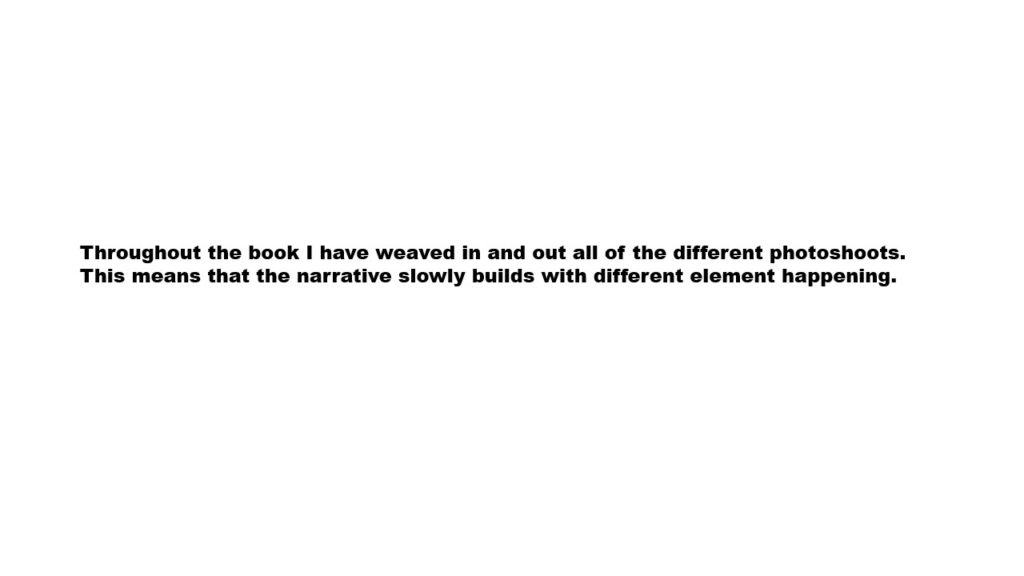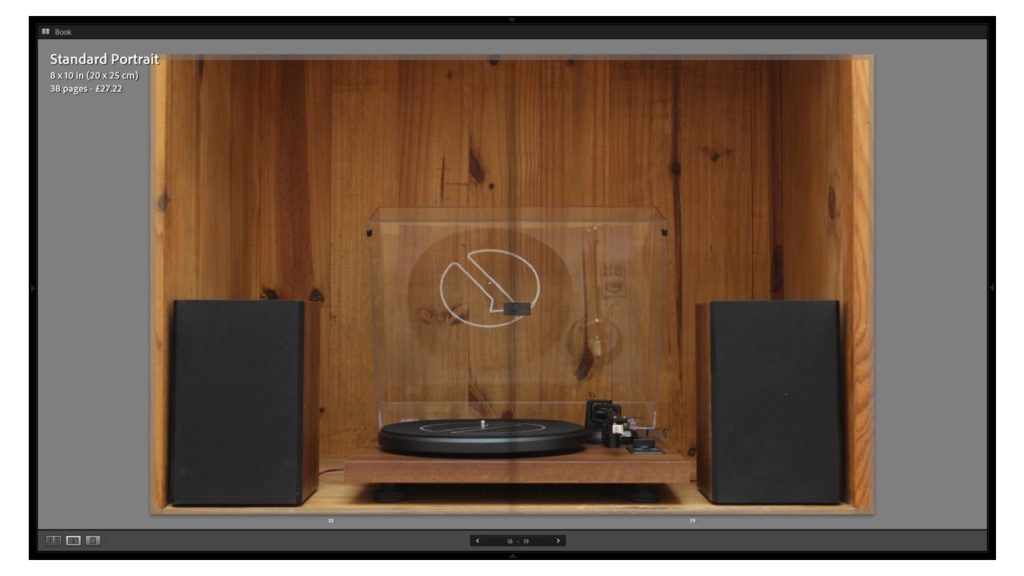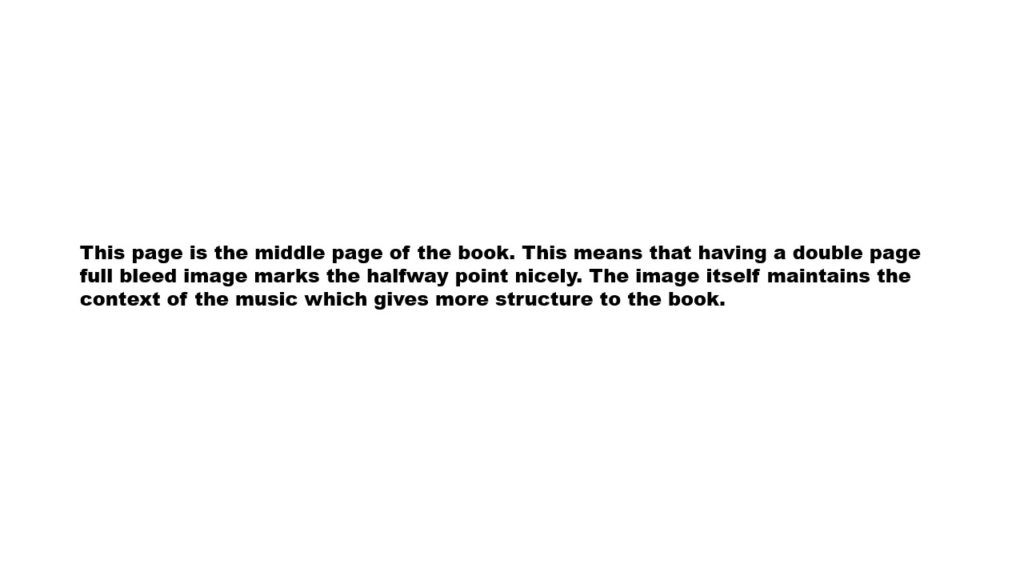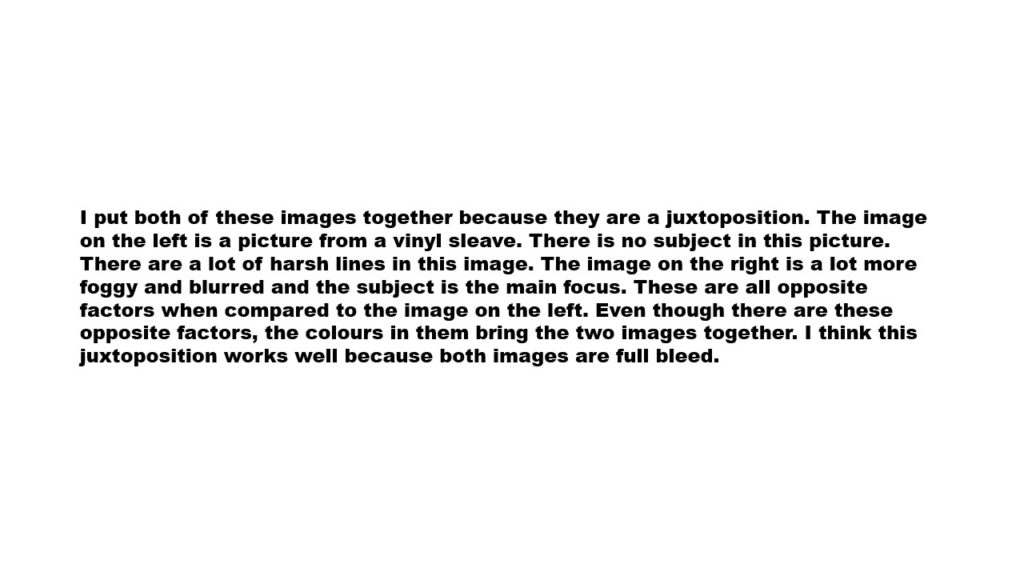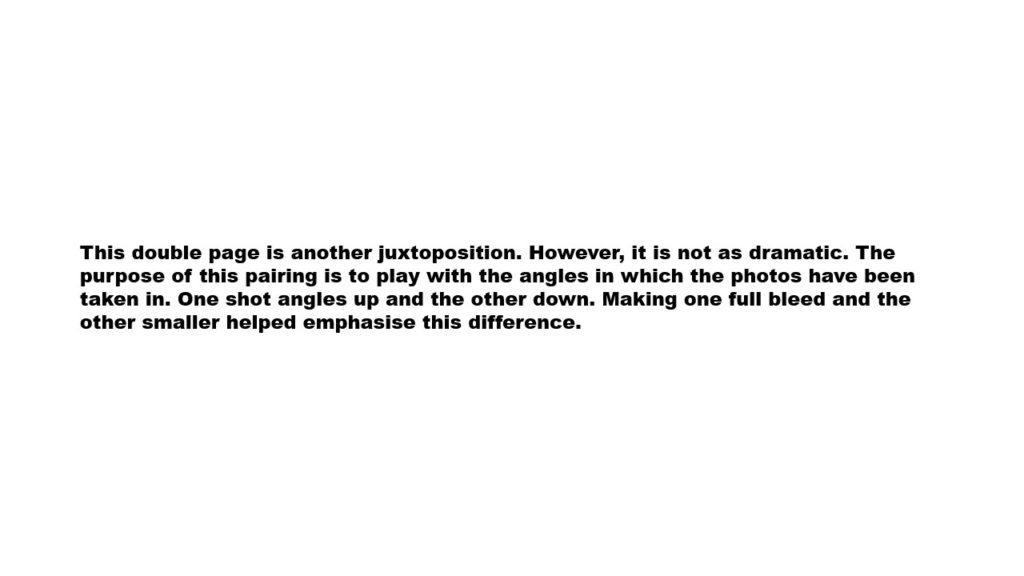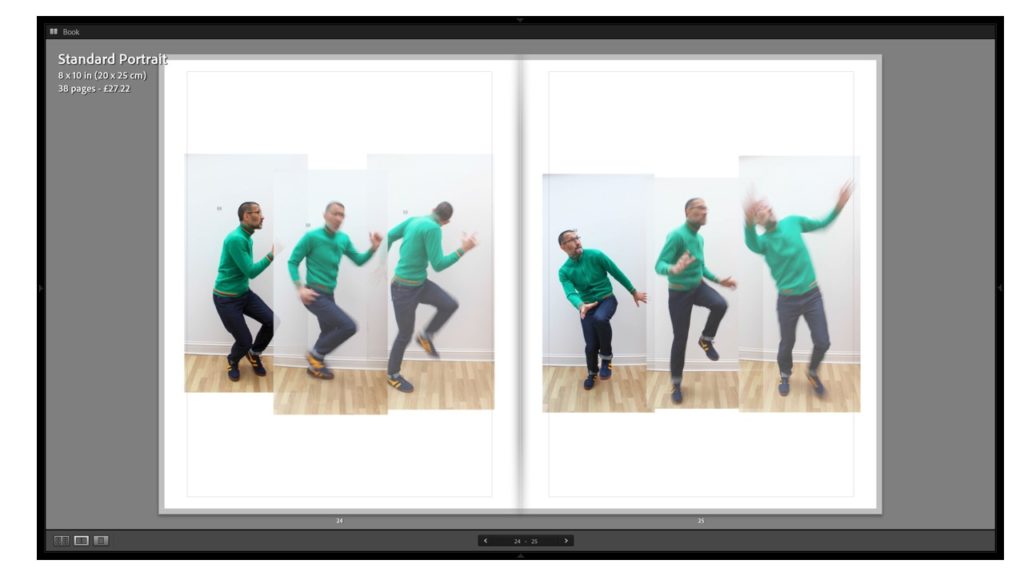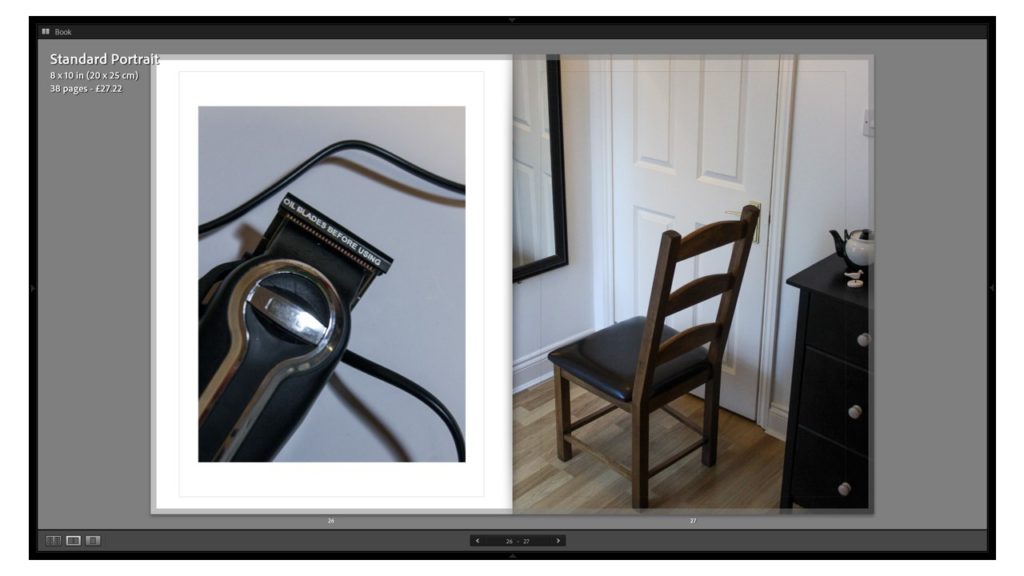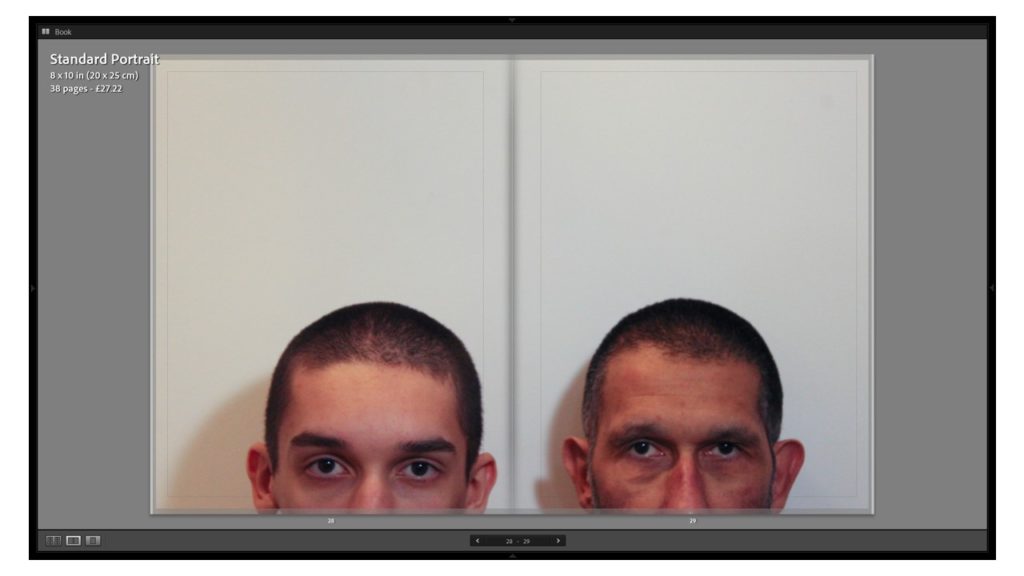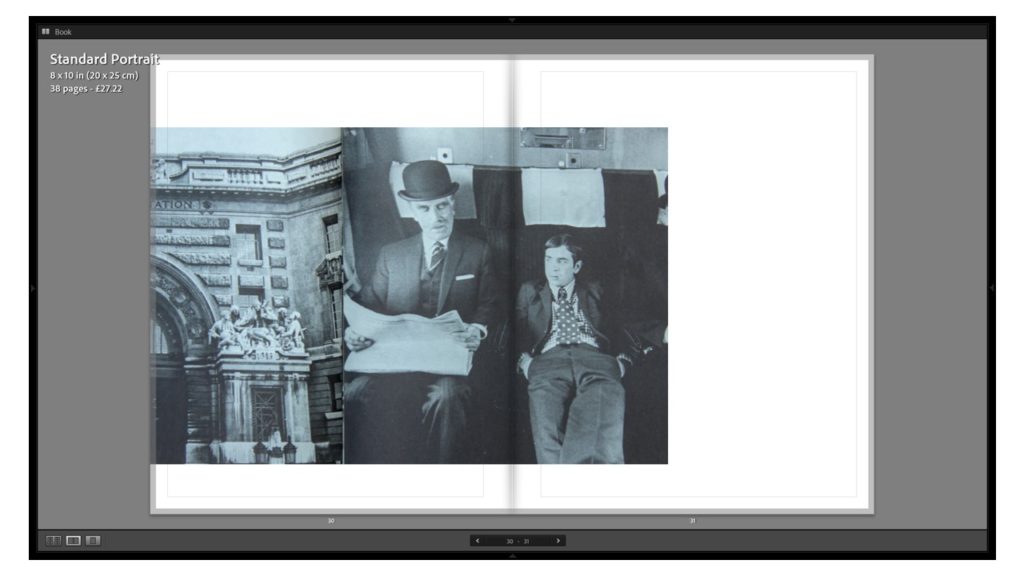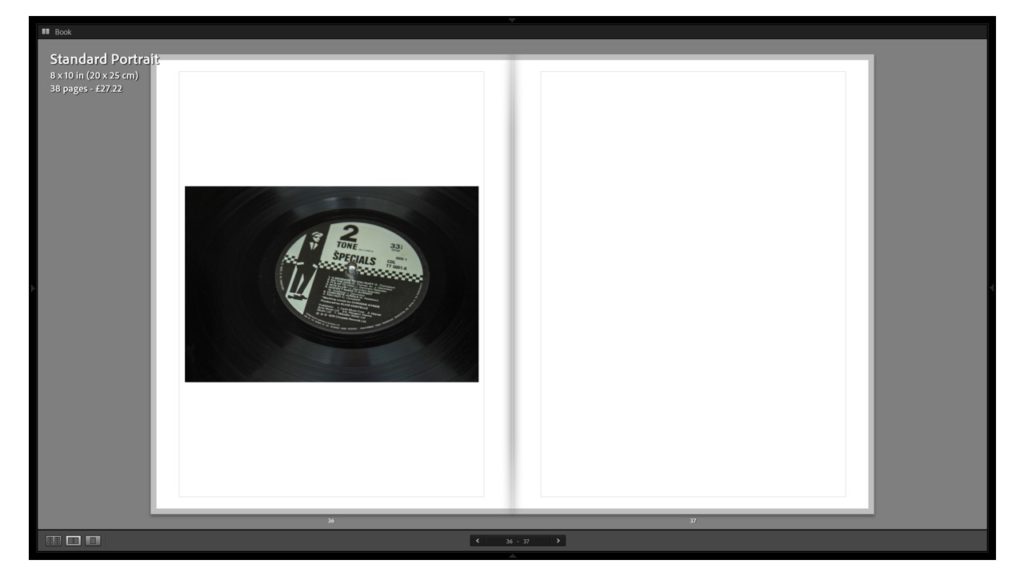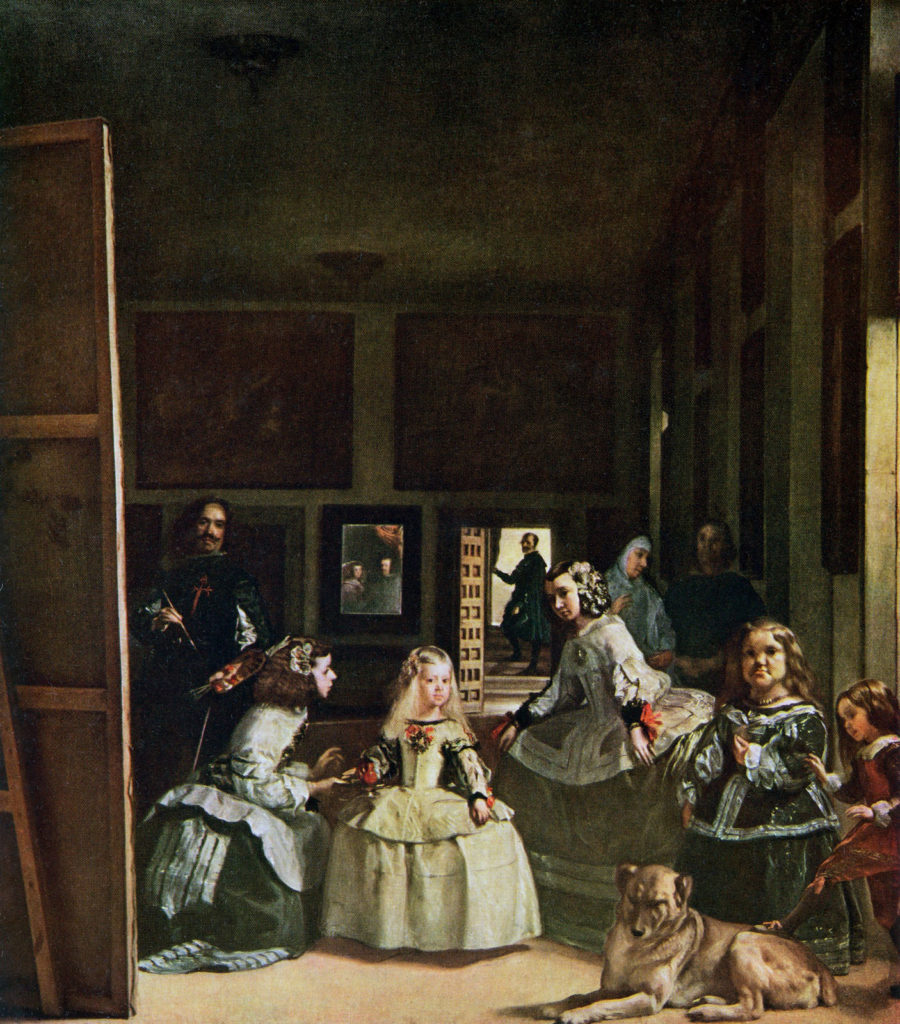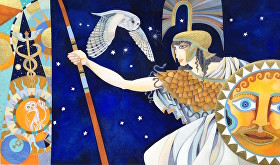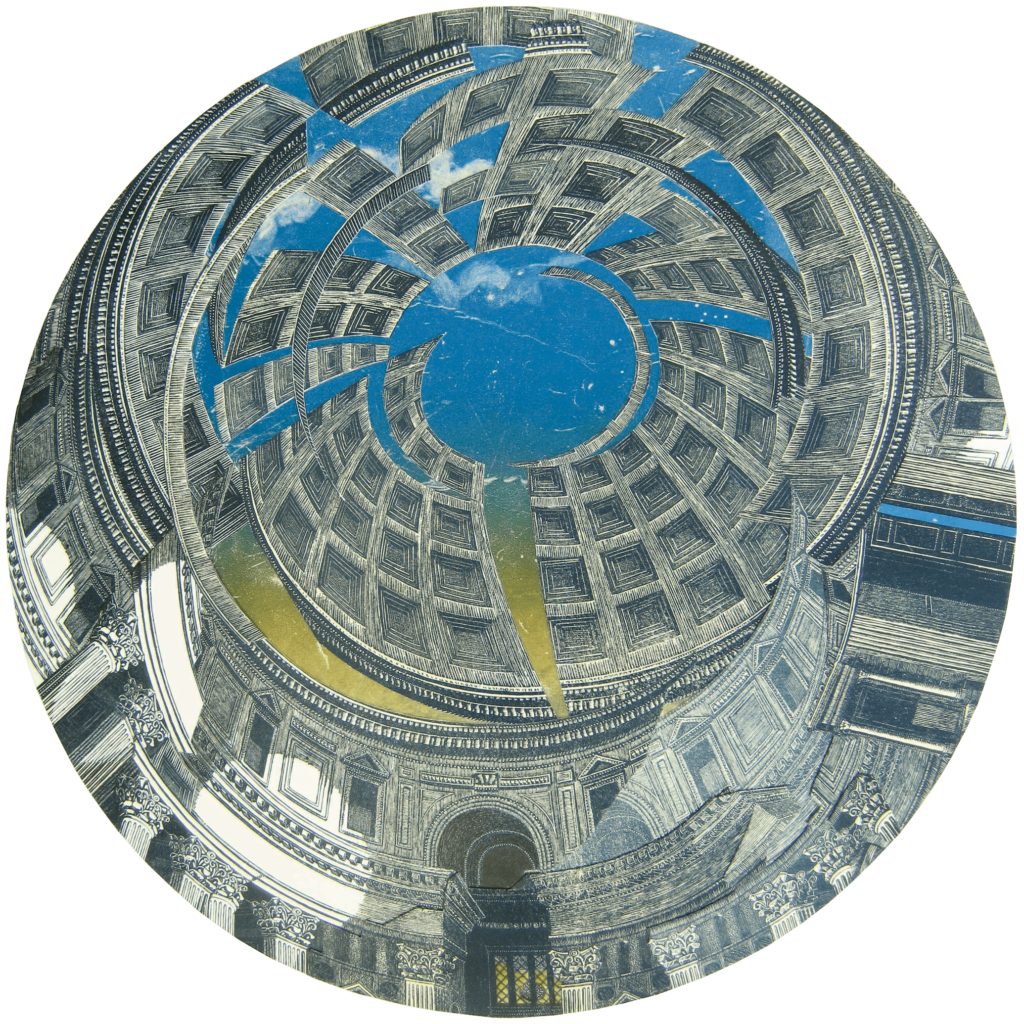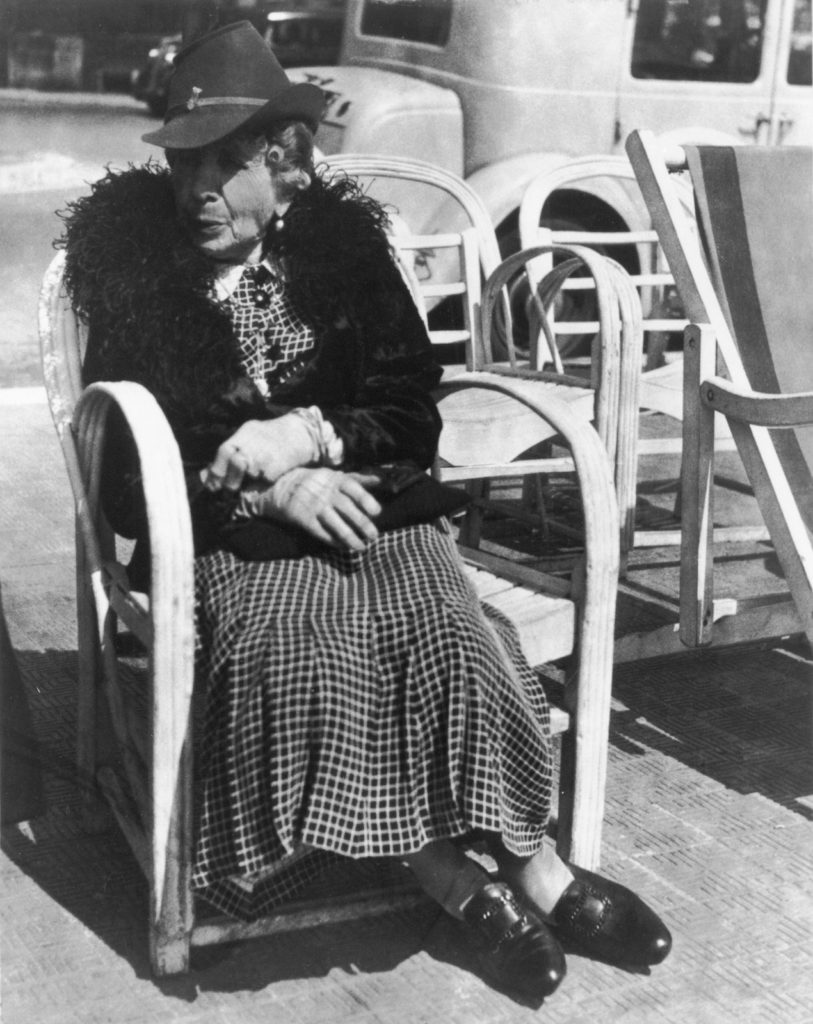Monthly Archives: March 2021
Filters
DEVELOPING YOUR IDEAS: ARTISTS REFERENCES
Each week you are required to make a photographic response (still-images and/or moving image) that relates to the research and work that you explored in that week. Sustained investigations means taking a lot of time and effort to produce the best you can possibly do – reviewing, modifying and refining your idea and taking more pictures to build up a strong body of work with a clear sense of purpose and direction
Assessment Objectives A2 Photography: (Edexcel)
AO1 – Develop your ideas through sustained and focused investigations informed by contextual and other sources, demonstrating analytical and critical understanding.
To achieve an A or A*-grade you must demonstrate an Exceptional ability (Level 6) through sustained and focused investigations achieving 16-18 marks out of 18.
Get yourself familiar with the assessment grid here:

To develop your ideas further from initial research using mind-maps and mood-boards based on the themes FREEDOM AND/OR LIMITATIONS you need to be looking at the work of others (artists, photographers, filmmakers, writers, theoreticians, historians etc) and write a statement of intent with 2-3 unique ideas that you want to explore further.
STARTING POINTS – EXAM PAPER
In the EXAM PAPER go to pages 24-27 and read all four STARTING POINTS. Select one that inspires you and that may help you develop your project. You can work alone or in a small group of 2-3.
Task 1: ARTIST REFERENCES
From your chosen starting point answer the following 3 questions:
- What are the connections with the exam theme(s)
– provide example, such as a key image, body of work, book, exhibitions. - Does the work remind you of others?
– provide contextual references, eg. other artists, movement/ism, political, social and cultural. - Plan a photographic response
– technical, visual, conceptual , eg. a process, an idea, a presentation - Make a 3-5 mins presentation – share ideas!
Task 2: ARTIST REFERENCES
Find inspiration from other sections
- Select a STARTING POINT from any of the other titles, FINE ART, GRAPHIC COMMUNICATION, TEXTILE DESIGN, THREE-DIMENSIONAL DESIGN
- Describe how this ARTIST REFERENCE connect with the exam theme(s), other artists work you have already looked at and other contextual references.
Make the blog post as exciting as possible using a combination of images, texts and hyperlinks to online sources
Task 3: ARTISTS REFERENCES
Develop your research and contextual analysis of the work of at least 2-3 (or more) photographers/ artists in depth.
Produce at least 2-3 blog posts for each artist reference that illustrate your thinking and understanding using pictures and annotation and make a photographic response to your research into the work of others.
Follow these steps to success!
- Produce a mood board with a selection of images.
- Provide analysis of their work and explain why you have chosen them and how it relates to your idea and the exam themes of TRANSITION and/or FREEDOM and/or LIMITATIONS
- Select at least 2 key images and analyse in depth, TECHNICAL (lighting, camera), VISUAL (composition, visual elements) (interpretation, subject-matter, what is the photographer trying to communicate), CONTEXTUAL (art historical, political, social, personal), CONCEPTUAL (ideas, meaning, theory of art/ photography/ visual culture, link to other’s work/ideas/concept)
- Incorporate quotes and comments from artist themselves or others (art critics, art historians, curators, writers, journalists etc) using a variety of sources such as Youtube, online articles, reviews, text, books etc.
- Make sure you reference sources and embed links to the above sources in your blog post
- Plan at least 2-3 shoots as a response to the above where you explore your ideas in-depth.
- Edit shoots and show experimentation with different adjustments/ techniques/ processes in Lightroom/ Photoshop
- Reflect and evaluate each shoot afterwards with thoughts on how to refine and modify your ideas i.e. experiment with images in Lightroom/Photoshop, re-visit idea, produce a new shoot, what are you going to do differently next time? How are you going to develop your ideas?
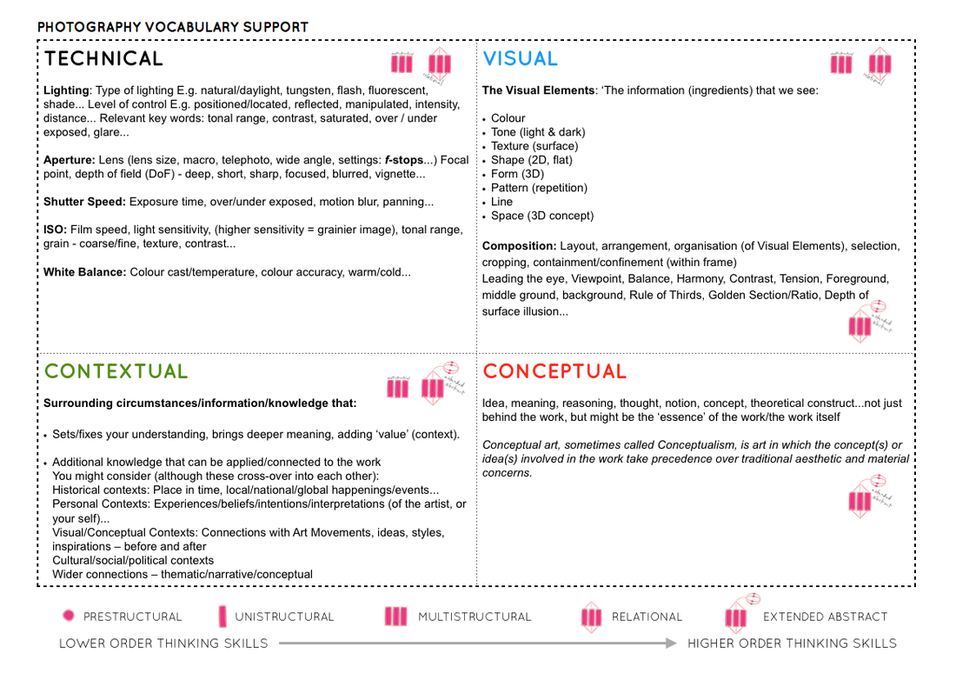
For more help and guidance on image analysis go to Photo Literacy
USEFUL WEBSITES
Lensculture – great source for new contemporary photography from all over the world
Photographic Museum Humanity
Landscape Stories
Photography magazine and journals
Aperture Magazine – American based publication
Aperture BLOG – in-de[th interviews with artists
British Journal of Photography (BJP) – Journal on Contemporary Photography
Huck Magazine
GUP Magazine
FOAM Magazine
Blogs and podcasts for writing and talking about contemporary photographic practice:
1000 WORDS
MAGIC HOUR
A SMALL VOICE
SAINT LUCY
Conscientious Photography Magazine
COLIN PANTALL BLOG
American Suburb X – look at home as it is blocked by Education
The Photobook Review
Photography Agencies and Collectives
World Press Photo – the best news photography and photojournalism
Magnum Photos – photo agency, picture stories from all over the world.
Panos Picture – photo agency
Agency VU – photo agency
INSTITUTE – photo agency
Sputnik Photos – photo collective made of Polish and East European photographers
A Fine Beginning – photo collective in Wales
Document Scotland – photo collective in Scotland
NOOR – a collective uniting a select group of highly accomplished photojournalists and documentary storytellers focusing on contemporary global issues.
Photobook makers and publishers
Aperture
MACK
Steidl
Chose Commune
Self Publish Be Happy
Dewi Lewis Publishing
Akina Books
Skinnerboox
Kehrer
Void
Witty Kiwi
Dalpine
Kodoji Press
Super Labo
Fw: Books
Editions Xavier Barrel
Morel Books
PhotoBookStore – Independent bookshop with good video browsers
TRANSITION
Landscape + Environment
Michael Marten

Anthony Gormley statues, Crosby beach, Liverpool. 5 and 7 April 2008. High water 12 noon, low water 9 am, from the series Sea Change © Michael Marten
Sea Change explores tidal changes around coastal Britain. These transitions provide an ever changing environment that is integral to Island Britain’s history and sea-going way of life.
Tanja Deman
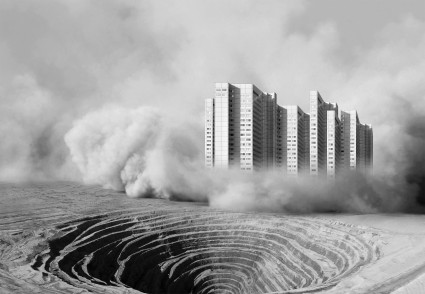
Much of Tanja Deman‘s work comments on humanity’s movement away from nature and towards constructed states. This transition is damaging, but we still feel a connection and a sense of nostalgia even with the natural environment. Deman creates intricate composite images that juxtapose often incongruous and unexpected images taken by gaining access to areas that are off-limits and even classified.
Edward Burtynsky
Burtynsky is concerned with The Anthropocene. The Anthropocene Epoch is an unofficial unit of geologic time, used to describe the most recent period in Earth’s history when human activity started to have a significant impact on the planet’s climate and ecosystems.
Peter Mitchell

Peter Mitchell got to know Leeds as a struggling artist, working as truck driver at times…and constantly re-visiting places that he saw were changing over time. Whole communities gave way to development, new industry and transport networks. “A New Refutation of the Viking 4 Space Mission” was published 40 years after conception…and now Leeds has changed beyond recognition. Mitchell’s photography have a painterly quality to them ; a sombre palette and considered compositions, but juxtapose the old and the new as well as the empty spaces created by change.
Robin Friend
In The Bastard Countryside Robin Friend presents evidence of a broken planet, over-consumption, waste and a lack of love and respect for the environment on our doorstep…
Thom and Beth Atkinson

Marking 75 years since the outbreak of the Blitz, Thom and Beth Atkinson’s first photobook, Missing Buildings, seeks to preserve the physical and psychological landscapes of the Second World War in London.
Over a million of London’s buildings were destroyed or damaged by bombing between 1940 and 1945. From the mysterious gap in a suburban terrace, to the incongruous post-war inner city estate, Missing Buildings reveals London as a vast archeological site, bearing the visible scars of its violent wartime past. But this book is more than a simple record of bombsites; to the artists’ generation, the war is the distant story of an epic battle, passed down to them through books, images and grandparents’ memories.
Blurring fact and fiction, Missing Buildings searches for this mythology, revealing strange apparitions of the past as they resurface in the architecture of the modern-day city. Missing Buildings asks us to contemplate the effects of war upon the British psyche and suggests that the power wrought on our imaginations by the Blitz is a legacy as profound as the physical damage it caused.
Eugene Atget and Gentrification

Working in and around Paris for some 35 years, in a career that bridged the 19th and 20th centuries, Eugène Atget created an encyclopedic, idiosyncratic lived portrait of that city on the cusp of the modern era. Around 1900, Atget’s focus shifted. The city’s urban landscape had been recently reshaped by the modernization campaign known as Haussmannization—a necessarily destructive process led by (and named after) Baron Georges-Eugène Haussmann that saw Paris’s medieval neighborhoods razed and transformed into wide avenues and public parks. Those changes, in turn, kindled a broad interest in vieux Paris (“old Paris”), the capital in its pre-Revolutionary, 18th-century form. Atget’s documentary vision proved highly influential, first on the Surrealists, in the 1920s, who found his pictures of deserted streets and stairways, street life, and shop windows beguiling and richly suggestive
Joel Meyerowitz and New York 9/11: Aftermath

Immediately after the harrowing events of September 11, 2001, the Ground Zero site in New York City was designated an active crime scene and closed off to reporters and photojournalists. Sensing the magnitude of the historical record about to be lost, internationally-acclaimed landscape photographer Joel Meyerowitz fought for access to the site.
Meyerowitz became the only photographer allowed to document the painful transformation of the World Trade Center site over time. For nine months he photographed “the Pile,” as the World Trade Center came to be known, and the courageous rescue personnel, police officers, firefighters, and construction workers leading the recovery efforts inside it.
Using both a large-format view camera and a 35-milimeter Leica, Meyerowitz made over 8,000 images around the sixteen-acre site where the Twin Towers once stood. His images show the mangled metal, shards of broken glass, and cascades of files and papers in the still-smoldering piles of debris; the riot of patriotic color seen in spontaneous memorials; and the elegiac silence of the dust that seemed to cover every surface in Lower Manhattan. Eventually, as his weeks in “the Pile” wore on, his subject shifted from the panoramic sweep of complete devastation to the intimate moments of mourning, strength, determination, and resilience in the faces and figures of the people on hand.
Vanitas
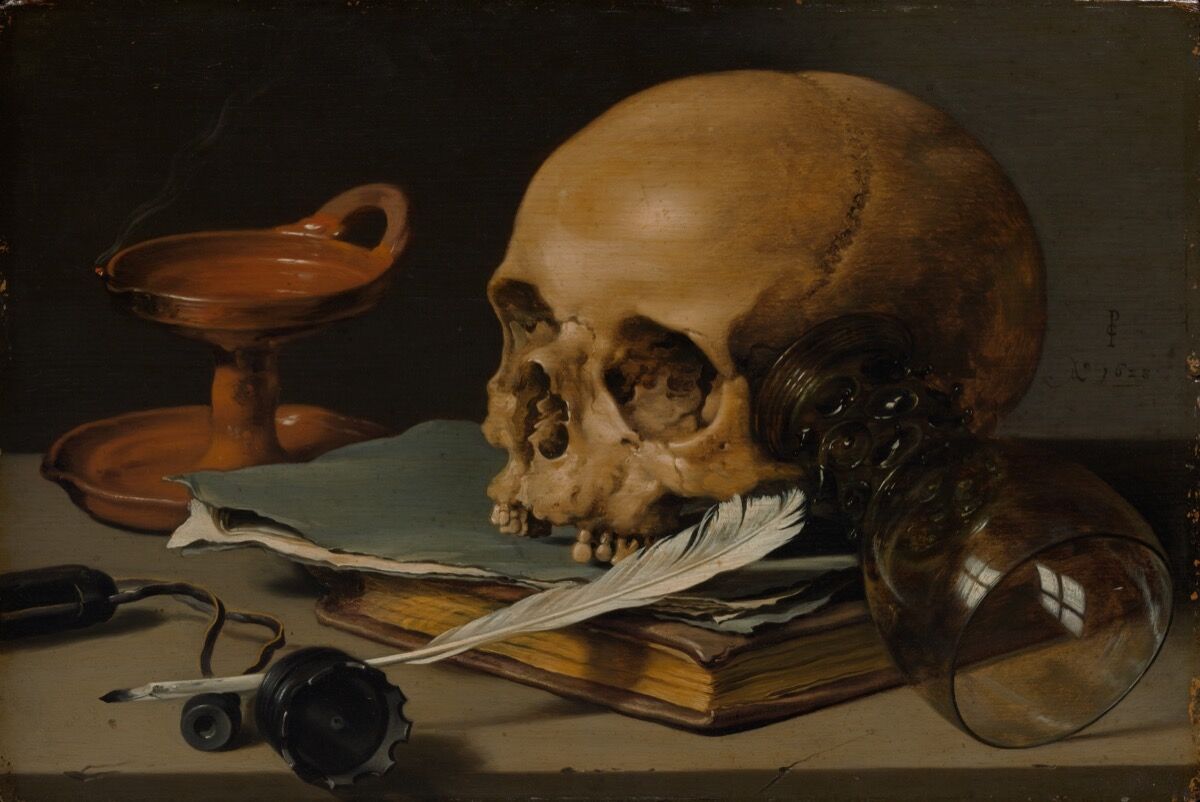
A vanitas is a symbolic work of art showing the transience of life, the futility of pleasure, and the certainty of death, often contrasting symbols of wealth and symbols of ephemerality and death.
The term originally comes from the opening lines of the Book of Ecclesiastes in the Bible: ‘Vanity of vanities, saith the Preacher, vanity of vanities, all is vanity.’
Vanitas are closely related to memento mori still lifes which are artworks that remind the viewer of the shortness and fragility of life (memento mori is a Latin phrase meaning ‘remember you must die’) and include symbols such as skulls and extinguished candles. However vanitas still-lifes also include other symbols such as musical instruments, wine and books to remind us explicitly of the vanity (in the sense of worthlessness) of worldly pleasures and goods.
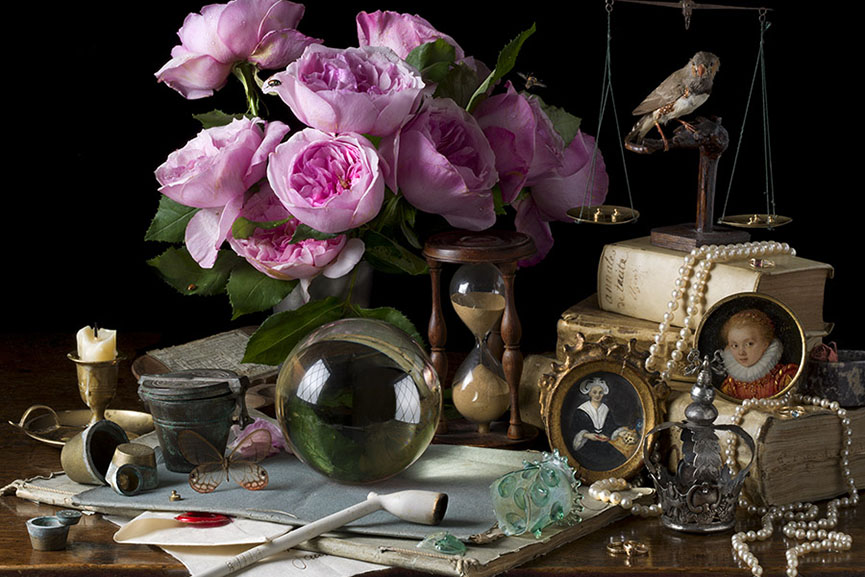
Inspired by the works of 17th century Old Master still life painters such as Giovanna Garzoni and Maria Sibylla Merian, American photographer Paulette Tavormina creates stunningly lit imagery of fruits and vegetables immersed in dark atmosphere
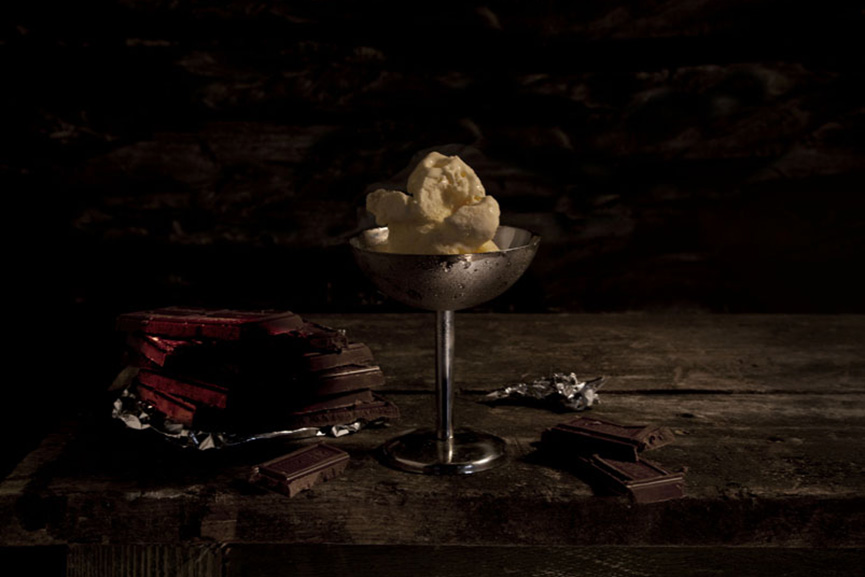
A perfect example of the old technique getting combined with modern-age ideas is Mat Collishaw’s Last Meal on Death Row series of works. Although they appear as meticulously arranged staged photography still lifes of food, each image is actually based on death row inmates’ last meals before they are executed. Apart from the eerie subject, the pictures deliver a strong drammatic effect through an excellent use of chiaroscuro.
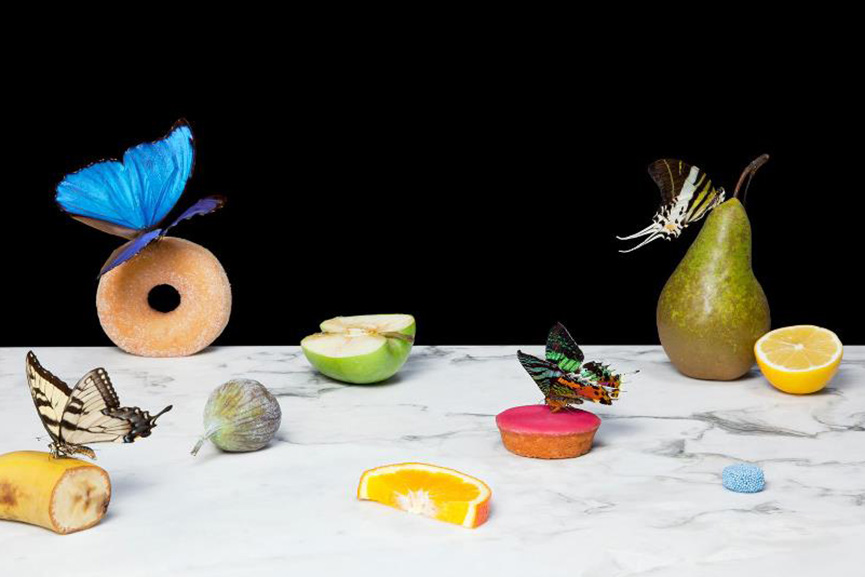
On a much more lighter, even pastel note, we have Dutch photographer Krista van der Niet, whose compositions often include fruits and vegetables mixed with mundane objects such as socks, cloths and aluminum foil, giving it all a contemporary feel. Her photos often carry a dose of satire as well, which references consumerism and popular culture through a clever employment of objects within a carefully composed scenery.
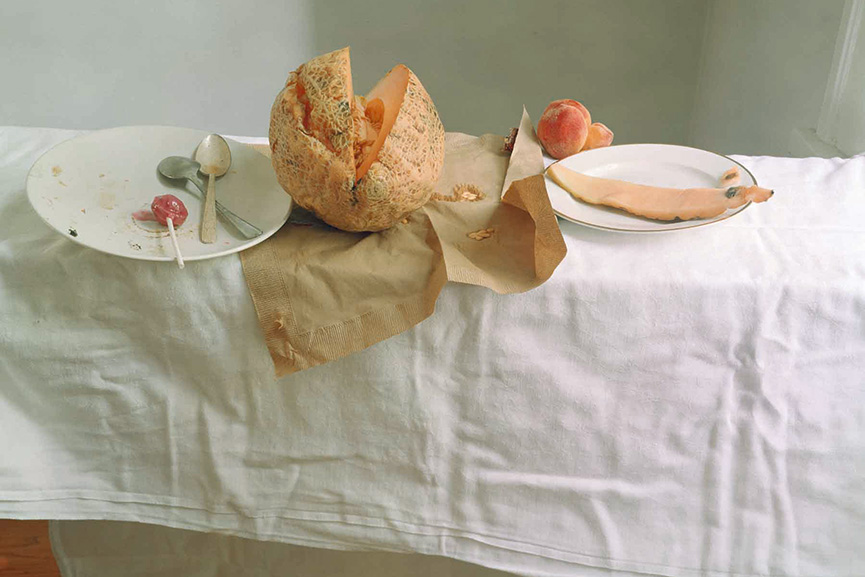
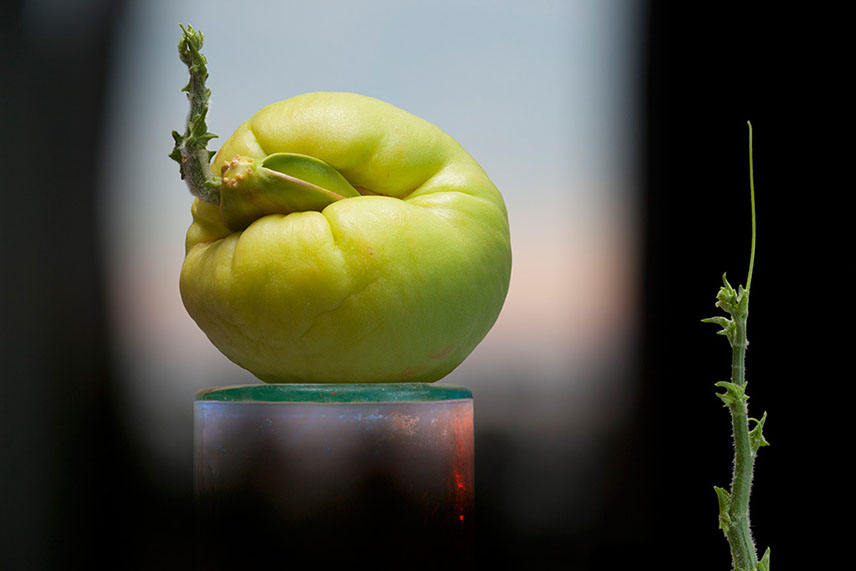
Experimenting with the endless possibilities of light, self taught photographer Olivia Parker makes ephemeral constructions. She started off as a painter, but soon turned to photography and quickly mastered the way to incorporate an extensive knowledge of art history and literature and reference the conflicts and celebrations of contemporary life in her work. Over the many years of her artistic career, her style remained fluid, yet consistent
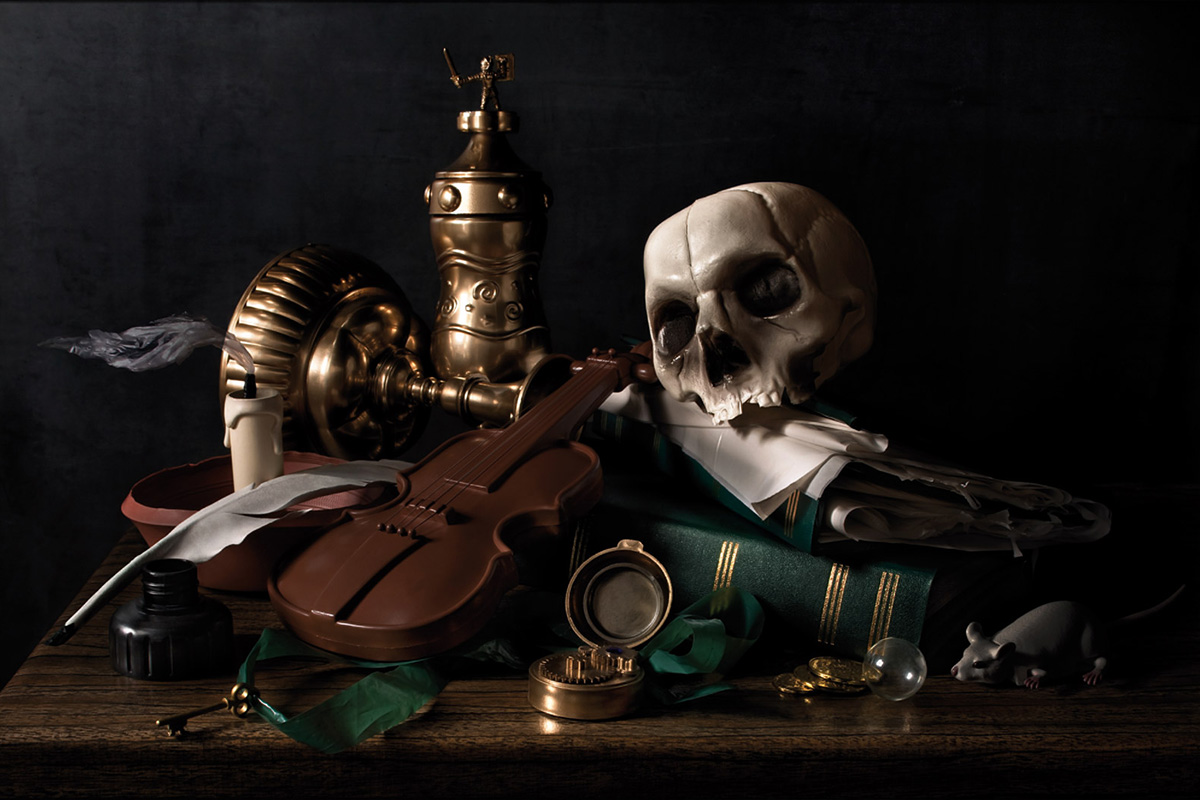
Think paintings by Pieter Claesz or Adriaen Coorte, only in plastic. That’s how one could describe the photographs of Richard Kuiper, whose objects are all made of this everlasting, widely used material, including water bottles, floral arrangements, even the feathers. The artist tries to draw our attention towards the excessive use of plastic in our everyday lives, with the hope we will be able to decrease it before it takes over completely.
More Landscape
Light is the key element of photography. Photographers and filmmakers often capture both gradual and sudden transitions of light. Shadows from clouds pass across the landscape in pictures such as No Man’s Land by Fay Godwin. Other photographers show
transitions of light over longer periods, such as Fong Qi Wei and Dan Marker-Moore, who record the change from day to night in film and photographs. Stephen Wilkes’ large scale night and day panoramas of urban vistas have the epic quality of paintings by the 16th century artist Brueghel.

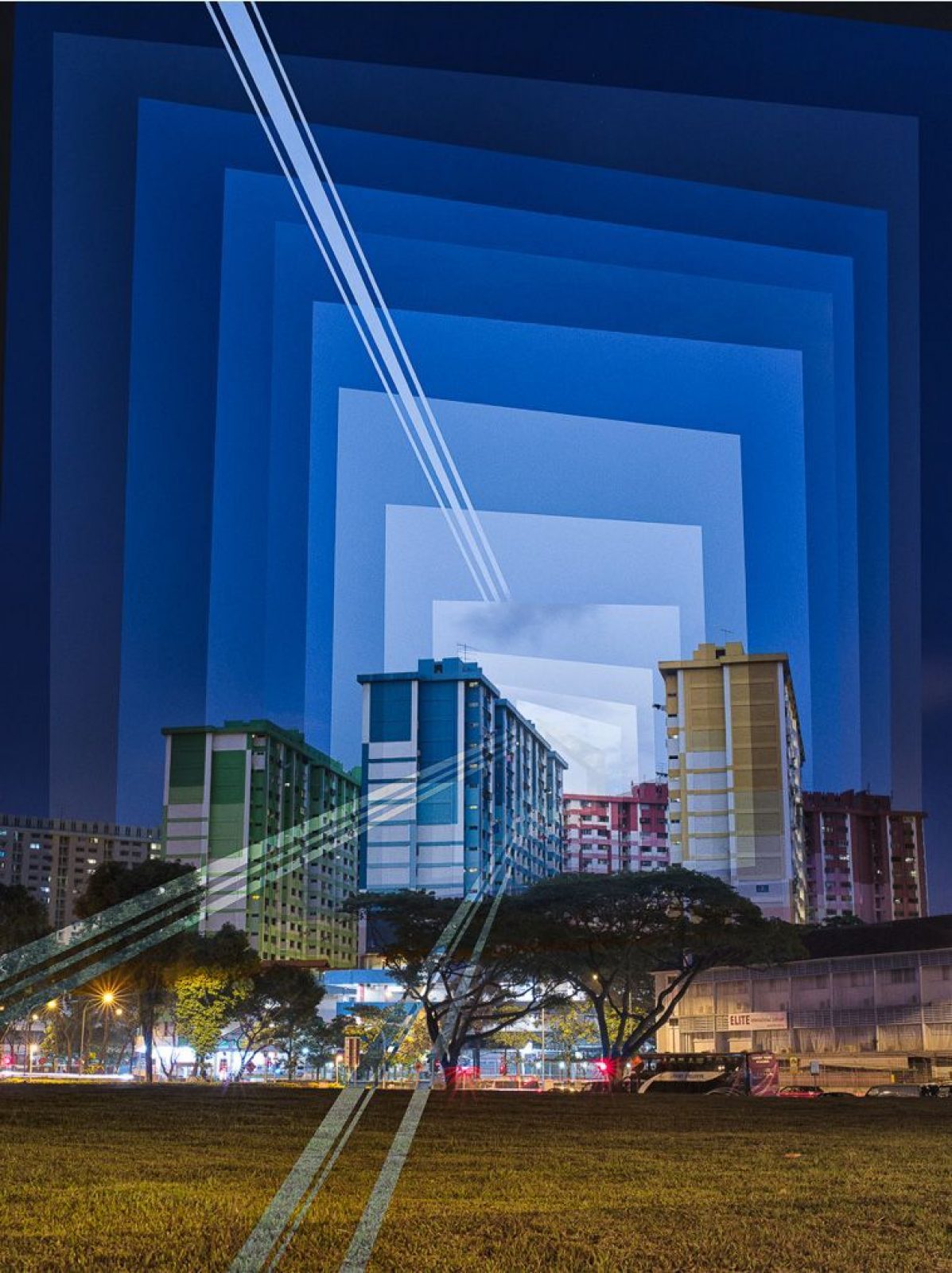


Robert Rauschenberg
During times of stress and economic upheaval, the language of art can change reflecting a transition in the way individuals see themselves. This shift in perspective can even apply to a whole country. Robert Rauschenberg made politically charged collages in the 1960s that at first sight seemed to be chaotic assemblages of images and marks. However, these collages showed great compositional skill in directing the viewer’s attention and
created memorable images that reflected the upheavals of the era. Rauschenberg had been influenced by the earlier collagist Kurt Schwitters and he, in turn, influenced other artists such as Sigmar Polke, David Salle and Jean-Michel Basquiat.

Buffalo II (1964)
screenprint
Political Transition – communism – capitalism – consumerism – individualism
- USSR – Russia
- West Germany v East Germany
- China
- North Korea
Alice Weilinga
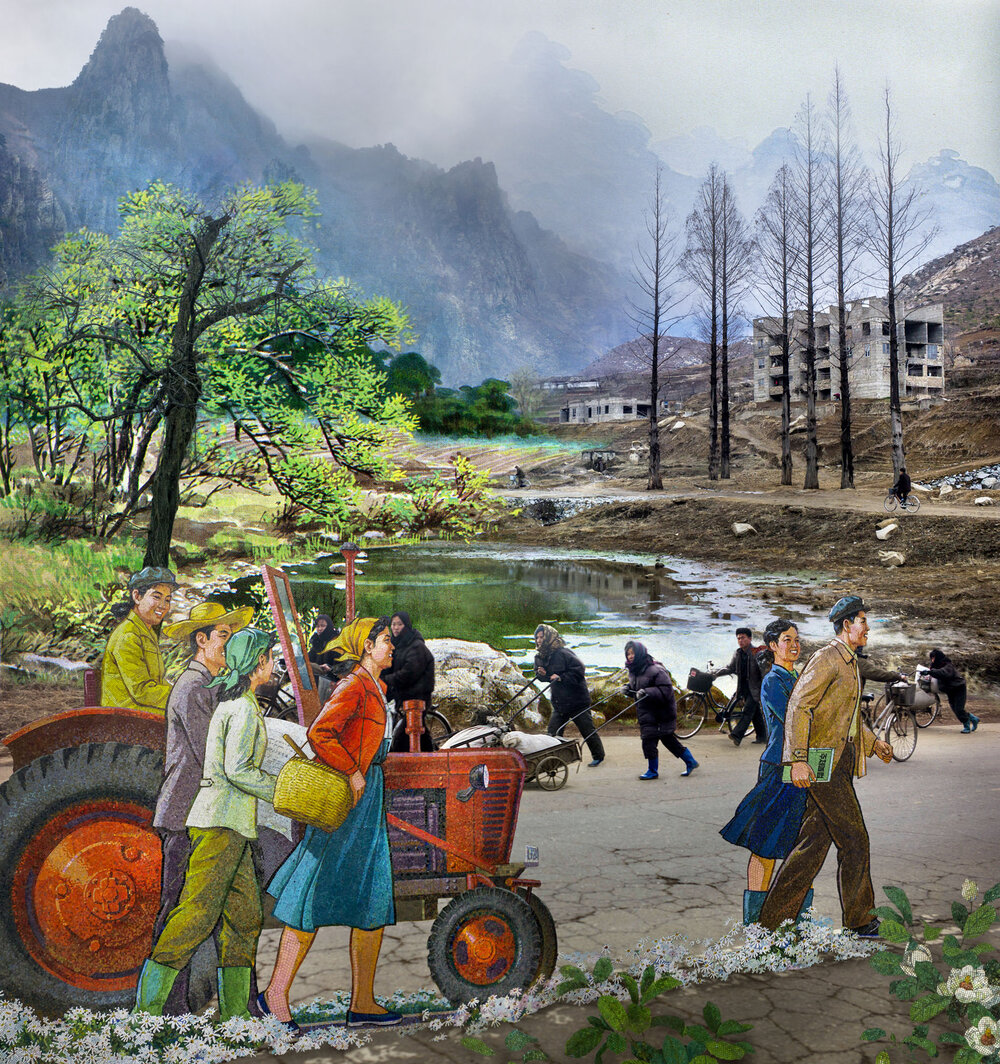
Alice Weilinga works in places like Pakistan and North Korea ; countries that have experienced radical changes in their traditional way of life but still cling to the dreams of their ancestors. Political decisions have shaped the communities and their struggles, whilst the propaganda machines depict a progressive future. Weilinga explores this tension and questions it’s validity by way of intricate composite imagery that draws on often-romanticised imagery that belies forced and slave labour, amongst other issues.
Koyaniqaatsi
Drawing its title from the Hopi word meaning “life out of balance,” this renowned documentary reveals how humanity has grown apart from nature. Featuring extensive footage of natural landscapes and elemental forces, the film gives way to many scenes of modern civilization and technology
GPF 2021
Here are a set of video interviews with photographers discussing their work, background and specific projects that will be exhibited at the next Guernsey Photography Festival in September 2021. Some if these photographers and projects are relevant to the theme of TRANSITION and deal with issues such as, climate change, anthropocene.
10 questions with Anastasia Samoylova
Anastasia answers questions and discusses her project, Floodzone.
Anastasia Samoylova moves between studio practice, observational photography, installation and public art projects. Although her work takes many forms, a central concern is the place images occupy in our understanding and misunderstanding of the world. The epic project FloodZone, photographed in the Southern United States, reworks our expectations of coastal paradise into a psychological portrait of communities faced with rising sea levels.
10 questions with Hannah Modigh
Hannah answers questions and discusses her project, Hurricane Season.
Hannah Modigh is recognised as one of Sweden’s leading photographers. Her sensitive, poetic projects and photobooks, often centred on crisis-ridden areas in the USA, such as small towns plagued by drugs in the Appalachian Mountains (Hillbilly Heroin, Honey) and impoverished areas of Louisiana (Hurricane Season), as well as portraits of Swedish youths in search of their identity (Milky Way), have attracted significant international attention.
10 questions with Elisa Lavergo
Elisa answers questions and discusses her project, Chicanes.
Elisa Larvego was born Geneva in 1984. Studied at Ecole d’arts appliqués (Vevey), then at school of art and design in Geneva. In 2010 she won le Prix d’Art de la Nationale Suisse. Her work has been exhibited nationally (Musée de l’Elysée, Musée Helmhaus, Photoforum PasquArt), and internationally such at festival PhotoEspaña, le Centro Nacional de las artes in Mexico and les Rencontres d’Arles (France), Her approach is both anthropologic et poetic. She developed an interest for the link between individuals and their territory.
10 questions with Tara Fallaux
Tara answers questions and discusses her project, The Perfect Pearl.
Photographer and director Tara Fallaux studied Film and Photography at various art schools in The Netherlands and the US. Once graduating from Carnegie Mellon University School of Fine Arts in Pittsburgh, Tara kicked off her career as a portrait and documentary photographer for magazines in New York and later Amsterdam. Tara has since worked as a freelance photographer combining personal photography and film projects with commercial work. THE PERFECT PEARL is a work in progress. It is an associative and poetic narrative about love and the concept of love in China. In China, a girl who is still unmarried after the age of 25 is called a ‘faded pearl’.
10 questions with Chloé Jafé
Chloé answers questions and discusses her project, I give you my life.
Chloé Jaffé lives in Tokyo and is sufficiently integrated to have worked in a hostess club and met a boss who agreed that she document the women associated with – they cannot be part of – the Yazuka organised crime syndicates. They were typically keen that Jaffé photograph their ‘irezumi’ tattoos, made painfully over years by hand with a wooden handle and a needle: they are a source of pride, still associated with outsider status, not fashion, in Japan. As such, they represent a strong commitment to their gangster partners.
10 questions with Anaïs López
Anaïs answers questions and discusses her project, The Migrant.
Anaïs López’s practice as photographer is characterised by looking for new ways to tell her stories. For each project she consciously steps outside the well-known paths of presentation formats traditionally suitable for photography. The Migrant is realised as a web documentary, and published on the website of the Dutch newspaper Trouw. Next to this online publication, a photobook in an edition of three has been produced; one of these copies is used by López to tell the story in a theatrical performance. Another copy travels around the world, and may be borrowed by individuals who would like to read the story and share it amongst friends.
10 questions with Pierfrancesco Celada
Pierfrancesco answers questions and discusses his project, When I feel down I take the train to the Happy Valley
After completing a PhD in Biomechanics, Pierfrancesco is now concentrating his attention on his personal photographic projects. He recently won the Guernsey Photography Festival International Competition. He is currently working on his long-term project about solitude in modern Megalopolis. He is based in Hong-Kong.
FREEDOM / LIMITATIONS
Below are more inspirations and artists references exploring the themes of FREEDOM and/or LIMITATIONS.
Definition in dictionary (noun):
- The power or right to act, speak, or think as one wants.
- The state of not being imprisoned or enslaved.
SYNONYMS:
liberty, liberation, release, emancipation, deliverance, delivery, discharge, non-confinement, extrication
amnesty, pardoning
independence, self-government, self-determination, self-legislation, self rule, home rule, sovereignty, autonomy, autarky, democracy
self-sufficiency, individualism, separation, non-alignment
emancipation, enfranchisement
exemption, immunity, dispensation, exception, exclusion, release, relief, reprieve, absolution, exoneration
impunity, informal letting off, a let-off
right to, entitlement to
privilege, prerogative, due
scope, latitude, leeway, margin, flexibility, facility, space, breathing space, room, elbow room
licence, leave, free rein, a free hand
carte blanche
naturalness, openness, lack of inhibition, lack of reserve, casualness, informality, lack of ceremony, spontaneity, ingenuousnes
impudence
familiarity, overfamiliarity, presumption, forwardness
Binary opposition
The exam themes of FREEDOM AND/OR LIMITATIONS are a binary opposite – a pair of related terms or concepts that are opposite in meaning.
Binary opposites in relation to exam themes:
Freedom vs limitations
Liberty vs captivity
Independence vs dependence
Exemption vs liability
Scope vs restriction
Binary opposition originated in Saussurean structuralist theory in Linquistics (scientific study of language) According to Ferdinand de Saussure, binary opposition is the system by which, in language and thought, two theoretical opposites are strictly defined and set off against one another. Using binary opposites can often be very helpful in generating ideas for a photographic project as it provides a framework – a set of boundaries to work within. You can make work about freedom by exploring limitations and vice versa.
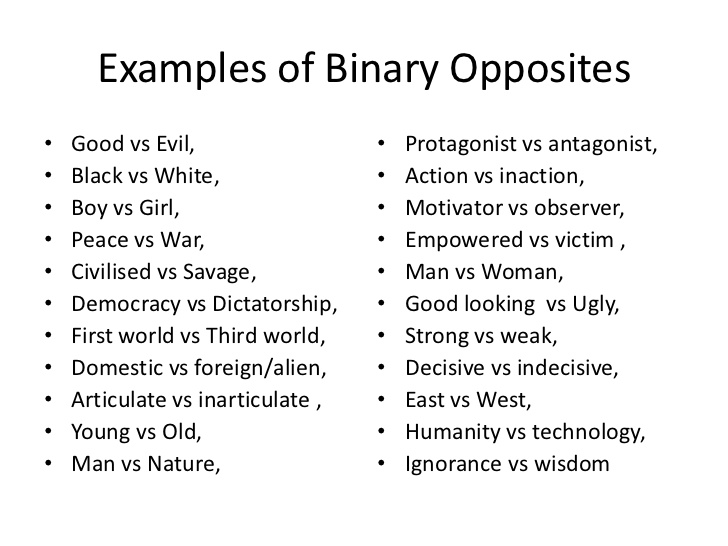
Lets thinks about the concept of freedom in 4 ways:
Political Freedom
Religious Freedom
Sexual Freedom
Artistic Freedom
Political freedom
Political freedom is a central concept in Western history and political thought, and one of the most important features of democratic societies. Although political freedom is often interpreted negatively as the freedom from unreasonable external constraints on action, it can also refer to the positive exercise of rights, capacities and possibilities for action, and the exercise of social or group rights. The concept of political freedom is closely connected with the concepts of civil liberties and human rights, which in democratic societies are usually afforded legal protection from the state.
Throughout history artists has made work that questions political
A strong relationship between the arts and politics, particularly between various kinds of art and power has occurs across historical epochs and cultures. Artists respond to political events uses different mediums from panting, photography, film, performance and graphic design to produce as a way of actively calling for social change.
With the upcoming election in Jersey you have a chance to respond to political events, issues and causes that you care about.
Photography and Propaganda
Photography has been used as Propaganda for as long time. One of the most iconic images made during the Economic Depression in the 1930s America is Dorothea Lange’s Migrant Mother. It was used by the federal agency FSA (Farm Security Administration) to raise money and awareness has been reproduced for decades on stamps, posters etc. The controversy surrounding the image is an interesting study where the account from Lange and the woman photographed, Florence Thompson differ significantly.

Before migrant mother was made photography was entrenched in producing propaganda material for the Russian Revolution and socialist uprising. See the work of El Lissitzky, Alexander Rodchenko, Kazimir Malevich. These artists and many more were part of the new European avant-garde movements such as Russian Constructivism, Dadaism and later Surrealism. See also the work by some of the pioneers of photo-montages such as John Heartfield, Raoul Hausman, Hannah Hoch.

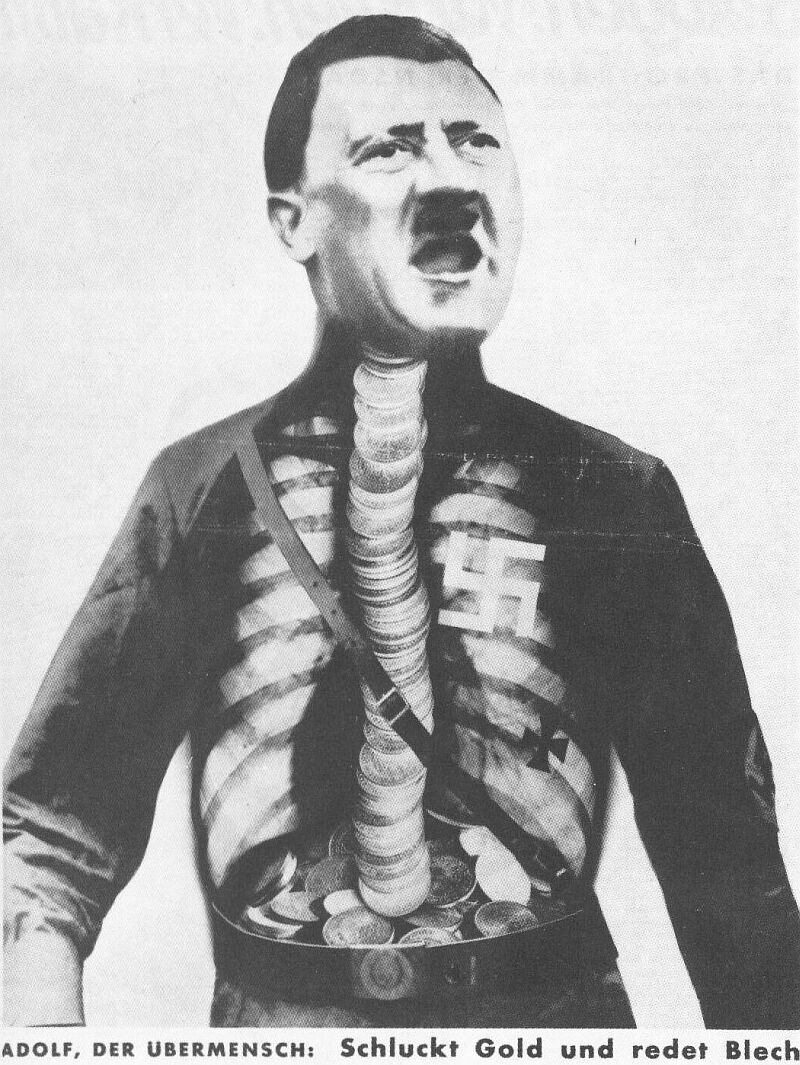


See my PPT on an extensive overview of development of photomontage here:
Peter Kennard is one Britians most productive artists using photo montage to producing propaganda style images with highly political comments and satire. All forms of advertising is a form of propaganda with material used to promote and sell a particular item, merchandise or lifestyle.



Most protest groups such as Occupy London (like to website) or even the evil ideology of ISIS uses propaganda disseminated through new media and social media in order to reach a wide audience.



For those of you who studying Media, you should be able to link this with your module on We Media. Make links both to historical and contemporary means of propaganda, visual material produced and forms of communication and dissemination of images/ messages/ ideology/ mechandise etc.
During the Vietnam War, conceptual artist, Marta Rosler made a series of photo montages that were a critique of America’s involvement. in 1981 she wrote one of the key essay on documentary photography and its fraught relationship with its inherent truth, ethics and the politics of representation, In, around, and afterthoughts (on documentary photography.) Read it here.


The Russian avant-garde
A large, influential wave of avant-gardemodern art that flourished in the Russian Empire and Soviet Union, approximately from 1890 to 1930—although some have placed its beginning as early as 1850 and its end as late as 1960. The term covers many separate, but inextricably related, art movements that flourished at the time; namely Suprematism, Constructivism, Russian Futurism, Cubo-Futurism, Zaum and Neo-primitivism. Given that many avant-garde artists involved were born or grew up in what is present day Belarus and Ukraine (including Kazimir Malevich, Aleksandra Ekster, Vladimir Tatlin, Wassily Kandinsky, David Burliuk, Alexander Archipenko), some sources also talk about Ukrainian avant-garde, etc.
The Russian avant-garde reached its creative and popular height in the period between the Russian Revolution of 1917 and 1932, at which point the ideas of the avant-garde clashed with the newly emerged state-sponsored direction of Socialist Realism.

Exhibition at The Museum of Modern Art (MOMA)
Covering the period of artistic innovation between 1912 and 1935, A Revolutionary Impulse: The Rise of the Russian Avant-Garde traces the arc of the pioneering avant-garde forms after Socialist Realism was decreed the sole sanctioned style of art. The exhibition examines key developments and new modes of abstraction, including Suprematism and Constructivism, as well as avant-garde poetry, film, and photomontage.
Read article here in the New York Times
Russian avant-garde and photomontage




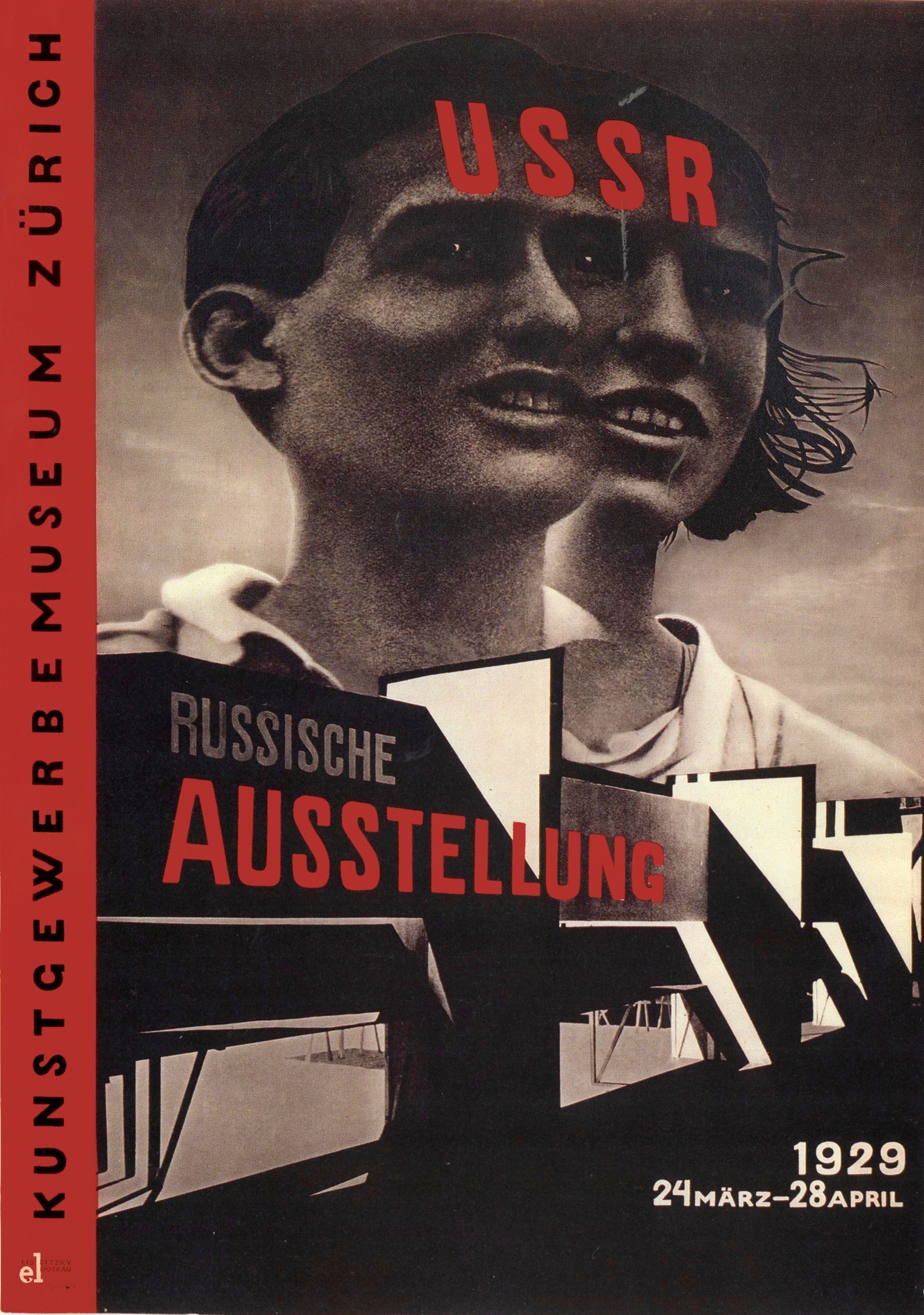
Soviet Cinema
Sergei Eisenstein, Potemkin, 1925
Eisenstein used the events of the 1905 rebellion against czarist troops in the port of Odessa to give meaning to the Russian Revolution of 1917. One of the most memorable shots, comprising the Odessa steps sequence, for example, captures the horror of the massacre in a close-up of a woman screaming after she has been wounded by the advancing soldiers. His brilliantly percussive editing, detailed shots, repetitions, contrasts, compressions and expansions of time, and collisions of images ran counter to the trend toward a seamless illusion of reality found in other national cinemas of the 1920s. After the Revolution, young film directors searched for a cinematic style that, by destroying tradition, would help to bring about a new society. In films on revolutionary subjects, they abandoned conventional structure, experimented with new techniques, and used montage. Eisenstein, in particular, believed that juxtapositions of images would shock viewers into becoming active cinematic agents.
Dziga Vertov:Man with a Movie Camera, 1929
Part documentary and part cinematic art, this film follows a city in the 1920s Soviet Union throughout the day, from morning to night. Directed by Dziga Vertov, with a variety of complex and innovative camera shots, the film depicts scenes of ordinary daily life in Russia. Vertov celebrates the modernity of the city, with its vast buildings, dense population and bustling industries. While there are no titles or narration, Vertov still naturally conveys the marvels of the modern city.
For contemporary responses to communist legacy of Russian communism and Soviet empirealism see new work by Polish photographer Rafal Milach
His exhibition Refusal which has been nominated fro the prestigious the Deutsche Börse Photography Foundation Prize.



In REFUSAL Rafal Milach’s ongoing artistic practice focuses on applied sociotechnical systems of governmental control and ideological manipulations of belief and consciousness. Focusing on post-Soviet countries such as Belarus, Georgia, Ukraine, Azerbaijan and Poland, Milach traces the mechanisms of propaganda and their visual representation in architecture, urban projects and objects.
Refusal brings together different material and visual layers that ultimately represent these systems of control. Among other things, Refusal showcases photographs of handmade objects found in governmental centres and chess schools that produce optical illusions and whose innocent disposition is fundamentally changed here as they exemplify how the human mind can be influenced and controlled. Furthermore Soviet television programmes about social experiments or various state-run competitions exemplify the process of formatting and shifting meanings to serve a concrete vision of government.
Read interview with Rafal Milach in GUP magazine
See Milach’s latest photobook, The March of the First Gentlemen



The First March of Gentlemen is a fictitious narration composed of authentic stories. Historical events related to the town of Września came to be the starting point for reflection on the protest and disciplinary mechanisms. In the series of collages, the reality of the 1950s Poland ruled by the communists blends with the memory of the Września children strike from the beginning of the 20th century. This shift in time is not just a coincidence, as the problems which the project touches upon are universal, and may be seen as a metaphor for the contemporary social tensions. The project includes archive photos by Września photographer Ryszard Szczepaniak. This project was made within Kolekcja Wrzesińska residency.Read review here in the BJP
Rafal Milach is also a founding member of Sputnik Photos and Polich photography collective who have been working on a large project, Lost Territories Archive about former soviet republics

Matthei Asselin: Monsanto: A Photographic Investigation
Asselin’s project is conceived as a cautionary tale putting the spotlight on the consequences of corporate impunity, both for people and the environment. Designed by fellow countryman Ricardo Báez, a designer, curator and photobook collector who has notably worked with the Venezuelan master Paolo Gasparini, Monsanto® submerges the reader into an exposé of the corporation’s practices, whether by showing contaminated sites and the health and ecological damage they cause, the effects of Agent Orange in Vietnam, or the pressure on farmers to use patented GMO seeds.



Read article here in American Suburb X (ASX) and listen to interview below
Alice Wielinga: North Korea, a Life between Propaganda and RealityAs a photographer, how do you make insightful work about a place where media is as heavily controlled as it is in North Korea, ‘a big black hole on the world map’ where government propaganda is ubiquitous and stage managed photo opportunities are the norm? For Alice Wielinga the solution was to take that propaganda and imposed control and turn it back on itself, by creating detailed composite images that blend familiar North Korean propaganda paintings with her own photographs of the secretive state. The resulting series North Korea, a Life between Propaganda and Reality, has been on display at the Les Rencontres d’Arles festival following Wielinga’s win in the portfolio review prize at the previous year’s festival. Wielinga’s composites, which each take weeks to produce, are richly detailed vistas which could easily be dismissed at first glance as conventional propaganda. Closer inspection however reveals incongruities between the painted elements and the new photographic ones. Alongside the stylised faces of smiling workers and bold soldiers, she inserts the tired people and emaciated landscapes she photographed …

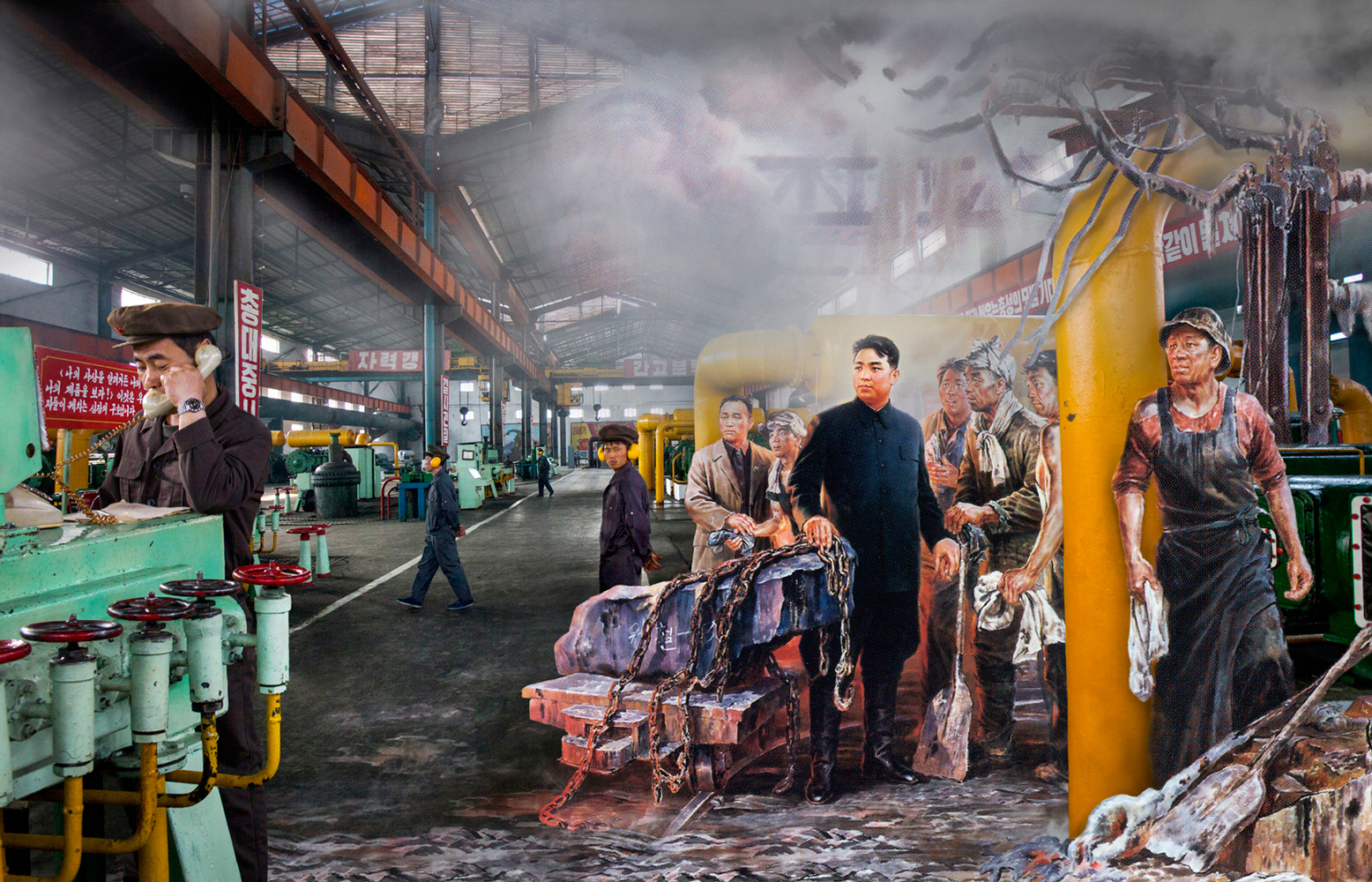
Watch Youtube clip where Alice talks about her work from North Korea
Actions. The image of the world can be different
A new exhibition at Kettle Yard’s in Cambridge featuring work by 38 artists that seeks to reassert the potential of art as a poetic, social and political force in the world.
Read article here in the Guardian
Artists in Actions: Basel Abbas + Ruanne Abou-Rahme. John Akomfrah, Rana Begum, Joseph Beuys, Anna Brownsted, Candoco Dance Company + Laila Diallo, Alice Channer, Nathan Coley, Edmund de Waal, Jeremy Deller, eL Seed, Jamie Fobert, Helen Frankenthaler, Naum Gabo, Regina José Galindo, Anya Gallaccio, Henri Gaudier-Brzeska, Barbara Hepworth, Callum Innes, Mary Kelly, Idris Khan, Issam Kourbaj, Linder, Richard Long, Melanie Manchot, Julie Mehretu, Gustav Metzger, Oscar Murillo, Ben Nicholson, Harold Offeh, Cornelia Parker, Vicken Parsons, Katie Paterson, Zoran Popović, Khadija Saye, Emma Smith, Caroline Walker, Kate Whitley

Money rather than yachts are parked in the island tax haven of Jersey and another muralshows the capital, St Helier, going up in smoke. The conflagration is predicted for 2017, but the banners egging on the rioters have already been designed by Ed Hall, a specialist in campaign banners. The mask-like faces are based on a tax avoidance diagram and a deliberately opaque financial scheme known as the “Jersey Cashbox”.
Read more here about Jeremy Deller‘s show at the Venice Bienale and watch video
Here is a video clip from Deller re-enactment of The Battle of Orgreaves
John Akomfrah is a hugely respected artist and filmmaker, whose works are characterised by their investigations into memory, post-colonialism, temporality and aesthetics and often explores the experiences of migrant diasporas globally. Akomfrah was a founding member of the influential Black Audio Film Collective, which started in London in 1982 alongside the artists David Lawson and Lina Gopaul, who he still collaborates with today. Their first film, Handsworth Songs (1986) explored the events surrounding the 1985 riots in Birmingham and London through a charged combination of archive footage, still photos and newsreel.
Joseph Beuys: 12 May 1921 – 23 January 1986) was a German Fluxus, happening, and performance artist as well as a sculptor, installation artist, graphic artist, art theorist, and pedagogue.
His extensive work is grounded in concepts of humanism, social philosophy and anthroposophy; it culminates in his “extended definition of art” and the idea of social sculpture as a gesamtkunstwerk, for which he claimed a creative, participatory role in shaping society and politics. His career was characterized by open public debates on a very wide range of subjects including political, environmental, social and long term cultural trends. He is widely regarded as one of the most influential artists of the second half of the 20th century.
Joseph Beuys was a German-born artist active in Europe and the United States from the 1950s through the early 1980s, who came to be loosely associated with that era’s international, proto-Conceptual art movement, Fluxus. Beuys’s diverse body of work ranges from traditional media of drawing, painting, and sculpture, to process-oriented, or time-based “action” art, the performance of which suggested how art may exercise a healing effect (on both the artist and the audience) when it takes up psychological, social, and/or political subjects. Beuys is especially famous for works incorporating animal fat and felt, two common materials – one organic, the other fabricated, or industrial – that had profound personal meaning to the artist. They were also recurring motifs in works suggesting that art, common materials, and one’s “everyday life” were ultimately inseparable.
Lewis Bush: Archisle Photographer-in-Residence 2018 is a Photographer, Writer, Curator and Educator based in London. After studying History and working as a researcher for the United Nations Taskforce on HIV/AIDS he completed a MA in Documentary Photography at the London College of Communication in 2012. Since then he has developed a multifaceted practice encompassing photography, writing and curation to explore ideas about the way power is created and exercised in the world. In The Memory of History (2012) he travelled through ten European countries documenting the way the past was being manipulated in the context of the economic crisis and recession. This project was widely published and was exhibited at the European Union’s permanent representation in London in 2014. More recent works include Metropole (2015) which critiques the architectural transformation of London and the city’s growing inequality by subverting the imagery of London’s luxury and corporate developments. Bush’s new book Shadows of the State (2018) uses open source research to reveal numbers stations, cold war intelligence communications which remain in use today. Bush is a Lecturer on the MA and BA(hons) Documentary Photography Programmes at London College of Communication.




Read Lewis Bush blog Disphotic here
British documentary photograph projects in response to political times, for example 1980s Thatcher era
Chris Killip: In Flagrante
Poetic, penetrating, and often heartbreaking, Chris Killip’s In Flagrante remains the most important photobook to document the devastating impact of deindustrialization on working-class communities in northern England in the 1970s and 1980s.
Taken in the late 1970s and early 80s, Chris Killip‘s photographs are a study of the communities that bore the brunt of industrial decline in the North East. They evoke both the social tensions and the economic upheaval that defined the era. “You didn’t have to be a genius to realise how important it was to get in and photograph it before it all fell apart,” he says. “The strange thing is, I didn’t realise how quickly it would go.”



Read article here by Sean O’Hagan in the Guardian
Paul Graham: Beyond Caring
Paul Graham’s Beyond Caring published in 1986 is now considered one of the key works from Britain’s wave of “New Color” photography that was gaining momentum in the 1980s. While commissioned to present his view of “Britain in 1984,” Graham turned his attention towards the waiting rooms, queues and poor conditions of overburdened Social Security and Unemployment offices across the United Kingdom.




Read essay here on Graham and Beyond Caring by critic David Chandler
Martin Parr: The Cost of Living
Austerity vs capitalism
Jim Goldberg: Rich and Poor
The photographs in this book constitute a shocking and gripping portrait of contemporary America. Jim Goldberg’s photographs of rich and poor people, with the subjects’ own handwritten comments about themselves on the prints, give us an inside look at the American dream at both ends of the social scale.His pictures reveal his subjects’ innermost fears and aspirations, their perceptions and illusions about themselves, with a frankness that makes the portraits as engrossing as they are disturbing.




Often considered Goldberg’s seminal project, Raised by Wolves combines ten years of original photographs, text, and other illustrative elements (home movie stills, snapshots, drawings, diary entries, and images of discarded belongings) to document the lives of runaway teenagers in San Francisco and Los Angeles. The book quickly became a classic in the photobook canon and, thus, the original is essentially unavailable.
Read article here in the Guardian
Shooting the rich – an article in the BJP
Carlos Sporttono: Wealth Management
Dougie Wallace: Harrodsburg
Paolo Woods and Gabriele Galimberti: The Heavens
Jim Mortram: Small Town Inertia
Jim Mortram lives near Dereham, a small town in Norfolk. Dereham is no different from thousands of other communities throughout Britain, where increasing numbers of people struggle to survive at a time of welfare cuts and failing health services.



For the last seven years, Jim has been photographing the lives of people in his community who, through physical and mental problems and a failing social security system, face isolation and loneliness in their daily lives. His work covers difficult subjects such as disability, addiction and self-harm, but is always with hope and dignity, focusing upon the strength and resilience of the people he photographs.
Read interview here with Jim Mortram in the BJP
Karen Knorr: Belgravia
The Belgravia series, images and texts describe class and power amongst the international and wealthy during the beginning of Thatcherism in London during 1979. Belgravia is still a cosmopolitan and rich neighbourhood in London near Harrods in Knightsbridge with many non-domiciled residents. My parents lived in Belgravia and the first image of the series is a photograph of my mother and grandmother in the front room of our “maisonette” on Lowndes Square. Yet the photographs are not about individuals but about a group of people and their ideas during a particular time in history. They are “non-potrtraits” in that they do not aim to flatter or to show the “truth” of these people. People are not named and remain anonymous.

 Politics and elections
Politics and elections
Mark Duffy: Vote No 1
Across the world, we are experiencing a severe disillusionment with our nations’ political class. This series takes a humorous, if dark, look at this issue by focusing on the unintended disfigurements that electoral candidates’ faces suffer when advertising themselves to the public.



Christopher Anderson: STUMP
Stump collects his color and black-and-white photographs from recent campaign trails-particularly from the 2012 Obama/Romney contest-that scrutinize the highly rehearsed rhetorical masks of, among others, Barack and Michelle Obama, Mitt Romney, Paul Ryan, Newt Gingrich, Bill Clinton and others (including audience members at rallies). Removed from the context of reportage and sequenced here, these images accumulate a mesmerizing quality that is both frightening and hilarious.



Read review here on Joerg Colberg blog Conscentious
Identity and citizenship
Shirin Neshat
Ahmed Mammoud – Shanamanesh
Sam Irwin
Use of Archive and Found images
Right now in contemporary photography and in particularly in photographers making photo books the use of archival material is dominating ways that photographers tell stories. We have discussed this earlier during Personal Study and many of you incorporated family archives and photo albums into the narrative and making of your photo book. There is no reason why you can’t explore archives again, both public (Photographic Archive Society Jersiaise, Archive of Modern Conflict) and private (mobile phones, social media, family albums etc.)
Here is a selection of photographers using archives in making new work: Adam Broomberg and Oliver Chanarin (Divine Violence/Holy Bible, War Primer 2, People in Trouble, Spirit is a Bone etc) Christian Patterson (Redhead Peckerwood, Bottom of the Lake), Tommasi Tanini (H. said he loved us), David Fahti (Anecdotal, Wolfgang), Dragana Jurisic (YU: The Lost Country), Anouk Kruithof, Ed Templeton (Adventures in the nearby far way), John Stezaker







Mishka Henner, Trevor Paglen, Doug Rickard, Daniel Mayrit all use found images from the internet, Google earth and other satellites images as a way to ask questions and raise awareness about our environment, state operated security facilities, social and urban neighbour hoods, prostitution, and London’s business leaders of major international financial institutions.

US oil fields photographed by satellites orbiting Earth.

Mishka Henner: I’m not the only one, 2015
Single channel video, 4:34 minsPhotographer Trevor Paglen has long made the advanced technology of global surveillance and military weaponry his subject. This year he has been nominated for the prestigious The Deutsche Börse Photography Foundation Prize which aims to reward a contemporary photographer of any nationality, who has made the most significant contribution (exhibition or publication) to the medium of photography in Europe in the previous year. The Prize showcases new talents and highlights the best of international photography practice. It is one of the most prestigious prizes in the world of photography. Read more here

Doug Rickard is a north American artist / photographer. He uses technologies such as Google Street View and YouTube to find images, which he then photographs on his monitor, to create series of work that have been published in books, exhibited in galleries.

Months after the London Riots in 2008 (at the beginning of the economical crash) the Metropolitan Police handed out leaflets depicting youngsters that presumably took part in riots. Images of very low quality, almost amateur, were embedded with unquestioned authority due both to the device used for taking the photographs and to the institution distributing those images. But in reality, what do we actually know about these people? We have no context or explanation of the facts, but we almost inadvertently assume their guilt because they have been ‘caught on CCTV’.
In his awarding book: You Haven’s Seen the Faces.. Daniel Mayrit appropriated the characteristics of surveillance technology using Facebook and Google to collect images of the 100 most powerful people in the City of London (according to the annual report by Square Mile magazine in 2013). The people here featured represent a sector which is arguably regarded in the collective perception as highly responsible for the current economic situation, but nevertheless still live in a comfortable anonymity, away from public scrutiny.
Read article here in the BJP on Shooting the Rich

Read and see more here on his website and the publisher, RIOT Books
See also this book Looters by Tiane Doan Na Champassak

Religios Freedom
Khadija Saye who had been invited to contribute to the exhibition before her death in the Grenfell Tower fire. Read article here in the Guardian.


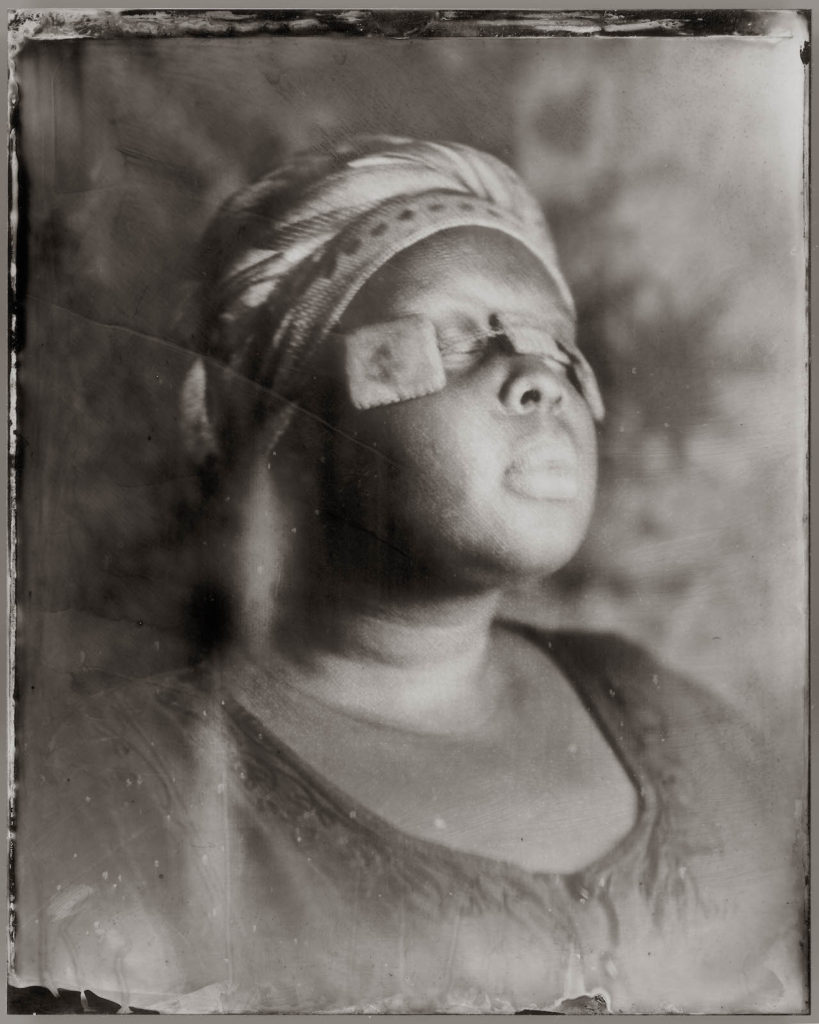
Dwelling: in this space we breathe is a series of wet plate collodion tintypes that explores the migration of traditional Gambian spiritual practices and the deep rooted urge to find solace within a higher power. This series of tintypes were produced with artist, Almudena Romero.
Read an obituary here in the British Journal of Photography
Another Kind of Life: Photography on the Margins
At a time of significant national and global uncertainty, the season in 2018 at the Barbican Art Gallery in London explore how artists respond to, reflect and potentially effect change in the social and political landscape.
Reflecting a diverse, complex and authentic view of the world, the exhibition touches on themes of countercultures, subcultures and minorities of all kinds, the show features the work of 20 photographers from the 1950s to the present day. Diane Arbus, Casa Susanna, Philippe Chancel, Larry Clark, Bruce Davidson, Mary Ellen Mark, Paz Errázuriz, Jim Goldberg, Katy Grannan, Pieter Hugo, Seiji Kurata, Danny Lyon, Teresa Margolles, Boris Mikhailov, Daido Moriyama, Igor Palmin, Walter Pfeiffer, Dayanita Singh Alec Soth and Chris Steele-Perkins
Read Press Release here
Paz Errázuriz The beautifully arresting series of photographs, Adam’s Apple (1982-87), by Chilean photographer Paz Errázuriz are of a community of transgender sex-workers working in an underground brothel in Chile in the 1980s. Taken during the military dictatorship of General Augusto Pinochet when gender non-conforming people were regularly subjected to curfews, persecutions and police brutality, the photographs are a collaborative and defiant act of political resistance.

 Read review here in Dazed and Confused and a gallery page in the Guardian
Read review here in Dazed and Confused and a gallery page in the Guardian
Dayanita Singh on making photobooks as mobile museums
Her blog: DAYANITA SINGH , RANDOM THOUGHTS ON PHOTOGRAPHY, ART AND BEING A SOLOIST


Alec Soth: Broken Manual
In Alec Soth’s Broken Manual (2006–10) he documents men living off the grid. His atmospheric images, both colour and black and white, are of monks, survivalists, hermits and runaways who all have in common the need to disappear in America.

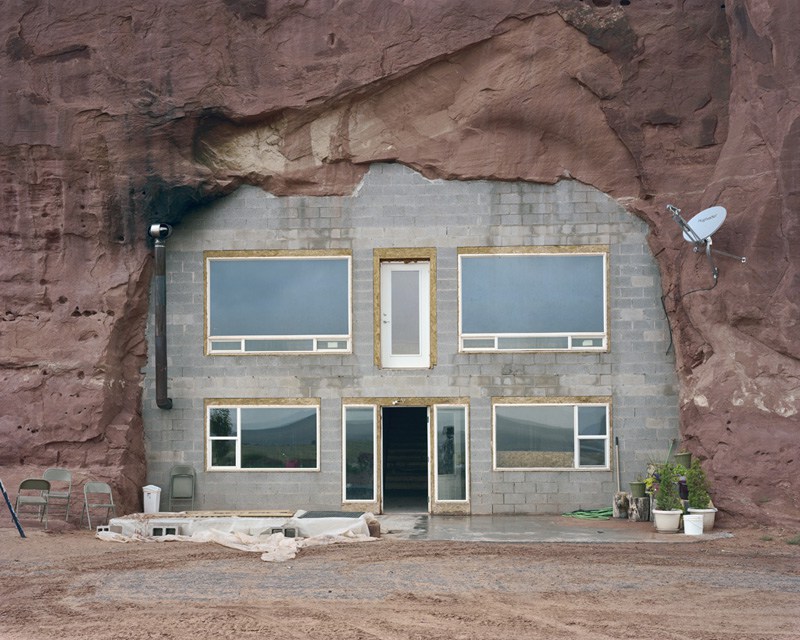


Read article here in the Guardian
Yto Barrada: AgadirFor her first major London commission, artist Yto Barrada weaves together personal narratives and political ideals to create a complex portrait of a city and its people in a state of transition.
Klaus Pichler: This will change your life Forever

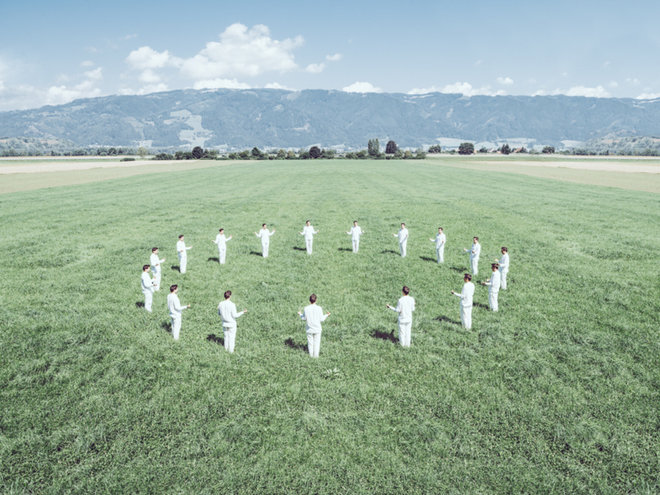



Read interview here in GUP magazine
Liz Hingley
Jonas Bendisken
Set in an apocalyptic post-industrial landscape of Southern Russia, on a site of an archaeological expedition, the little known work of Russian photographer Igor Palmin, The Enchanted Wanderer (1977) and TheDisquiet (1977), features Soviet Hippies in their bell-bottoms and flower power hair bands, playing guitars in opium filled trailers or standing alone on desolate lands.
Dayanita Singh formed a deeply profound and meaningful friendship over 30 years with Mona Ahmed, a eunuch from New Delhi who was both feared and revered, an outcast amongst outcasts, living much of her life in a cemetery. As well as the groundbreaking photo book, with profoundly honest and frank words by Mona, the exhibition includes a poignant film, shot in one take, of a very still Mona listening to her favourite song Rasik Balma from the 1956 romantic comedy Chori Chori.
Driven by motivations both personal and political, many of the photographers in Another Kind of Life sought to provide an authentic representation of disenfranchised communities often conspiring with them to construct their own identity through the camera lens.
Sexual freedom
Rights and women and is a current
Sufragette movement and Femen
For those interested in exploring identities, stereotypes, gender, alter-egos through self-portraiture using varies techniques such slow shutters-speeds, use of dressing up, make-up, props, masks, locations (mine-en-scene) Often these images are questioning ideas around truth, fantasy or fiction.
Francesco Woodman, Cindy Sherman, Claude Cahun, Yasumasa Morimura, Gillian Wearing, Sean Lee (Shauna) Juno Calypso
INSPIRATIONS: PHOTOGRAPHY, PERFORMANCE AND THE BODY
Rather than physical space, the theme of Environment can also be considered within a psychological context where artists construct or imagine an environment that they respond to in creative ways using photography, performance and film.
Using binary opposites we can think of freedom as;
exterior/ interior
private/ public
masculin/ feminine
physical/ psychological
Clare Rae from Melbourne, Australia visited Jersey as part of the Archisle international artist-in-residence programme last year. Clare has been researching the Claude Cahun archive, shooting new photography and film in Jersey and contributing to the educational programme. Clare Rae produces photographs and moving image works that interrogate representations of the female body via an exploration of the physical environment.




Clare gave a artist talk contextualising her practice, covering recent projects that have engaged with notions of architecture and the body, and the role of performative photography in her work. Clare will discuss her research on these areas, specifically her interest in artists such as Claude Cahun, Francesca Woodman and Australian performance artist Jill Orr. Clare will also discuss her photographic methodologies and practices, giving an analysis of her image making techniques, and final outcomes.
Homework: Here is the task that she asked participants to respond to in a workshop. This could be a good starting point to for photographic exploration.
Untitled Actions: exploring performative photography
Outcomes for participants:
1. Produce a self-portrait, in any style you like. Consider the history of self-portraiture, and try to create an image that alludes to, (or evades?) your identity.
2. Produce a performative photograph, considering the ideas presented on liveness, performance documentation and Cartier-Bresson’s decisive moment. ‘Captured’ vs. pre-meditated?
3. Produce a photograph that engages the body with the physical environment. Think of architecture, light, texture, and composition to create your image.
For further context lets consider some of these artists’ influences on Clare’s practice.
Claude Cahun, born Lucy Schwob was a French photographer, sculptor, and writer. She is best known for her self-portraits in which she assumes a variety of personas, including dandy, weight lifter, aviator, and doll.

In this image, Cahun has shaved her head and is dressed in men’s clothing. She once explained: “Under this mask, another mask; I will never finish removing all these faces.”1 (Claude Cahun, Disavowals, London 2007, p.183)

Cahun was friends with many Surrealist artists and writers; André Breton once called her “one of the most curious spirits of our time.”2 (See Guardian article below by Gavin James Bower, “Claude Cahun: Finding a Lost Great,)
While many male Surrealists depicted women as objects of male desire, Cahun staged images of herself that challenge the idea of the politics of gender. Cahun was championing the idea of gender fluidity way before the hashtags of today. She was exploring her identity, not defining it. Her self-portraits often interrogates space, such as domestic interiors and Jersey landscapes using rock crevasses and granite gate posts.


The Jersey Heritage Trust collection represents the largest repository of the artistic work of Cahun who moved to the Jersey in 1937 with her stepsister and lover Marcel Moore. She was imprisoned and sentenced to death in 1944 for activities in the resistance during the Occupation. However, Cahun survived and she was almost forgotten until the late 1980s, and much of her and Moore’s work was destroyed by the Nazis, who requisitioned their home. CaHun died in 1954 of ill health (some contribute this to her time in German captivity) and Moore killed herself in 1972. They are both buried together in St Brelade’s churchyard.
A few articles to read:
https://www.theguardian.com/books/2012/feb/14/claude-cahun-finding-great
http://www.bbc.com/culture/story/20160629-claude-cahun-the-trans-artist-years-ahead-of-her-time
Link to Jersey Heritage: https://www.jerseyheritage.org/collection-items/claude-cahun
For further feminist theory and context read the following essay:
Amelia Jones: The “Eternal Return”: Self-Portrait Photography as Technology of Embodiment – pdf Jones_Eternal Return
Last year the National Portrait Gallery in London brings the work of Claude Cahun and Gillian Wearing together for the first time. Slipping between genders and personae in their photographic self-images, Wearing and Cahun become others while inventing themselves. “We were born in different times, we have different concerns, and we come from different backgrounds. She didn’t know me, yet I know her,” Wearing says, paying homage to Cahun and acknowledging her presence. The bigger question the exhibition might ask is less how we construct identities for ourselves than what is this thing called presence?
Gillian Wearing and Claude Cahun: Behind the Mask, Another Mask is at the National Portrait Gallery, London, 9 March-29 May


Behind a mask, Wearing is being Cahun. Previously she has re-enacted photographs of Andy Warhol in drag, the young Diane Arbus with a camera, Robert Mapplethorpe with a skull-topped cane, hard-bitten New York crime photographer Weegee wreathed in cigar-smoke. Among these doubles, you know Wearing is in the frame somewhere, under the silicon mask and the prosthetics, the wigs and makeup and the lighting. Going through her own family albums, she has become her own mother and her father. It is a surprise she has never got lost in this hall of time-slipping mirrors, among her own self-images and the faces she has adopted. Wearing has got others to play her game, too – substituting their own adult voices with those of a child, putting on disguises while confessing their secrets on video.
Read articles in relation to exhibition here:http://aperture.org/blog/feminism-gillian-wearing-claude-cahun/https://www.theguardian.com/artanddesign/2017/jan/08/gillian-wearing-claude-cahun-mask-national-portrait-galleryCahun has been described as a Cindy Sherman before her time. Wearing’s art undoubtedly owes something to Sherman – just as Sherman herself is indebted to artist Suzy Lake. Looking back at Cahun, Wearing is both tracing artistic influence, and paying homage to it, teasing out threads in a web of relationships crossing generations.

Masquerading as a myriad of characters, Cindy Sherman (American, born 1954) invents personas and tableaus that examine the construction of identity, the nature of representation, and the artifice of photography. To create her images, she assumes the multiple roles of photographer, model, makeup artist, hairdresser, and stylist. Whether portraying a career girl, a blond bombshell, a fashion victim, a clown, or a society lady of a certain age, for over thirty-five years this relentlessly adventurous artist has created an eloquent and provocative body of work that resonates deeply in our visual culture.
For an overview of Sherman’s incredible oeuvre see Museum Of Modern Art’s dedicated site made at a major survey exhibition of her work in 2012.

This exhibition surveys Sherman’s career, from her early experiments as a student in Buffalo in the mid-1970s to a recent large-scale photographic mural, presented here for the first time in the United States. Included are some of the artist’s groundbreaking works—the complete “Untitled Film Stills” (1977–80) and centerfolds (1981), plus the celebrated history portraits (1988–90)—and examples from her most important series, from her fashion work of the early 1980s to the break-through sex pictures of 1992 to her monumental 2008 society portraits.


Sherman works in series, and each of her bodies of work is self-contained and internally coherent; yet there are themes that have recurred throughout her career. The exhibition showcases the artist’s individual series and also presents works grouped thematically around such common threads as cinema and performance; horror and the grotesque; myth, carnival, and fairy tales; and gender and class identity.
Further reading and context:
Krauss_Rosalind_E_Bachelors
Johanna Burton (ed) Cindy Sherman, October Files, MIT Press From
A few articles/ reviews
Hal Foster https://www.lrb.co.uk/v34/n09/hal-foster/at-moma
The Guardian: https://www.theguardian.com/artanddesign/2016/jul/03/cindy-sherman-interview-retrospective-motivationSee how students in the past have responded to Cindy Sherman
Shannon O’Donnell and her book: Shrinking Violet
Here is link to Shannon’s blog showing all her research, analysis, recordings, experimentation and evaluations

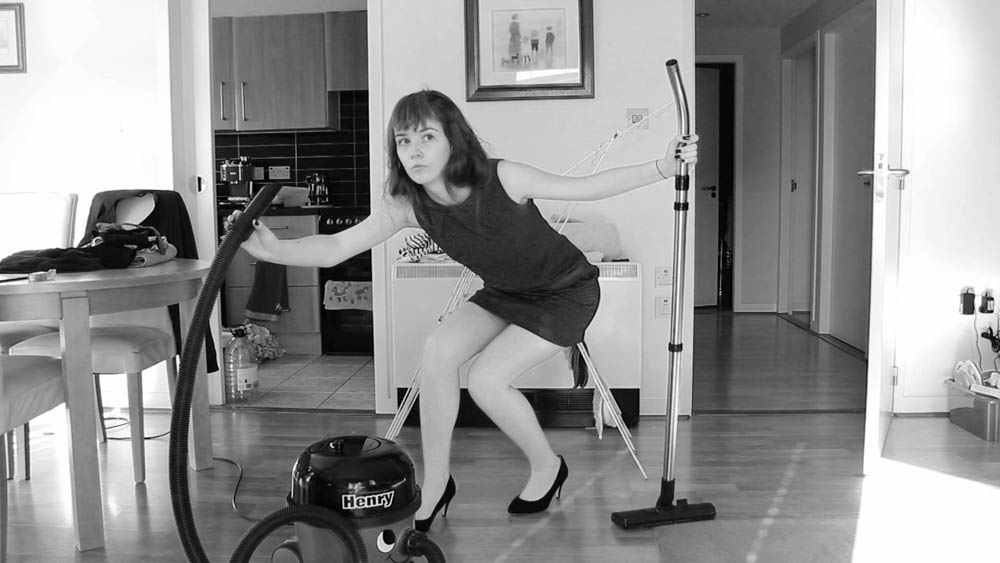
Watch her film below about feminism, her mother and her role in the family. This film was the starting point for her photographs above by re-staging herself as a domisticated female
link to her photo book: Shrinking Violet

Chrissy Knight portraits of Women of Yesterday
Another site of influence to Clare Rae is Francesca Woodman. At the age of thirteen Francesca Woodman took her first self-portrait. From then, up until her untimely death in 1981, aged just 22, she produced an extraordinary body of work. Comprising some 800 photographs, Woodman’s oeuvre is acclaimed for its singularity of style and range of innovative techniques. From the beginning, her body was both the subject and object in her work.
The very first photograph taken by Woodman, Self-portrait at Thirteen, 1972, shows the artist sitting at the end of a sofa in an un-indentified space, wearing an oversized jumper and jeans, arm loosely hanging on the armrest, her face obscured by a curtain of hair and the foreground blurred by sudden movement, one hand holding a cable linked to the camera. In this first image the main characteristics at the core of Woodman’s short career are clearly visible, her focus on the relationship with her body as both the object of the gaze and the acting subject behind the camera.

Woodman tested the boundaries of bodily experience in her work and her work often suggests a sense of self-displacement. Often nude except for individual body parts covered with props, sometimes wearing vintage clothing, the artist is typically sited in empty or sparsely furnished, dilapidated rooms, characterised by rough surfaces, shattered mirrors and old furniture. In some images Woodman quite literally becomes one with her surroundings, with the contours of her form blurred by movement, or blending into the background, wallpaper or floor, revealing the lack of distinction of both – between figure and ground, self and world. In others she uses her physical body literally as a framework in which to create and alter her material identity. For instance, holding a sheet of glass against her flesh, squeezing her body parts against the glass and smashing her face, breasts, hips, buttocks and stomach onto the surface from various angles, Woodman distorts her physical features making them appear grotesque.


Through fragmenting her body by hiding behind furniture, using reflective surfaces such as mirrors to conceal herself, or by simply cropping the image, she dissects the human figure emphasising isolated body parts. In her photographs Woodman reveals the body simultaneously as insistently there, yet somehow absent. This game of presence and absence argues for a kind of work that values disappearance as its very condition.

Since 1986, Woodman’s work has been exhibited widely and has been the subject of extensive critical study in the United States and Europe. Woodman is often situated alongside her contemporaries of the late 1970s such as Ana Mendieta and Hannah Wilke, yet her work also foreshadows artists such as Cindy Sherman, Sarah Lucas, Nan Goldin and Karen Finley in their subsequent dialogues with the self and reinterpretations of the female body.
Here is an article in the Guardian https://www.theguardian.com/artanddesign/2014/aug/31/searching-for-the-real-francesca-woodman
British Journal of Photography http://www.bjp-online.com/2016/01/on-being-an-angel-francesca-woodman-foam-amsterdam/
For those interested in exploring identities, stereotypes, gender, alter-egos through self-portraiture using varies techniques such slow shutters-speeds, use of dressing up, make-up, props, masks, locations (mine-en-scene) Often these images are questioning ideas around truth, fantasy or fiction an involve artists making images in both interior and exterior environments
Juno Calypso won the recent BJP International Award 2016 and is currently exhibiting in London at TJ Boulting Gallery. It was an old picture of a lurid pink bathroom that inspired London-born photographer Juno Calypso to spend a week honeymooning solo at a Pennsylvania love hotel. “My first thought was that I’d be out of my mind to go all that way to take some pictures, but after failing to find anything similar in Europe I knew I’d be even crazier not to go,” Calypso says.


Surrounded by heart-shaped tubs, sparkling mirror lights and her signature anachronistic beauty devices, the Penn Hills Resort became the setting of The Honeymoon,Calypso’s new series of photographs exploring the absurdities of female identity and sexuality.
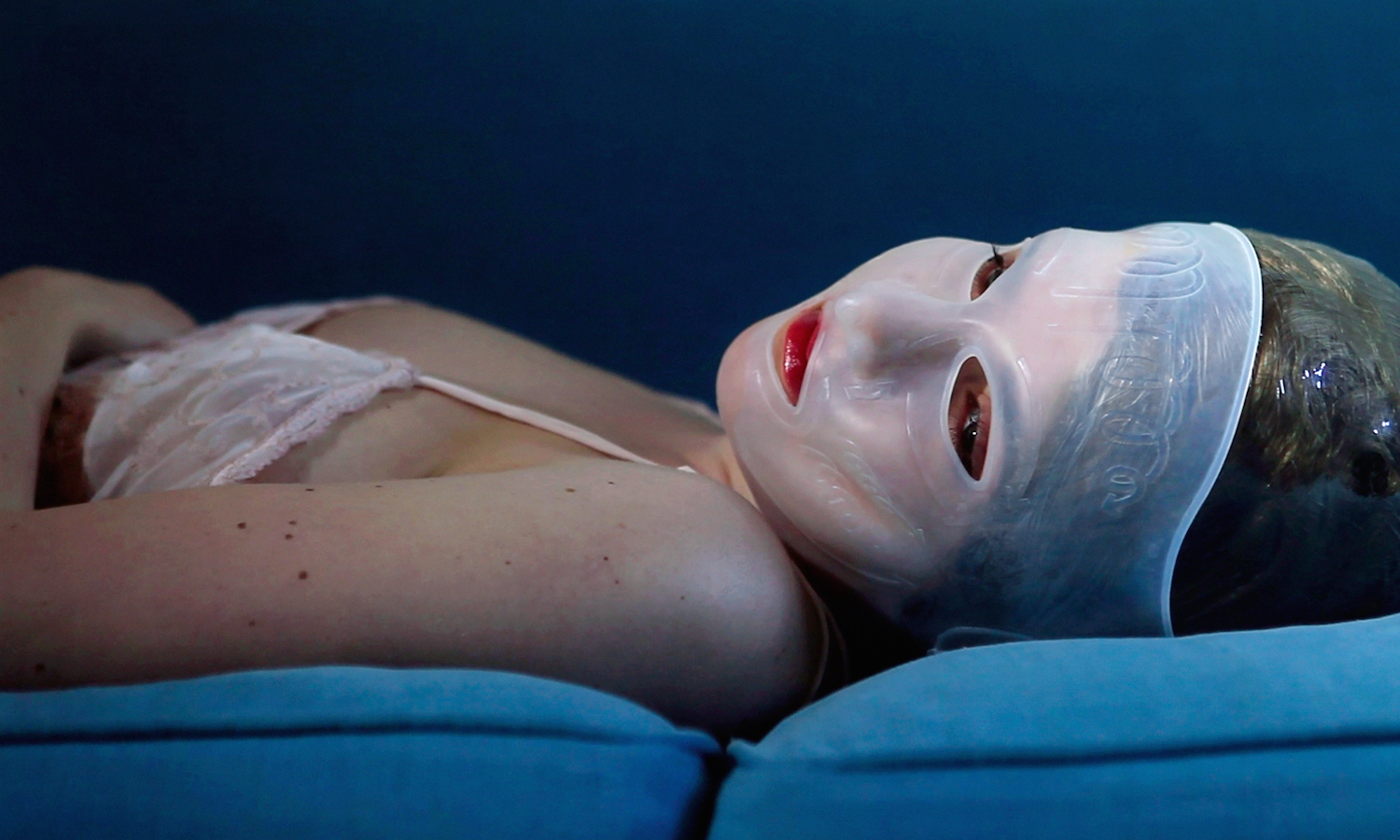

Read article here and also this article on artists exploring their alter-egos and inner selves in photography.
Anne Hardy’s photographs picture depopulated rooms that suggest surreal fictions. Working in her studio, Hardy builds each of her sets entirely from scratch; a labour-intensive process of constructing an empty room, then developing its interior down to the most minute detail. Using the transient nature of photography, Hardy’s images withhold the actual experience of her environments, allowing our relationship with them to be in our imagination.




Tableaux Photography and Staged environments.
Tableaux photography always have an element of performing for the camera. See artists such as, Tom Hunter, Jeff Wall, Gregory Crewdson, Duane Michaels, Sam Taylor Johnson (former Sam Taylor-Wood), Hannah Starkey, Tracy Moffatt, Vibeke Tandberg






Performance and Photography
For those of you who would like to explore Performance and Photography further here is a link to a project we did in 2015 when Tom Pope, was in Jersey as the Archisle Artist-in-Residence.
Study the blog posts below when we were exploring Pope’s practice and the themes of Chance, Change and Challenge . You should be able to find some starting points here.
Here are some of the key concepts that underpin Pope’s work and practice:
Performance, Photography, Chance, Humour/Fun, Repetition, Play
Psychogeography, dérive (drifting), Situationism (link to a ppt: Situationism), Dadaism, Public/Private, Challenging authority, Failure, DIY/Ad-hoc approach, Collaboration, Audience participation
For example, write a manifesto with a set of rules (6-10) that provide a framework for your performance related project. Describe in detail how you are planning on developing your work and ideas. Think about what you want to achieve, what you want to communicate, how your ideas relate to the themes of FREEDOM and/or LIMITATIONS and how you are going to approach this task in terms of form, technique and subject-matter.
A list of art movements that you may use as contextual research. Many of them also produced Manifestos:
Dadaism, Futurism, Surrealism, Situationism, Neo-dadaism, Land/Environmental art, Performance art/Live art, Conceptualism, Experimental filmmaking/ Avant-garde cinema (those studying Media make links with your unit on Experimental film)
Here are a list of artists/ photographers that may inspire you:
Vito Acconci, John Baldessari, Yves Klein, Bas Jan Ader, Erwin Wurm, Chris Arnatt, Richard Long, Hamish Fulton, Joseph Beuys, Chris Burden, Francis Alÿs, , Sophie Calle , Nikki S Lee, Claude Cahun, Dennis Oppenheim, Bruce Nauman, Allan Kaprow, Mark Wallinger, Gillian Wearing, Marcel Duchamp and the Readymade, Andy Warhol’s film work, Steve McQueen, Sam Taylor-Johnson, Marina Abramovic, Pipilotti Rist, Luis Bunuel/ Salvatore Dali: , Le Chien Andalou, Dziga Vertov: The Man with a Movie Camera.
Photography and sculpture
Photographic installations which are site specific and 3-dimensional is very in vogue right now. In the exam paper starting point 4 is about artists exploring the material nature of a photographic image and the idea that photographs can be sculptural. Here are a few artists to explore
Felicity Hammond is an emerging artist who works across photography and installation. Fascinated by political contradictions within the urban landscape her work explores construction sites and obsolete built environments.



In specific works Hammond photographs digitally manipulated images from property developers’ billboards and brochures and prints them directly onto acrylic sheets which are then manipulated into unique sculptural objects. http://www.felicityhammond.com/
Lorenzo Venturi: Dalston Anatomy
Lorenzo Vitturi’s vibrant still lifes capture the threatened spirit of Dalston’s Ridley Road Market. Vitturi – who lives locally – feels compelled to capture its distinctive nature before it is gentrified beyond recognition. Vitturi arranges found objects and photographs them against backdrops of discarded market materials, in dynamic compositions. These are combined with street scenes and portraits of local characters to create a unique portrait of a soon to be extinct way of life.
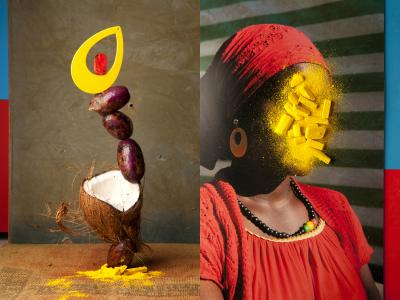

His installation at the Gallery draws on the temporary structures of the market using raw materials, sculptural forms and photographs to explore ideas about creation, consumption and preservation.
Watch our exclusive interview with Lorenzo.
Boyd Webb (born 1947) is a New Zealand-born visual artist who works in the United Kingdom, mainly using the medium of photography although he has also produced sculpture and film. He was shortlisted for the Turner Prize in 1988. He has had solo shows at venues including the Hirshhorn Museum, Washington DC and Whitechapel Art Gallery, London.
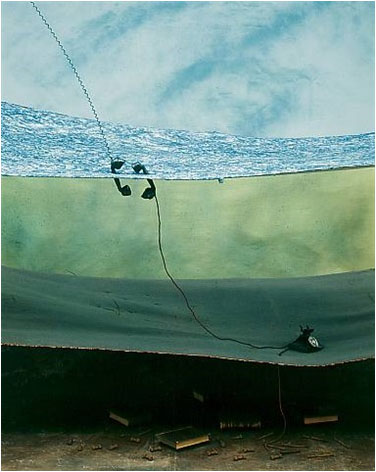
Initially he worked as a sculptor, making life casts of people in fibreglass and arranging them into scenes. He eventually turned to photography and his early work played with ideas of the real and the imagined. Through mysterious and elaborate compositions created using actors and complex sets built by the artist in his studio. In later years his focus shifted to a cool observational style, his work less theatrical and technique less elaborate.
James Casebere pioneering work has established him at the forefront of artists working with constructed photography. For the last thirty years, Casebere has devised increasingly complex models that are subsequently photographed in his studio. Based on architectural, art historical and cinematic sources, his table-sized constructions are made of simple materials, pared down to essential forms. Casebere’s abandoned spaces are hauntingly evocative and oftentimes suggestive of prior events, encouraging the viewer to reconstitute a narrative or symbolic reading of his work.

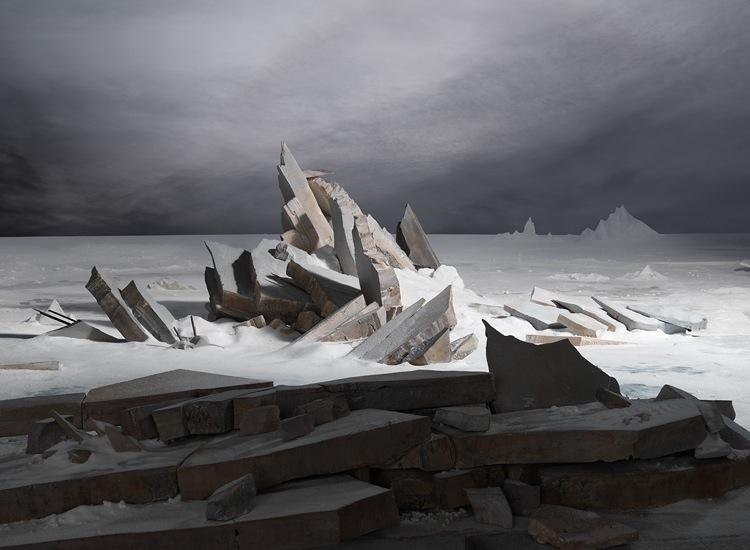
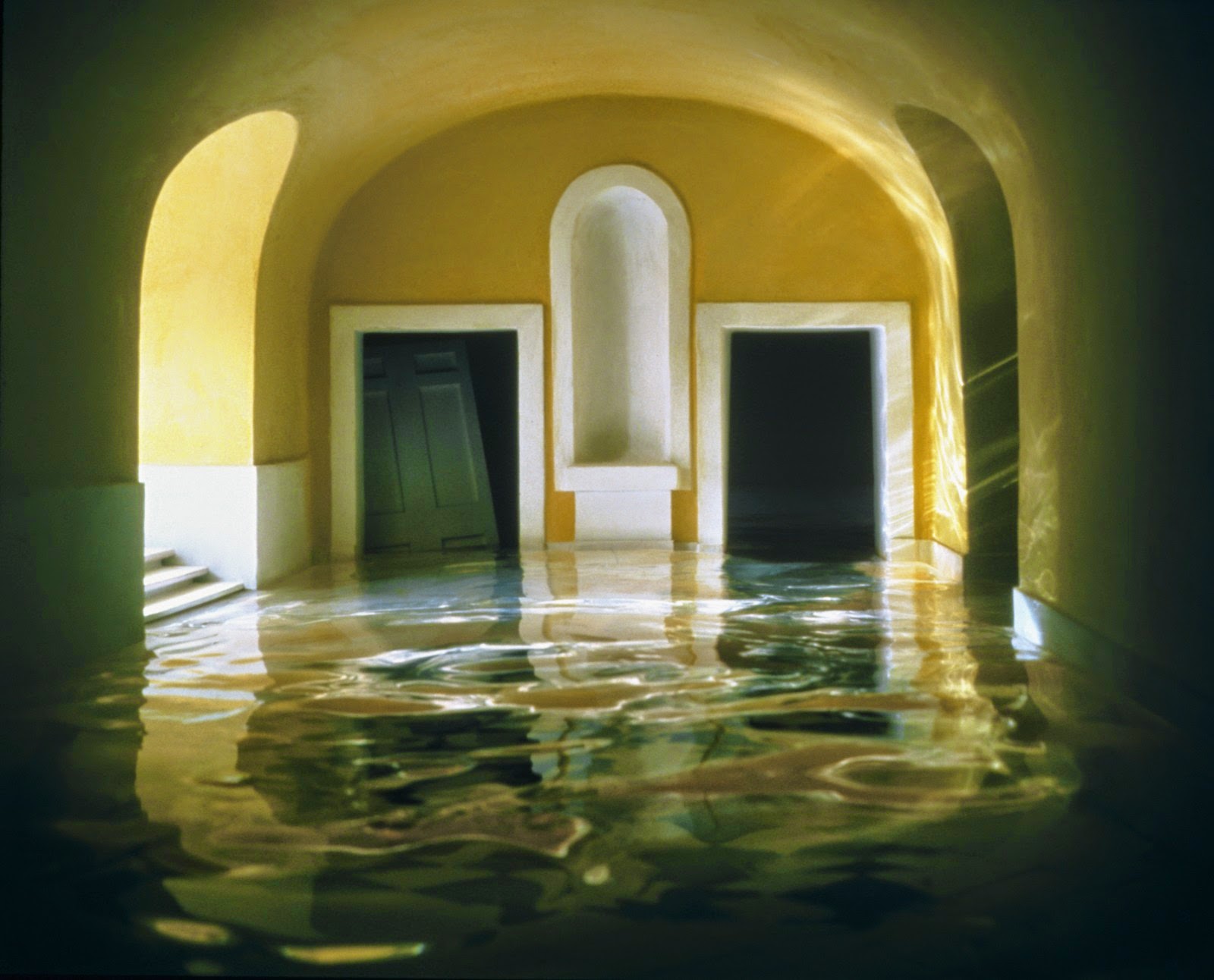

While earlier bodies of work focused on American mythologies such as the genre of the western and suburban home, in the early 1990s, Casebere turned his attention to institutional buildings. In more recent years, his subject matter focused on various institutional spaces and the relationship between social control, social structure and the mythologies that surround particular institutions, as well as the broader implications of dominant systems such as commerce, labor, religion and law.
Thomas Demand studied with the sculptor Fritz Schwegler, who encouraged him to explore the expressive possibilities of architectural models at the Kunstakademie Düsseldorf, where Bernd and Hilla Becher had recently taught photographers such as Andreas Gursky, Thomas Struth, and Candida Höfer. Like those artists, Demand makes mural-scale photographs, but instead of finding his subject matter in landscapes, buildings, and crowds, he uses paper and cardboard to reconstruct scenes he finds in images taken from various media sources. Once he has photographed his re-created environments—always devoid of figures but often displaying evidence of recent human activity—Demand destroys his models, further complicating the relationship between reproduction and original that his photography investigates.
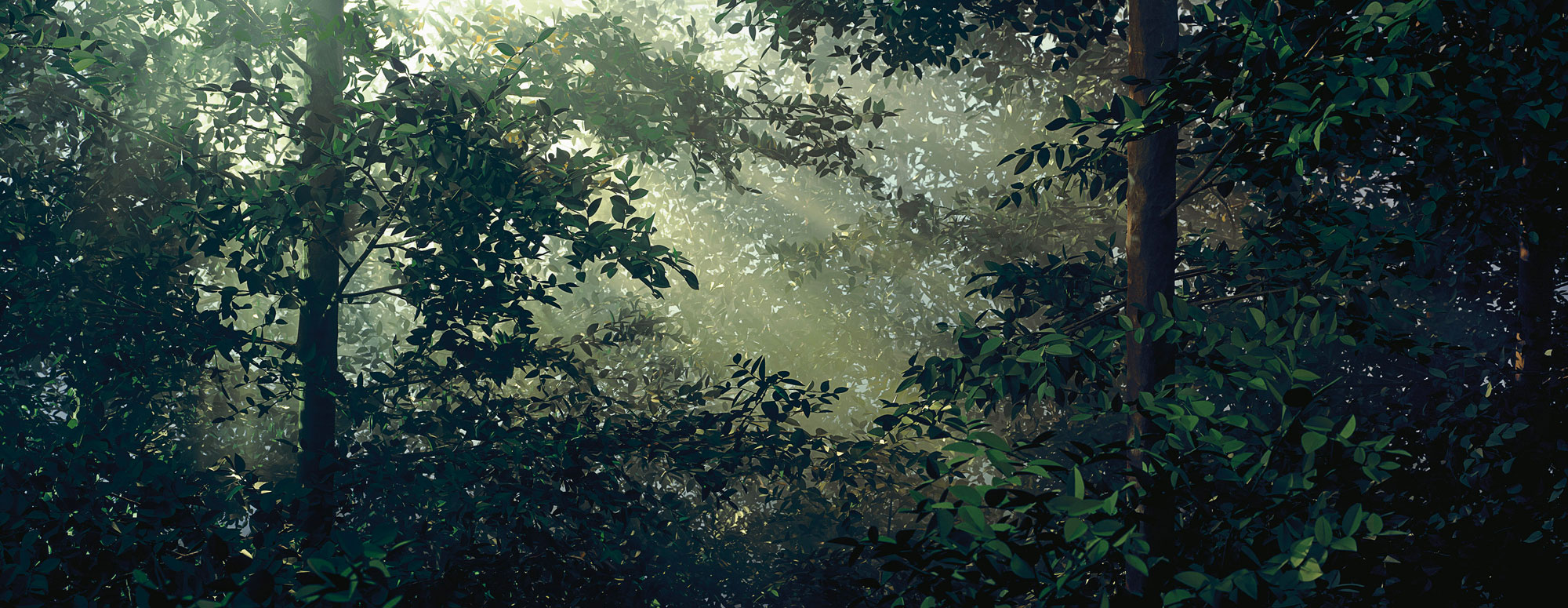
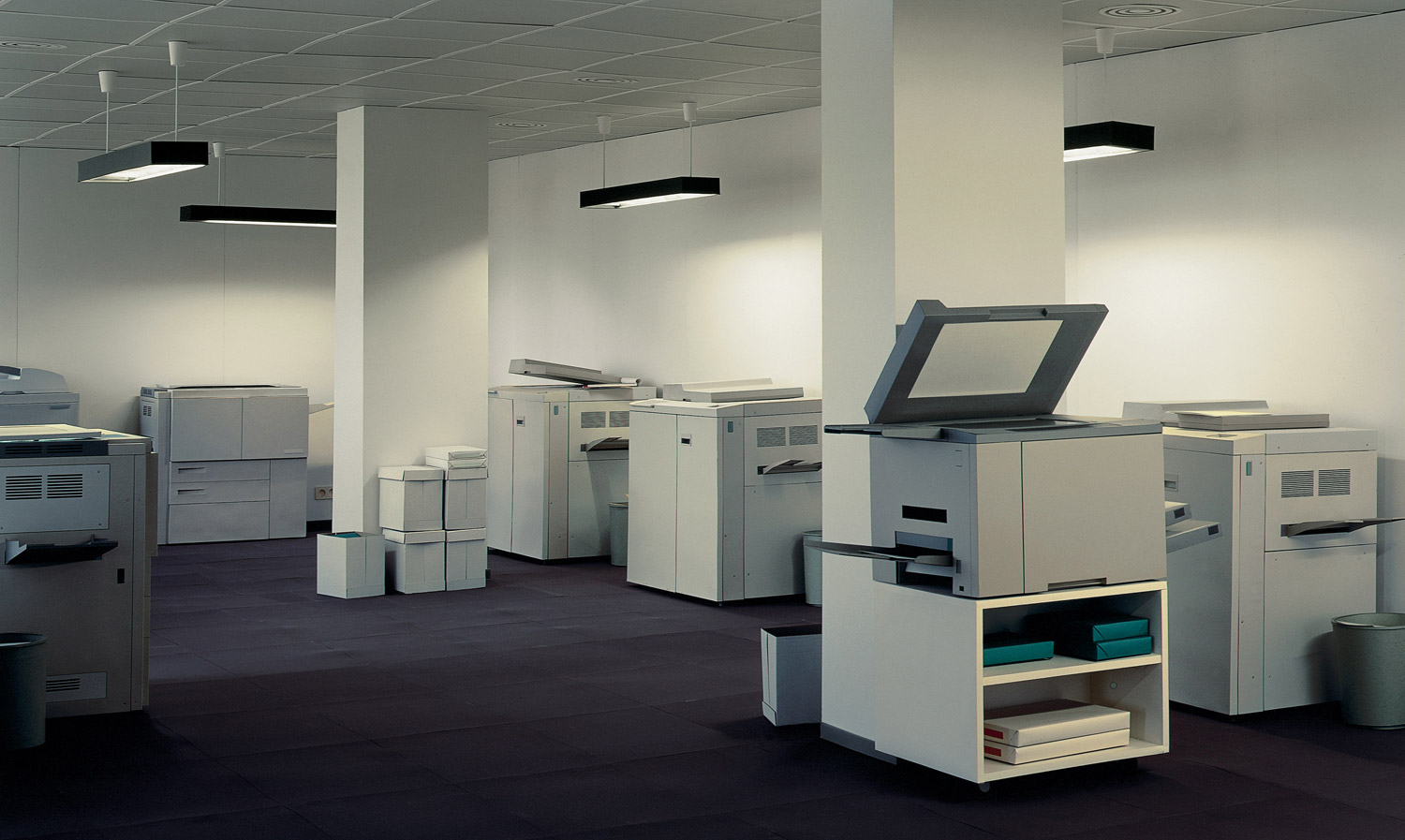
Christian Boltanski (born 1944) is a French sculptor, photographer, painter and film maker, most well known for his photography installations and contemporary French Conceptual style. Boltanski’s subject matters are history and life duration. Vulnerability is his strength, and reflecting upon absence is his way to express his passion for what is real. And so Boltanski builds his own archives, moves shadows around the gallery space, or brings forgotten memories back to the surface through the eyes and faces of strangers that emerge from found photographs; he synchronizes the sound of the human heartbeat to the rhythm of history; he creates settings with old clothing so that individual stories may not be dispersed; he investigates fate and challenges, through irony, the transience of things to propose the art of time.
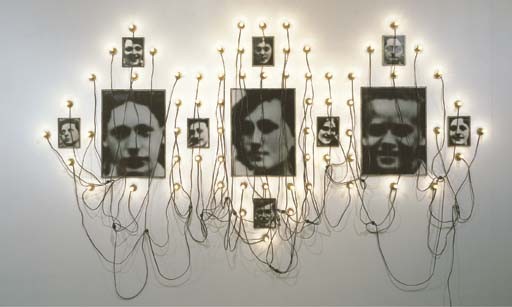


Photo-games
ACTION > PLAY > CHANCE
To get you started on a creative journey we are going to have some fun at playing games with photography. The themes of TRANSITIONS / FREEDOM / LIMITATIONS lend themselves well to explore the concepts of ACTION > PLAY > CHANCE in the image making process. Often a photograph is made with ‘a bit of luck’ in capturing a moment or ray of light allowing for chance to enter the frame. An element of performance is also aligned with photography, the act of making a photograph is a performance in itself, a person in front of a camera may act out a character, persona or pose.
Resurgence in interest around photography’s relationship to performance has increased the awareness of the photograph both as documentation and as a performative work in itself. Recent international exhibitions have explored photography’s relationship to ‘performance’ and the differing ways that artists have used the camera in this arena. Performing photographs looks at how the performative is located within the photograph itself, and in the relationship of the image to the viewer, as well as photography’s relationship to the written and spoken word.
Probably one of the worst things to happen to photography is that cameras have viewfinders.
John Baldessari is often referred to as the father of conceptual art. Central to his practice is language, both verbal and pictorial. In his photo-based work of the early 1970s, he embraced chance, accident, and game-playing, as in the series Choosing (A Game for Two Players): Carrots (1971) (also featuring versions with green beans and rhubarb). He would ask a participant to select three individual vegetables from a selection of the same type (e.g. carrots). S/he would then select one by pointing to it, a photograph documenting the choice. The other vegetables would then be discarded and replaced by two more. The selection process would begin again and further photographs would be taken to record the choosing. The work was finished when the vegetables ran out.
— John Baldessari

Choosing (A Game for Two Players): Carrots (1971) 
Cigar Smoke to Match Clouds That are the Same (By Sight – Side View), 1972-73 
John Baldessari ’Throwing Three Balls in the Air to Get a Straight Line (Best of Thirty-Six Attempts) 1973
In the piece Cigar Smoke to Match Clouds That are the Same (By Sight – Side View), 1972-73 and other works of the period like the artist’s book Throwing Three Balls in the Air to Get a Straight Line (Best of Thirty-Six Attempts) the artist is playing with the ideas of repetition and failure (an essential feature of games). He makes ten attempts to create a puff of smoke from his cigar that exactly matches the shape of a cloud in a photograph stuck to the studio wall.
Watch this video about John Baldessari narrated by Tom Waits as an inspiration first.
TASKS: To begin we will perform a few collective photo games. In the end you will design and perform your own game.
PHOTO-GAME 1: What to photograph?
Each student think of an instruction, an object, place, or scenario to be photographed.
Participants: Whole class.
Aim: Every student have to make one image of each instruction
Method: All the instructions will be collated and given to all students in the class.
Location: Outside/ Inside
Evidence: Produce blog post with a selection of edited images and an evaluation
Deadline: One week > 22 March
Upload all images in a folder and print a set of small prints (9x13cm = 4 per A4 sheet). Lay all images in a huge grid on the tables so that vertically you can see every students response to the same instruction, while horizontally you will be able to discern each student’s approach or style. As an example, here is a list of instructions, as an example:
A red ball
A tree and a dog
An ugly photograph
A political argument
A kiss
A shallow focus image of a bar of soap
a random photograph
An unambiguous photograph
Grass and concrete
An old-fashioned photograph
A futuristic photograph
a blue car and a white car
Nigeria
Timeless beauty
Flowing water
PHOTO-GAME 2: Photo-dice (Zen for Photography)
An artwork which consists of 5 dice, each describing a decision leading to a photograph.
Participants: Whole class, each student roll the dice once.
Aim: Roll the five dices and write down instructions
Method: Produce a set of 10 images using the instructions
Location: Outside/ Inside
Evidence: Produce blog post with a selection of edited images and an evaluation
Deadline: One week > 22 March




dav 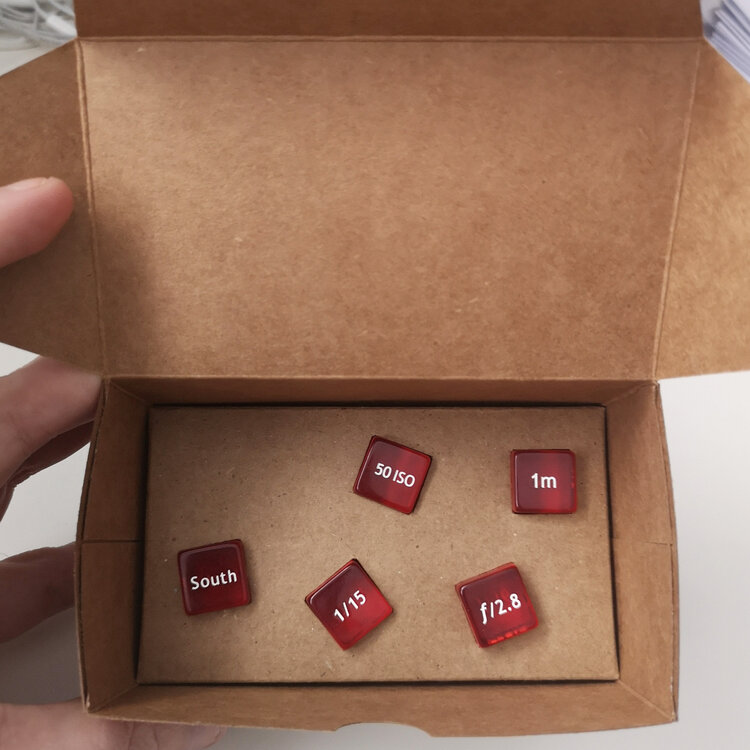
dav 
PHOTO-GAME 3: Boxing Match
Participants: Pair up with a fellow student
Aim: Capture your opponents portrait while he/she avoids being photographed.
Method: Use your camera instead of throwing punches
Location: Outside
Evidence: Produce blog post with a selection of edited images and an evaluation
Deadline: One week > 29 March
Technical: Camera settings
- Select S-mode (shutter speed priority) and Auto ISO on camera.
- Begin with fast shutter speed 1/250 and reduce by 1 stop > 1/125 another stop > 1/60 and another >1/30
- Frame each shot using a standard lens with a focal lenght of 50 mm.
PHOTO-GAME 4: Throwing a Ball
PHOTO-GAME 5: The 12 PARISH CHALLENGE
Join the Jersey Climate Conversation and take part in their active challenge. You need to find the 12 QR codes that are placed in each parish of the island. When you find the code, scan it and you’ll learn something about the area and the environment. Use your camera and explore the area that is described. You could choose to visit a few places to visit each day, or you could try and visit them all during the week. Minimum is to explore at least one parish – even if tis the one that you live in. You can drive to each location, park the car and walk around exploring the area. Alternatively consider cycling.
Read more here

Lighting: Think about quality of light. Sunny = bright colours/ dark shadows. Overcast: clouds produce soft diffused light
Timing: Different time of the day produces different light. For example early morning or late afternoon the light is softer and warmer. After rain light is reflected on wet surfaces. Avoid midday white light which harsh and has no character.
Technical: Camera settings
- Choose Manuel mode or Aperture priority and choose a mid aperture of f/8.
- Check that your shutter speed does not get slower than 1/60 sec otherwise use a tripod for slower shutter speeds, or increase ISO. Be creative with the way you photograph an area using different ways to frame a landscape, view or structure.
- Look for details too, get up close and make abstract images.
- If you encounter people on your walk stop them ask if you can make a portrait of them.

PHOTO-GAME 6: GOOGLE EARTH
With travel restrictions in place it is almost impossible to go abroad or visit exotic destinations. What would it be like to visit a location on Google Maps made famous by a particular photographer and, using Street View, attempt to make pictures like them? Here are some examples from staff and students at Thomas Tallis School who run Photo Pedagogy. Follow them on Instagram too!
Here’s my first attempt at doing this. I visited Greenwood, Mississippi and tried to look through William Eggleston’s viewfinder. Thanks to @artpedagogy for the prompt. Where next? New York as Roy DeCarava? Paris as Brassai? Reggio Emilia as Luigi Ghirri? Marseille as Germaine Krull? Where would you go and as whom?
Inspired by artists like Michael Wolf and Doug Richard, why not take a virtual field trip using Google Street View? I decided to visit Auckland, New Zealand this afternoon and took a few snaps while I was there. I spotted a severed arm, a building on fire and a high risk crash site complete with red light cameras. It was an action packed adventure! Where would you choose to go on your virtual school trip?

Year 13 photographers visited Moscow (as promised) this morning on their virtual school trip and used William Klein as inspiration who famously documented his experience of the city in the early 60s. Looking at some if his images from the book ‘Moscow/Mockba’ they explored the streets and returned with their own William Klein style pictures.
PHOTO-GAME 7: Photography Genre Treasure Hunt
Another one from the team at Photo Pedagogy. This task explores the following genres: travel, nature, self-portrait, landscape, still life, fine art, portrait, fashion, architecture. But which is which?
Participants: Individual task
Aim: Capture the ball in mid-air and three balls in a line
Method: Use your camera try and frame the ball
Location: Outside
Evidence: Produce blog post with a selection of edited images and an evaluation
Deadline: One week > 29 March
Technical: Camera settings
- Select S-mode (shutter speed priority) and Auto ISO on camera.
- Begin with fast shutter speed 1/250 and reduce by 1 stop > 1/125 another stop > 1/60
- Frame each shot using a standard lens with a focal lenght of 50 mm.
Here are three quick responses to the Genre Treasure Hunt from someone’s at home, at work and in someone living in New Zealand. Such interesting differences that foreground the creative decision-making process.
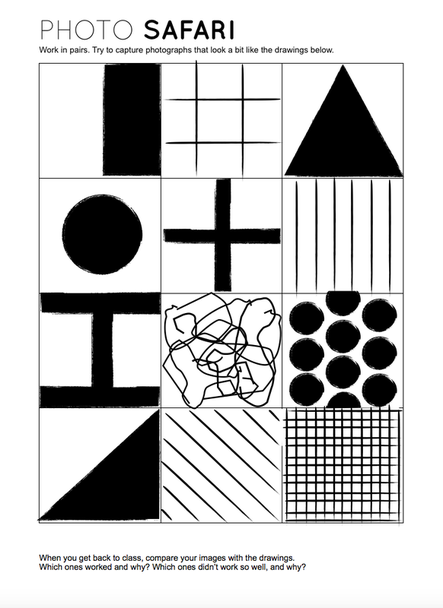
EXTENSION 1: Make a multi-genre single image.

EXTENSION 2: Make a sequence of images
Sometimes constraints can help us break out of habitual behaviours. How might you explore photographic genres whilst observing self-imposed rules? For example, choose a genre of photography. Create a sequence of images observing the following rules:
1. You must be sitting down when you make the photograph
2. The photograph must be black and white
3. You can only photograph another photograph
4. Your photograph must be square.
The first few pictures here are still life photographs of Josef Sudek’s glass studies from an Internet search.

The second set are travel photographs of virtual journeys to visit prisons in Greenwich. What other rules might generate unusual images? Suggestions on a postcard please…
PHOTO-GAME 8: PHOTOGRAPH EVERY IMAGE YOU ENCOUNTER IN ONE DAY
What types of image will you encounter today? Why are they there? Who put them before you? What do they mean to you (or others)? How might they influence your thoughts, emotions, opinions and actions?AND THEN… how will you photograph these encounters – e.g. formally, objectively; with a documentary or snapshot aesthetic; with attention to surface, light, pixels – and why? You can look specifically at photography but you could easily explore imagery of art and design that you encounter in one day. This photo game is mostly, trying to instigate activities with a focus on the ‘active’ – getting students away from screens and thinking, noticing, questioning, creating.
PHOTO-GAME 9: IMPROVISATION – HOW TO CONSTRUCT A NARRATIVE
FINAL TASK: DEVELOP YOUR OWN PHOTOGAME
The greatest freedom is to have no choice. Make a set of parameters within which you will work. This could be a geographic parameter (one city block for instance), or a psychological, thematic, or technical one. The point is to create a method of working where you make some very strict and precise choices about how you will not work. The stricter the better.

Here is a project based on developing your own Photo Game devised by PhotoPedagogy with have some helpful guides you can download.
This book features hundreds of assignments, ideas, stories and anecdotes from photographers across the world.
In 2015 Tom Pope came to Jersey for a 6 month residency with Archisle in the Photographic Archive of the Société Jersiaise and produced an exhibition and installation I Am Not Tom Pope, You Are All Tom Pope featuring a number of diverse and new work incorporating elements of photography, performance, video and sculpture. As part of this exhibition Tom made The Last Portage where he in collaboration with friend and the public dragged a boat across Jersey from Gorey Harbour to St Ouen’s. Go to his website to see full version of the film and many other examples of his unique work. Here are some of the key concepts that underpin’s his work and practice:

Just for Fun 
Just for Fun 
Fountain Bike 
Diddle for the Middle 
Diddle for the Middle 
Break Shot 
Playing in the Parlour 
Playing in the Parlour 
Over the Edge
Performance, Photography, Chance, Humour/Fun, Repetition
Play, Psychogeography, dérive (drifting), Situationism, Dadaism Public/Private, Challenging authority, Failure, DIY/Ad-hoc approach, Collaboration, Audience participation
Here is a clip where Tom is talking about his work Over the Edge
Here is a link to Tom Pope’s website where you can see a number of different works exploring the relationship between Performance and Photography using both video and stills photography to records his public performances and events.
Another link to a video teaser about his work which was a solo-exhibition So It Goes at London Gallery George and Jorgen
BLOG
You are expected to show evidence of the following three EEEs on the blog for each PHOTO-GAME you complete.
EDITING: For each shoot select and adjust your best set of images (as per instructions in game) using either Lightroom / Photoshop using basic tools such as cropping, exposure, contrast, tonality, colour balance, monochrome etc.
EXPERIMENTING: Make sure you demonstrate creativity and produce at least 3 different variations of the same image, eg. colour/ monochrome, montage/ grid, juxtaposition/ sequence etc.
EVALUATING: Compare your images and photographic experiments and provide some analysis of artists references that has inspired your ideas and shoots. Use the Photo-Literacy matrix below.

INSPIRATIONS
The exam project is about exploring an idea and provide evidence of experimentation, imagination and making creative connections with the work of others through an intelligent and informed discourse (debate). Here are further inspirations and lines of enquiries that you can follow on from having a go at some of the photogames. The suggested activities below are borrowed from Photo Pedagogy – see more here
Serious Play
Chance, indeterminacy, games and instructions.
Dream City
Urban streets, the city at night, love in the city and liminal spaces.
Convulsive Beauty
The familiar made strange, the close-up, poetic objects and disguise.
Performing for (and with) the Camera
Looking at how performance artists use photography and how photography is in itself a performance.
Performing for (and with) the Camera
The notion of performance in photography is tricky. Students might wonder about the relationship between photography and what they might think of as the antics of conceptual artists. Asking students to design and execute performances as a prelude to documentation with the camera might initiate a threshold experience for some, pushing them well outside their comfort zones. Whilst inducing a stressful experience isn’t the point of this set of exercises, it is designed to encourage students to really question their relationship to photography, reminding them that it is a “hybrid kind of picture making, democratic and diverse.” Photographs perform a range of functions in our lives and making art is only one of them. Linked to this is photography’s relationship to time. We primarily take photos to remember, to stop time, to capture the ephemeral, to fix a live event. As a consequence, all photographs “remind us of things lost“.
Performance and live art is all the rage, largely due to the opening of Tate’s new Switch House extension, a space designed to showcase art made since the 1960s. New galleries, like the Tanks, and existing spaces, like the Turbine Hall, enable audiences to engage with art that would otherwise feel restricted in conventional galleries. Nevertheless, Tate has also explored the relationship between performance art, live art, happenings etc. and lens based documentation in a recent exhibition entitled ‘Performing for the Camera‘. Photography has been used to capture performances since its invention – from the stars of the Victorian stage to the art happenings of the 1960s, right up to today’s trend for selfies. This exhibition explores the relationship between the two forms, looking at how performance artists use photography and how photography is in itself a performance.I was lucky enough to attend Tate’s Summer School this year. I’ve written a blog post about this experience and some of the lessons I took away from it. Chief among these was the determination to use some of the strategies employed by artists Anna Lucas and Alex Schady and to encourage my students to engage with the relationship between performance and lens based image making.
What follows, therefore, are some playful ideas and experiments that we have explored so far this term.

Yves Klein with Harry Shunk & János Kender ’Leap into the Void’ 1960 
Bruce Nauman ’Self-Portrait as a Fountain’ 1966-7 
Douglas Huebler ’Duration Piece #4′ 1969 
John Baldessari ’Throwing Three Balls in the Air to Get a Straight Line (Best of Thirty-Six Attempts) 1973 
Keith Arnatt ’Self-Burial (Television Interference Project)’ 1969

Masahisa Fukase ‘From Window’ 1974 
Masahisa Fukase ‘From Window’ 1974 
Amalia Ulman ’Excellences & Perfections’ 2014-15
Some initial questions:
- Why are light and lens based media often used to document performances and live events?
- Why might some performance artists not want their work to be documented?
- Is it possible to document a performance in such a way as to capture its spirit/atmosphere and, therefore, do it justice?
- Which artists have considered the lens based document to be integral to their performance based practice?
- In what sense is making a photograph or film a kind of performance in itself?
- How has social media and the use of smartphones influenced the way we perform for the camera?
Some research
This article by Liz Jobey is a great place to start. She quotes Allan Kaprow, inventor of the ‘Happening’, on the subject of artists’ relationship with everyday life:
Artists must become preoccupied with and even dazzled by the space and objects of our everyday life, either our bodies, clothes, rooms or, if need be, the vastness of Forty-second Street… we should utilise the specific substances of sound, movements, people, odours, touch. Objects of every sort are materials for the new art: paint, chairs, food, electric and neon lights, smoke, water, old socks, a dog, movies, a thousand other things that will be discovered by the present generation of artists… Young artists of today need no longer say, “I am a painter” or “a poet” or “a dancer”. They are simply artists. All of life will be open to them.
— Allan Kaprow
Writing in The Guardian about the Tate exhibition, critic Adrian Searle comments on the contemporary relationship between camera, photographer and viewer:
Photographic space becomes a theatre. Sometimes the photographer is witness, sometimes collaborator, sometimes the one in front as well as behind the camera. When we are photographed – mugshot, passport photo, press shot, selfie – we are all performing, for ourselves and for other people, if not for the camera. Nowadays we do it on YouTube and Instagram and Twitter, too, and any other platform you can think of. Which of my avatars shall I show you today?
— Adrian Searle
Photography is a great tool for noticing, for paying attention to the miraculous in the everyday. Everything from brushing ones teeth to playing a Beethoven sonata might be considered a kind of performance and lens based media which, in the form of mobile devices, can be used to document (and create) both a mundane and a remarkable performance.
The Tate exhibition presents different kinds of relationships between camera and performance:
TATE GALLERY: PERFORMING FOR THE CAMERA
Additional video resources
This film about the pioneering work of Joan Jonas contains some wonderful footage of her work ‘Song Delay’ which is currently on display in the Switch House at Tate Modern. Simon Baker, Tate’s photography curator,gives us an introduction to the exhibition ‘Performing for the Camera’ in this short video. And here is Romain Maider, one of the artists included in the Tate show, discussing his practice.
And here is Romain Maider, one of the artists included in the Tate show, discussing his practice.
Tate Modern’s Performing for the Camera exhibition explores the relationship between photography and performance through works by Ai Weiwei, Andy Warhol, Cindy Sherman, Yves Klein and Francesca Woodman. Curator and art critic Morgan Quaintance takes a look.
Serious Play
Chance is an important theme in art and photography. The first systematic investigations of chance were begun by the Dadaists and Surrealists in the 1920s. Marcel Duchamp and Jean (Hans) Arp created works of art according to the laws of chance. The Surrealists, taking their cue from Dada, embraced chance as a new principle.
I am trying to make my photography automatic, to use my camera as I would a typewriter.
— Man Ray
The word the Surrealists used to describe the operations of chance was ‘automatism‘. André Breton used the word in his definition of Surrealism in the 1924 manifesto:
SURREALISM, noun, masc., Pure psychic automatism by which it is intended to express, either verbally or in writing, the true function of thought. Thought dictated in the absence of all control exerted by reason, and outside all aesthetic or moral preoccupations.
Influenced by the theories of Sigmund Freud and his experiences of soldiers suffering from mental illness during the First World War, Breton conceived of artists (poets first and then visual artists) as discoverers of a hidden reality, a sur-reality, beyond the superficial facts of existence. By embracing chance through ‘psychic automatism’ he proposed to reconfigure our relationship to the world and ourselves. For the Surrealists, chance provided a series of creative strategies that offered to liberate the unconscious and create “convulsive beauty“.
The real importance of automatism lay in the fact that it led to a different relation between the artist and the creative act […] the surrealists conceived themselves as explorers and researchers rather than ‘artist’ in the traditional sense and it was discovery rather than invention that became crucial for them.
— Michael Richardson
This kind of utopian energy and revolutionary fervour can seem hopelessly naive to us now. But imagine a world recovering from the death and destruction of the ‘great’ war, a time of fantastic new discoveries in science and industry that would alter mankind’s relationship to time and space – the motor car, air travel, the wireless, the theory of relativity – not to mention photography, still in its relative infancy as an art form. Western culture prior to 1914 had prized logic and the rational and yet this had led to the horror of trench warfare. Automatism was therefore an antidote to logic – a deliberate attempt to seek a new kind of sense, one based on chance associations.
gallery of images:
3 Standard Stoppages’ by Marcel Duchamp is an exploration of the role that chance can play in the creation of a new kind of art. Duchamp rejected painting in order to experiment with new forms. He chose existing objects, calling them Readymades, and displayed them in art contexts, thus changing their meaning. His use of chance processes was another way to question the conventional methods of making works of art. Duchamp dropped three metre–long pieces of thread onto a canvas, then cut wood the shape of their silhouettes to suggest the idea of indeterminacy. Even standard length pieces of thread, he suggests, when allowed can re-arrange themselves into different shapes thus bringing into question the notion of standardisation. This idea may relate to the theory of Pataphysics invented by the French writer Alfred Jarry to describe the ‘science of imaginary solutions’, and explicitly designed to ‘examine the laws governing exceptions, and … explain the universe parallel to this one’.

RULES OF THE GAME
Suggested Activities:
- Students devise a game of choice that requires photographic documentation. Consider the most appropriate way to compose and display the set of imagesStudents may wish to explore the many ways in which artists and photographers use titles to challenge, confuse and intrigue viewers. For example, Magritte’s famous painting of a pipe has two titles, one written on the canvas ‘This is not a pipe’ (in French) and an additional title drawing attention to the game untrustworthiness of pictures The Treason of Images.
- Students explore the relationship between words and images, either the titling of individual pictures or whole collections, so that the viewer is required to puzzle over the connection between the visual and textual information. Students may wish to investigate the theory of semiotics and notions of the connotative and denotative meanings in photographic images.
- Chance and indeterminacy are important ideas in the aleatory music of John Cage. He employed a range of devices including the I Ching so that he was not totally in control of the resulting music. Challenge students to create their own system for creating aleatory photographs.
- George Brecht’s 1957 essay on Chance Imagery details a variety of techniques used by artists to introduce indeterminacy into their work including coins, dice, numbered wheels, cards, bowl drawing, automatism and random numbers.
- Students could explore other artists whose practice embraces collaboration. For example, Sophie Calle and Vito Acconci have both explored collaboration with strangers. Students devise a photographic activity that requires the collaboration of a stranger to complete it.
- In 1953, artist Robert Rauschenberg famously erased a drawing by fellow artist Willem de Kooning, thus calling into question the very nature of the work of art. Ask students to devise an activity with a fellow photography student inspired by this experiment.
- Challenging the conventions of art making was an important strategy of the Dadaists and Surrealists. Ask students to make a list of the ‘rules’ associated with making a successful photograph E.g. image in focus, framing of subject, rule of thirds, no obstructions etc. Now ask students to create a set of images which deliberately break one or more of these conventions.
- Encourage students to practice Blind Photography. This involves covering the viewfinder and/or viewing screen of the camera so that it is not possible to see a preview of the image before clicking the shutter. The idea is to photograph by instinct, giving up as much control as possible to the camera. This can be further developed by blindfolding the photographer. A classmate acts as the photographer’s guide, helping them navigate a particular space safely, whilst the blindfolded photographer makes a set of images.
- Explore the work of contemporary artists for whom instructions and play are important ideas. For example, Sol Le Witt’s photographs were often not taken by the artist himself. Erwin Wurm draws instructions for his collaborators to create One Minute Sculptures. Conceived by curator Hans Ulrich Obrist, do it is an exhibition of artists’ instructions, that began in Paris in 1993. It has become the longest-running and most far-reaching exhibition ever.
- Sometimes an unconventional process reveals unusual and indeterminate outcomes. For example, artist Andrew Wright creates images by drilling holes into canisters of slide film.
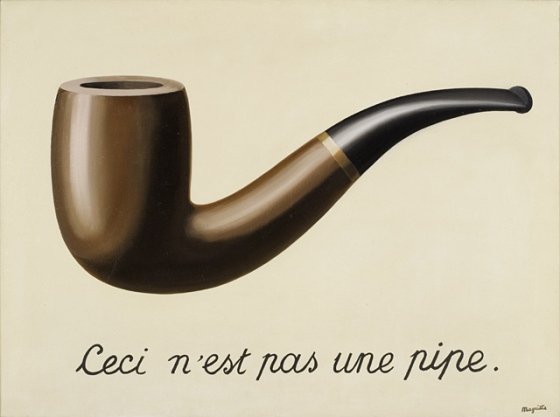
René Magritte, The Treason of Images, 1928-9 
Vito Acconci – Following Piece, between October 3 and 25, 1969 
Erwin Wurm – One Minute Sculpture
transition- initial mindmap
When given the choice between the theme of “transition” or “freedom/limitations”, I chose “transition” as I felt it was the best way to express different styles and concepts of photography than the previous project, which overlapped the themes of “freedom/limitations”, so as to develop my skills and knowledge further.

I decided to create a photobook for this final exam project as my previous project was a film and I felt it would be better to broaden my field and attempt another method of presenting a photographic series. Additionally, the medium of still images presents different challenges and advantages than moving images, which I’m going to pursue.
PHOTOBOOK STRUCTURE IDEAS:
- use of opposing imagery to reflect transition from winter -> summer/ death -> life
- following the process of growth from seed to grown plant
- seasonal changes in the environment, i.e. weather
- close-ups of signs of human aging and youth
- juxtapositions: natural images with human ones, similar close-ups and patterns, opposing landscapes
Exam Theme- Initial Ideas
Transition
After being given the choice of Freedom/Limitations or Transition, I decided to explore the exam theme of Transition as I had mainly focused on themes of ‘liberation’ and ‘rebellion’ in my previous project.
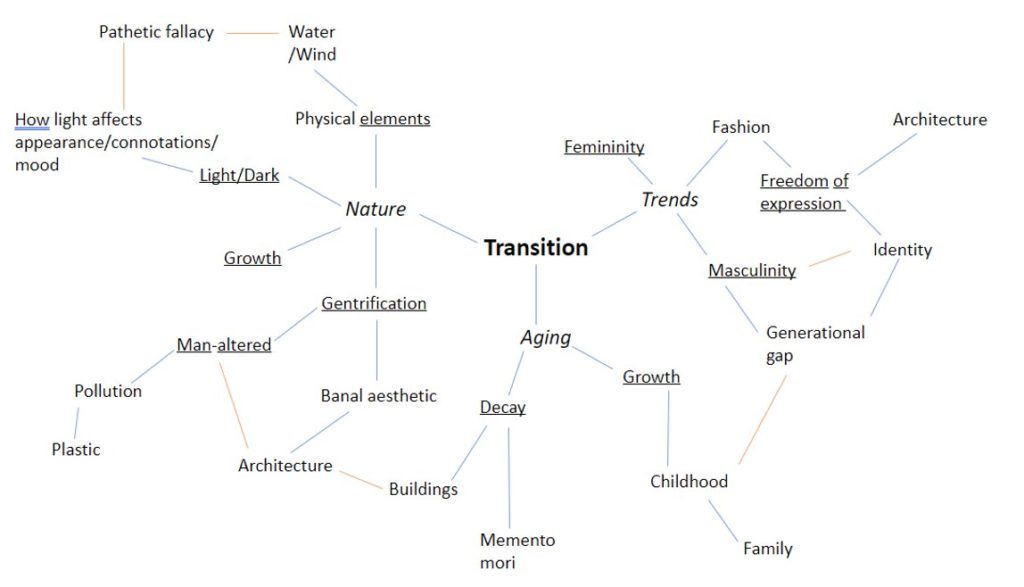
In order to develop ideas about the nature of my project, I created a mind map. I started with the three things that I initially associated with the word ‘transition’, which were: Nature, Aging and Trends (political/social/cultural). Having established these three sub-themes, I noted down ideas about Light and physical elements and how different elements or lighting can manipulate mood (Pathetic fallacy). I also noted down ideas about Gentrification and architecture, as well as gender, decay and aging.
Artists to explore
Lewis Baltz:
Important figure in the New Topographics movement of the late 1970s. In the New Topographics, “The pictures were stripped of any artistic frills and reduced to an essentially topographic state, conveying substantial amounts of visual information but eschewing entirely the aspects of beauty, emotion and opinion,.” “[…] rigorous purity, deadpan humor and a casual disregard for the importance of the images.”
Gentrification and the Banal Aesthetic:
Lucien Hervé:
Hungarian photographer. He was notable for his architectural photography, beginning with his work for Le Corbusier, who was a French architect, designer, urban planner and one of the pioneers of what is now regarded as modern architecture.
He aimed to create “cinematic visual experiences unfolding over time.”
Architecture: Light and form
Irina Souiki:
Peeling paint, crumpled wallpaper and empty chairs are a few of the unexpected beauties that Irina Souiki has found while photographing abandoned buildings. Her images pay attention to the fine detail that creates decaying beauty.
Urban Decay:
Gerry Johansson:
Tokyo
Swedish photographer. He makes “straight and pragmatic” photographs with “an objective view of a geographic location.”
Banal Aesthetic:
Elle Pérez:
American photographer whose work explores gender identity, intimacy, vulnerability, and the relationship between seeing and love. Pérez is a gender non-conforming trans artist.
Gender Identity and expression:
Gillian Wearing:
British artist whose conceptually driven photographs and videos investigate power dynamics and voyeurism in everyday life.
transition mood board
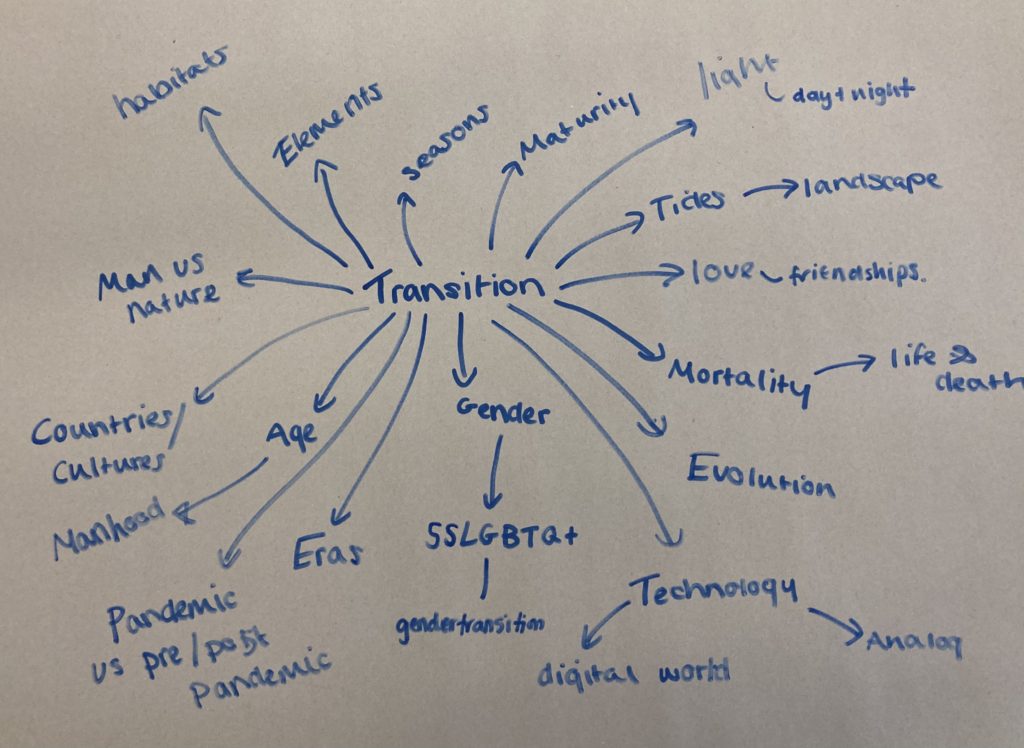
Final Design Outcome+ Evaluation- Staring at the speaker
Book Preview
Transition moodboard & And Mindmap
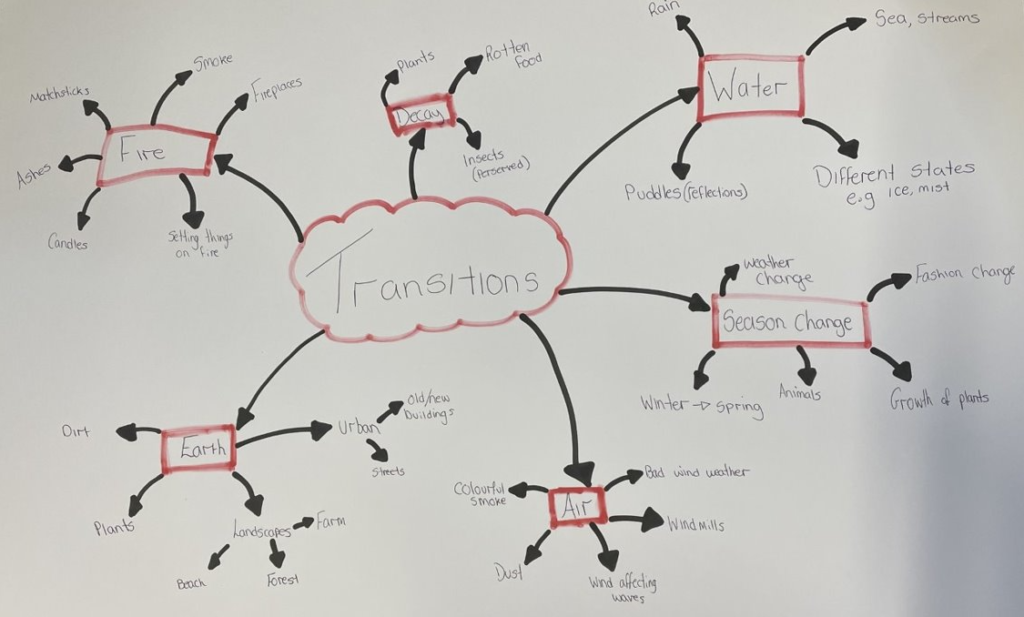
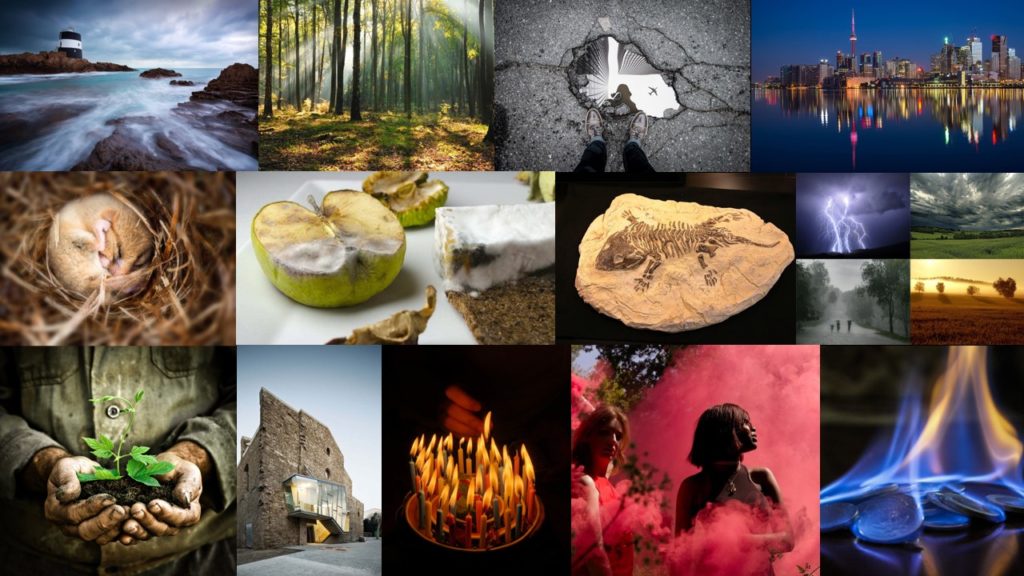
artists to reference – limitations/freedoms
- Velázquez
- Sol LeWitt
- William Kentridge
- Christina Balit
- Anne Desmet
- Alex Webb
- Rong Rong
- Lisette Model
- Laetitia Vancon
- Simone Peerdeman
- Margaret Mitchell
- Marinka Masséus
- Angelica Elliott









































